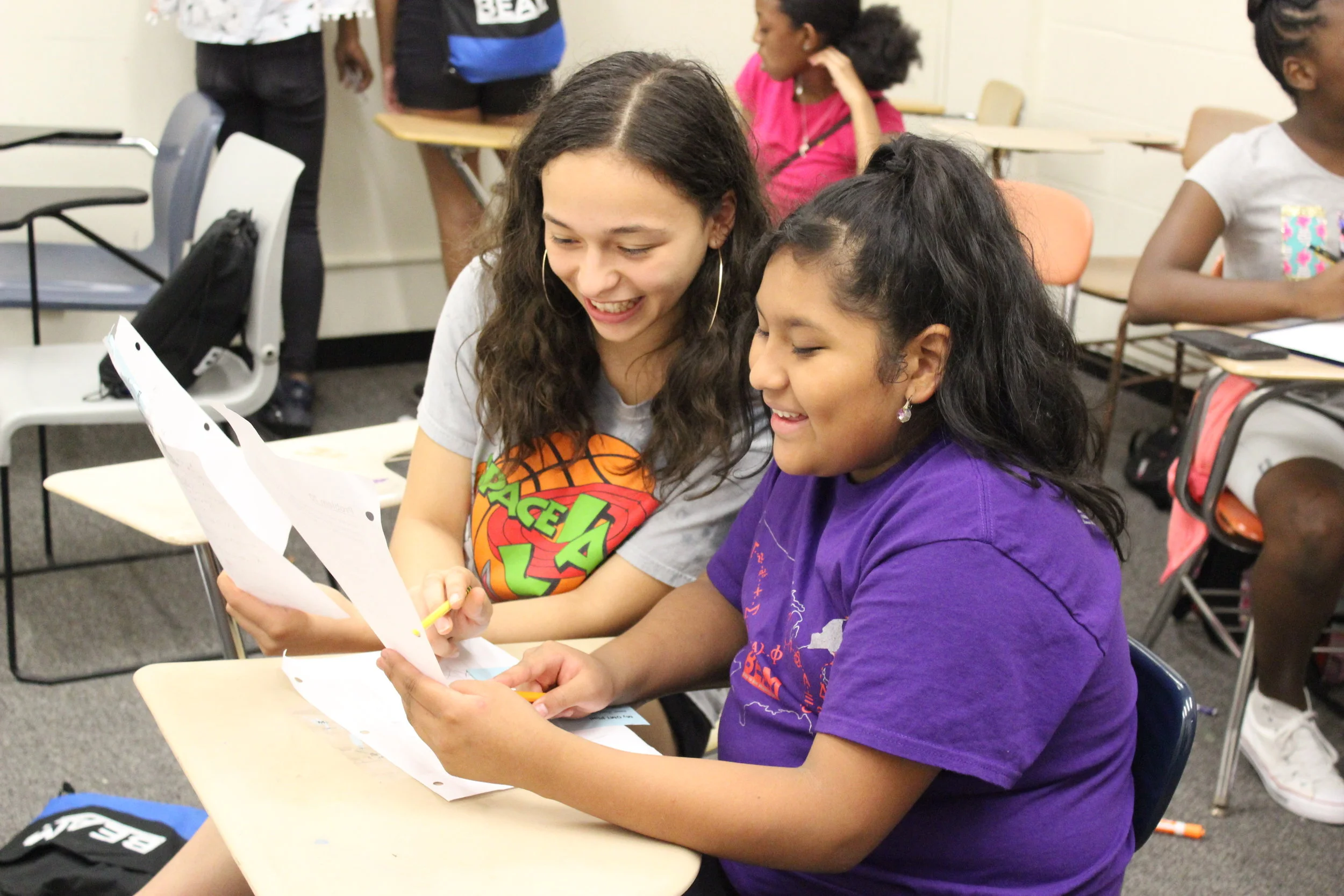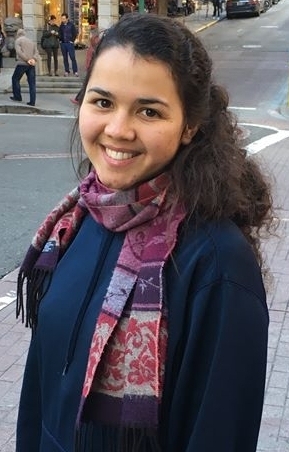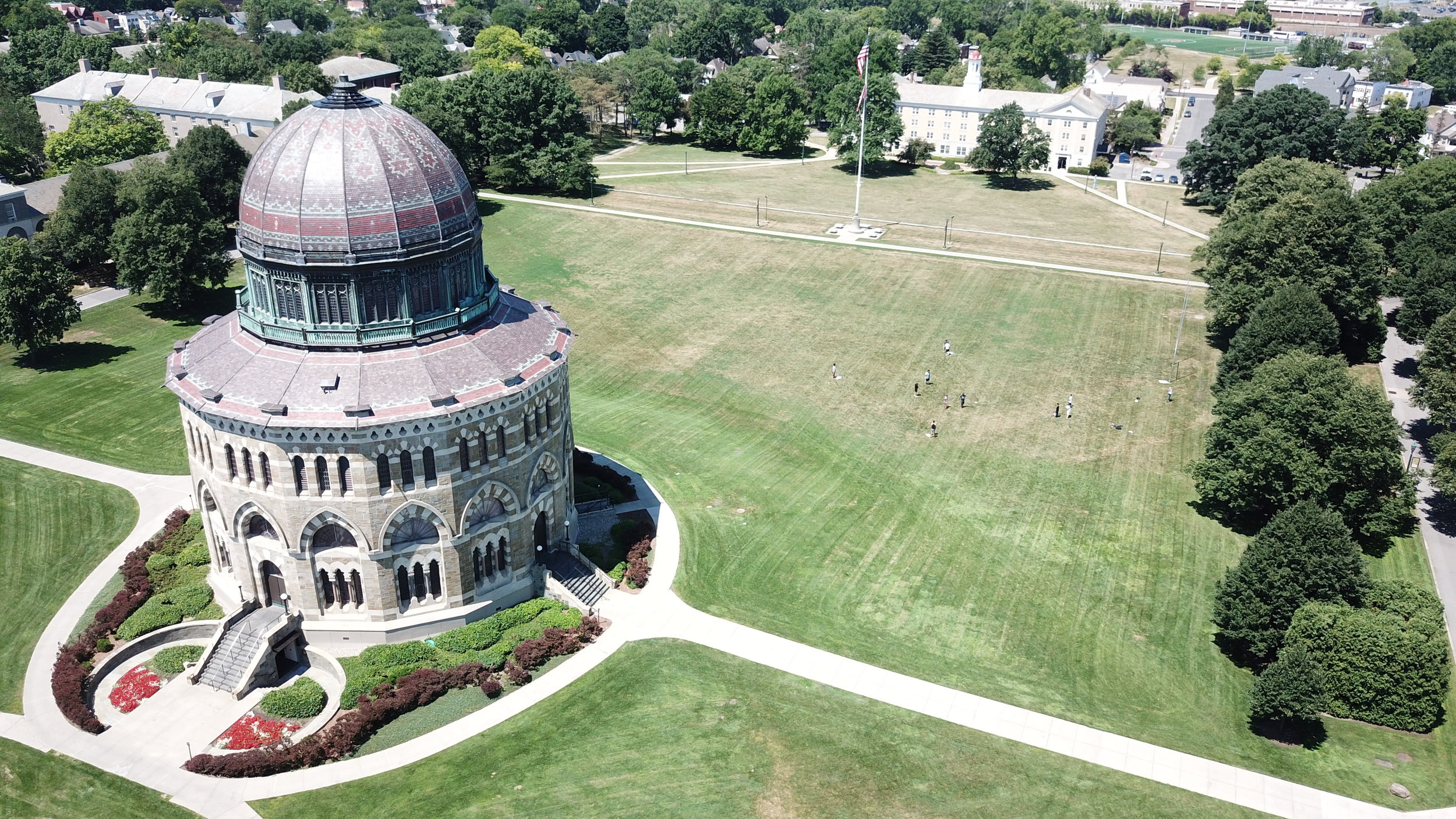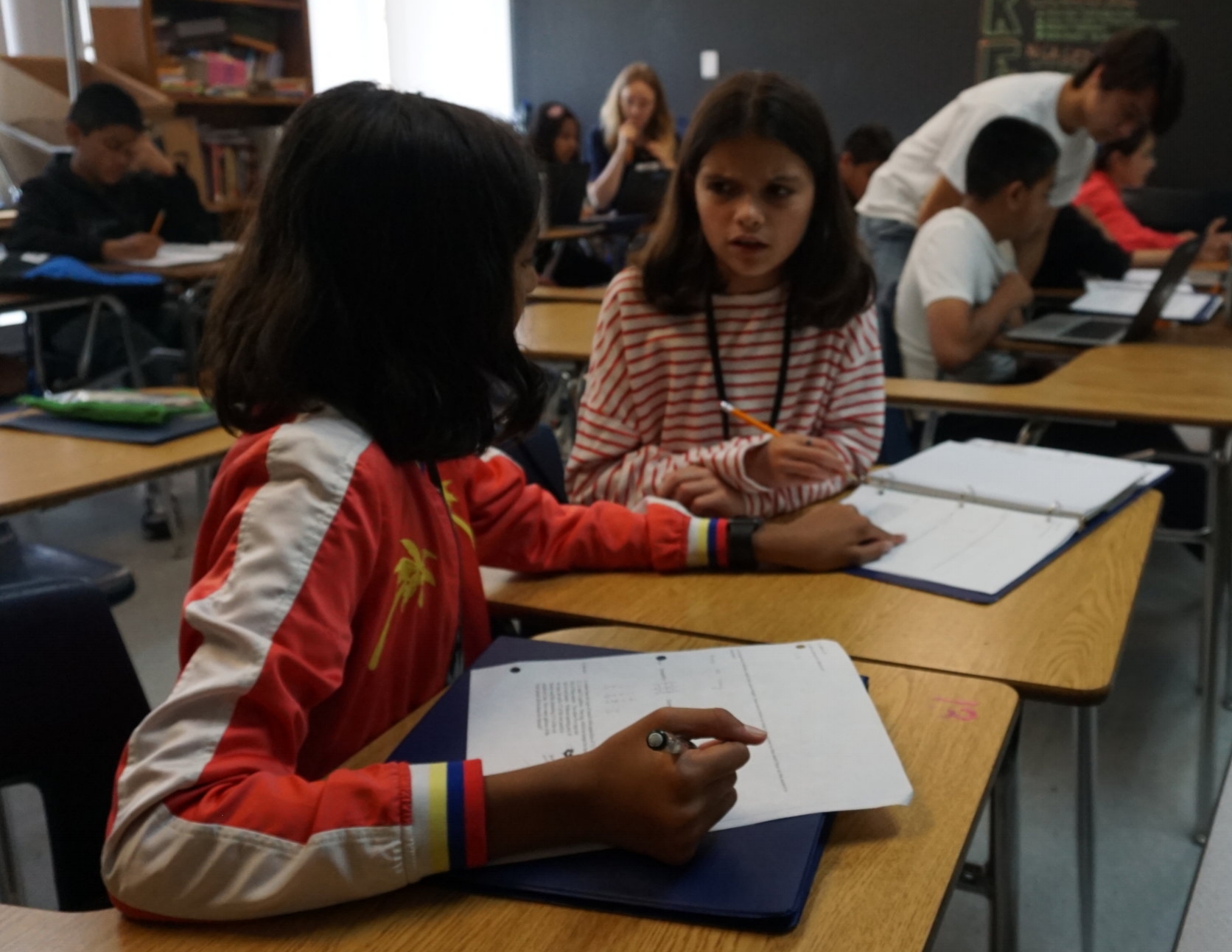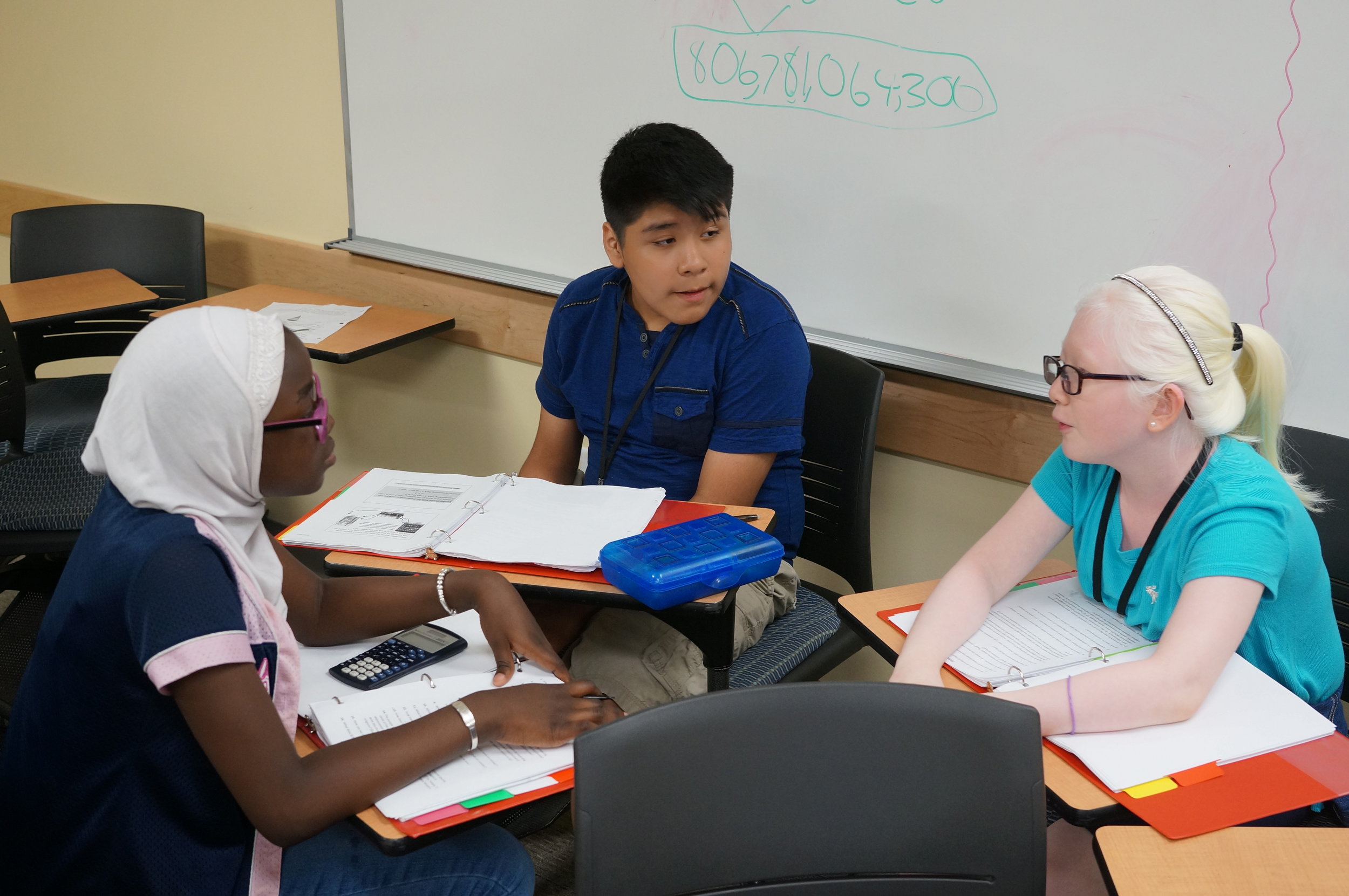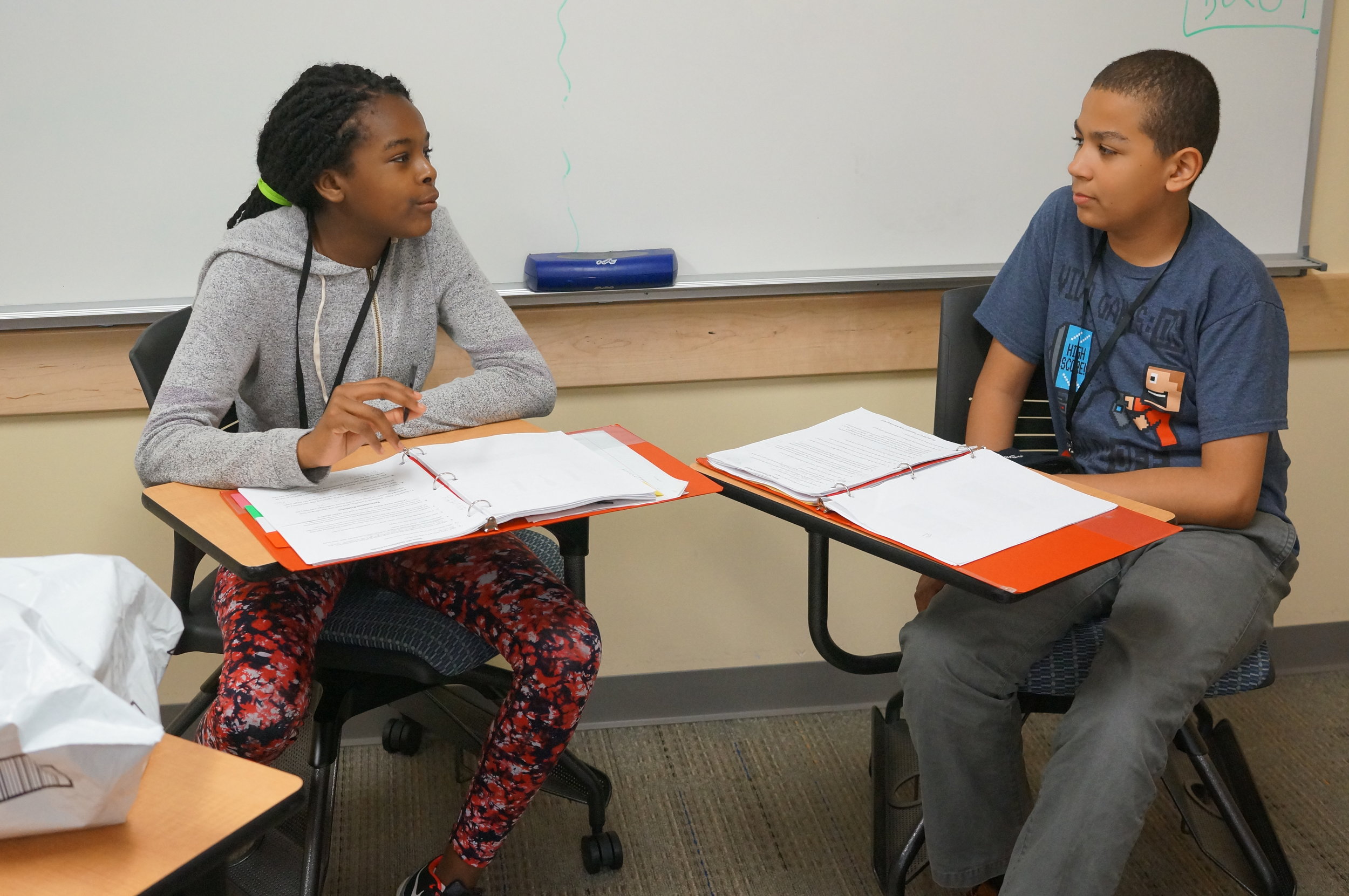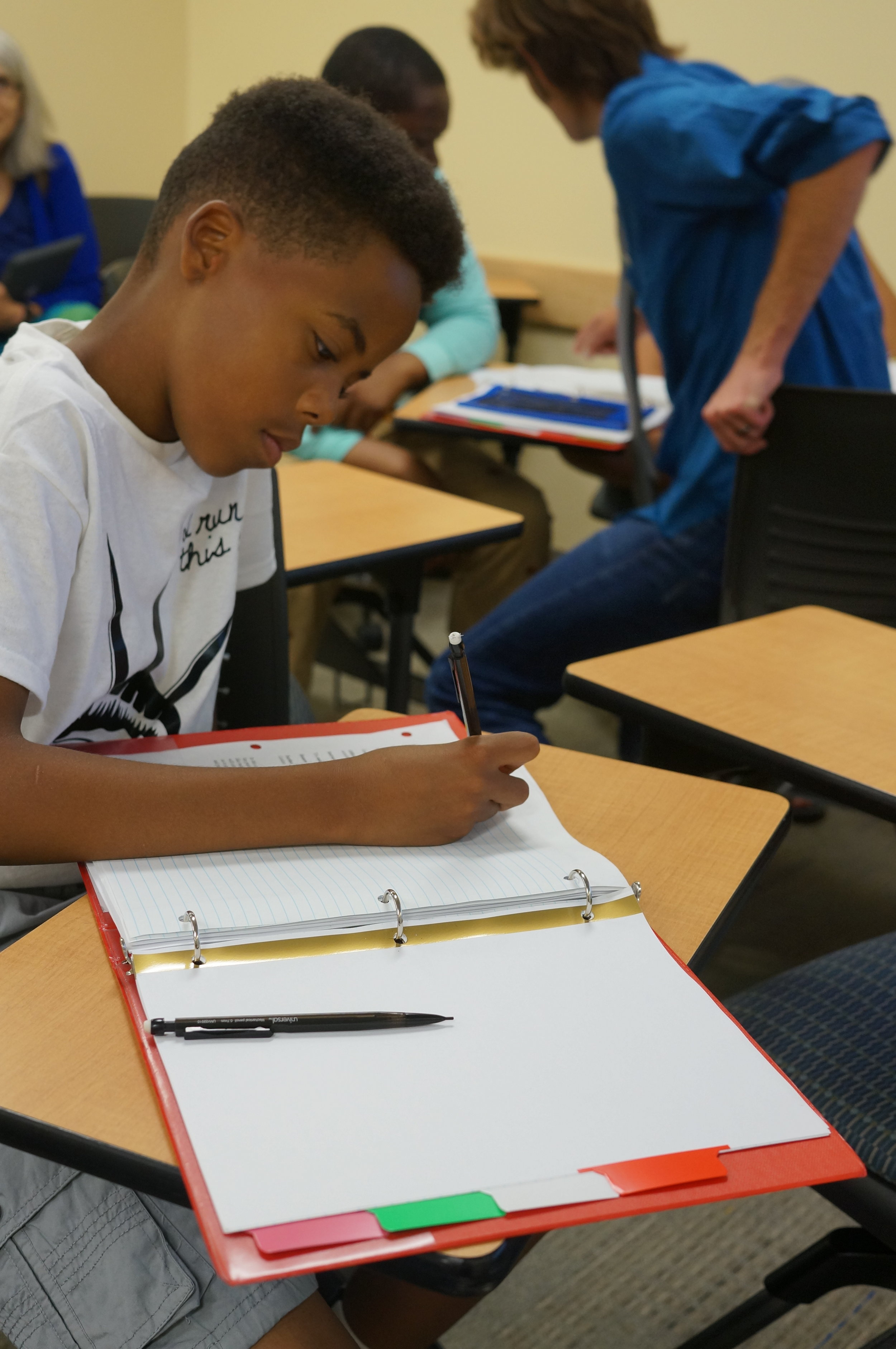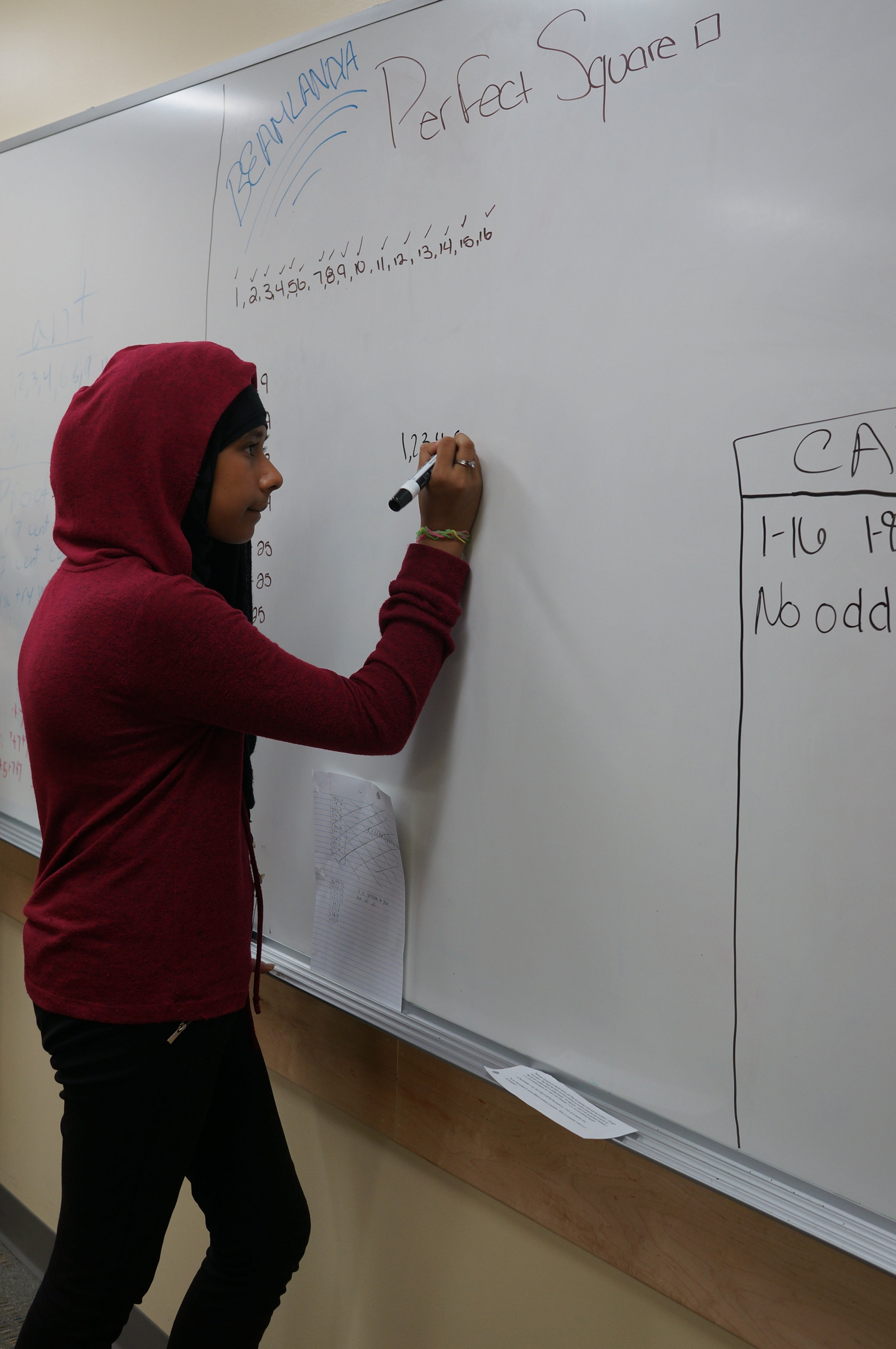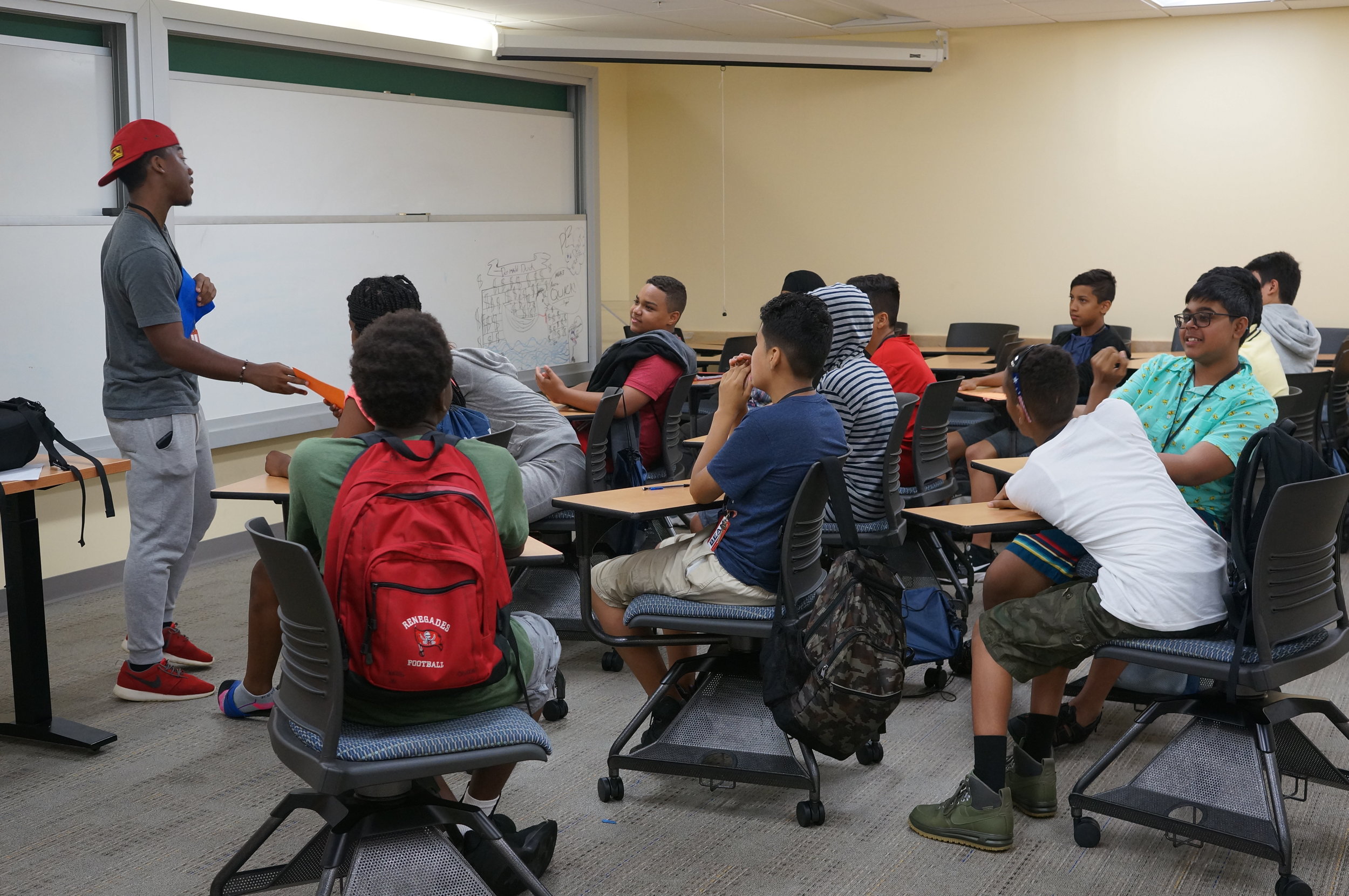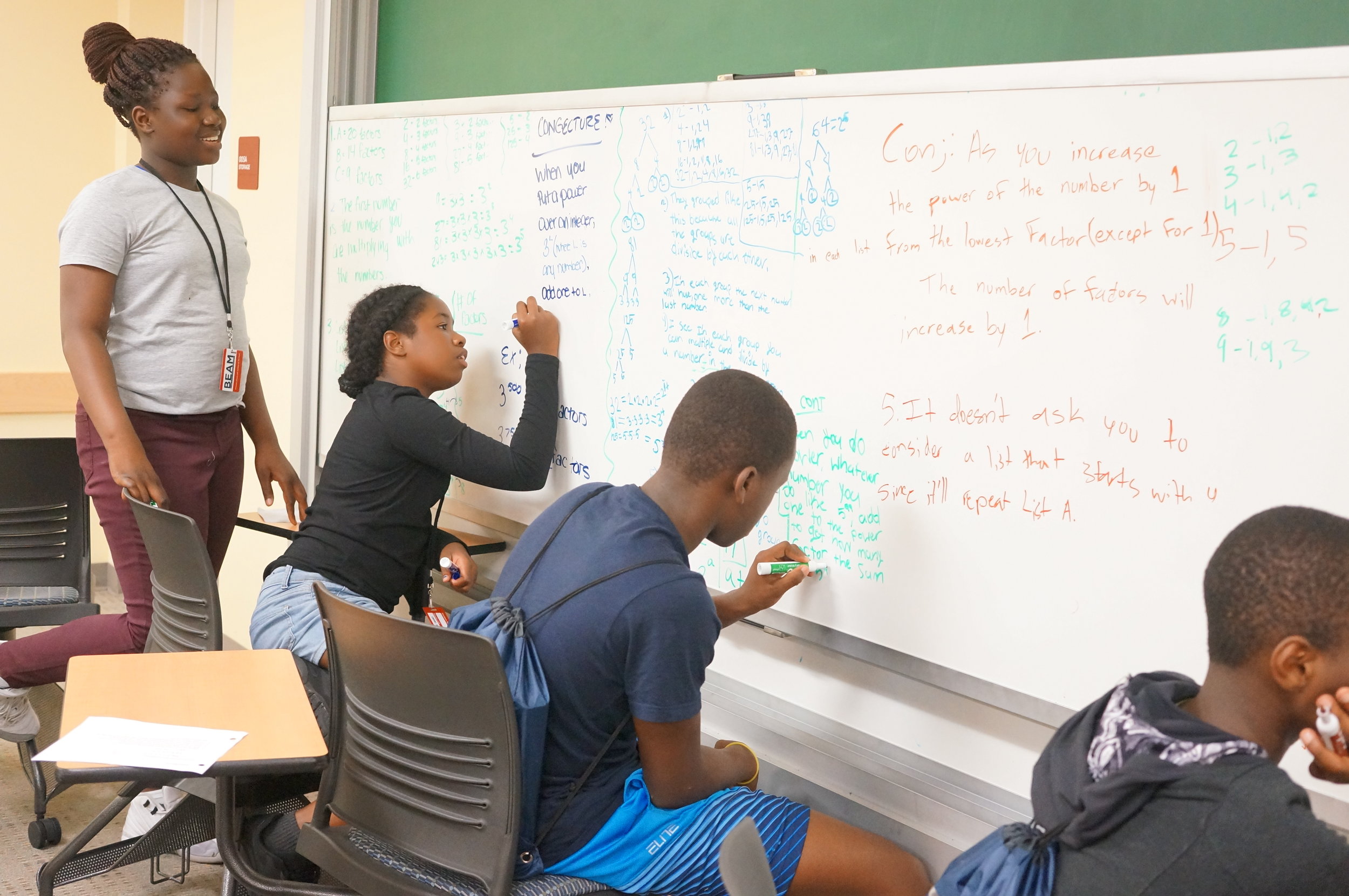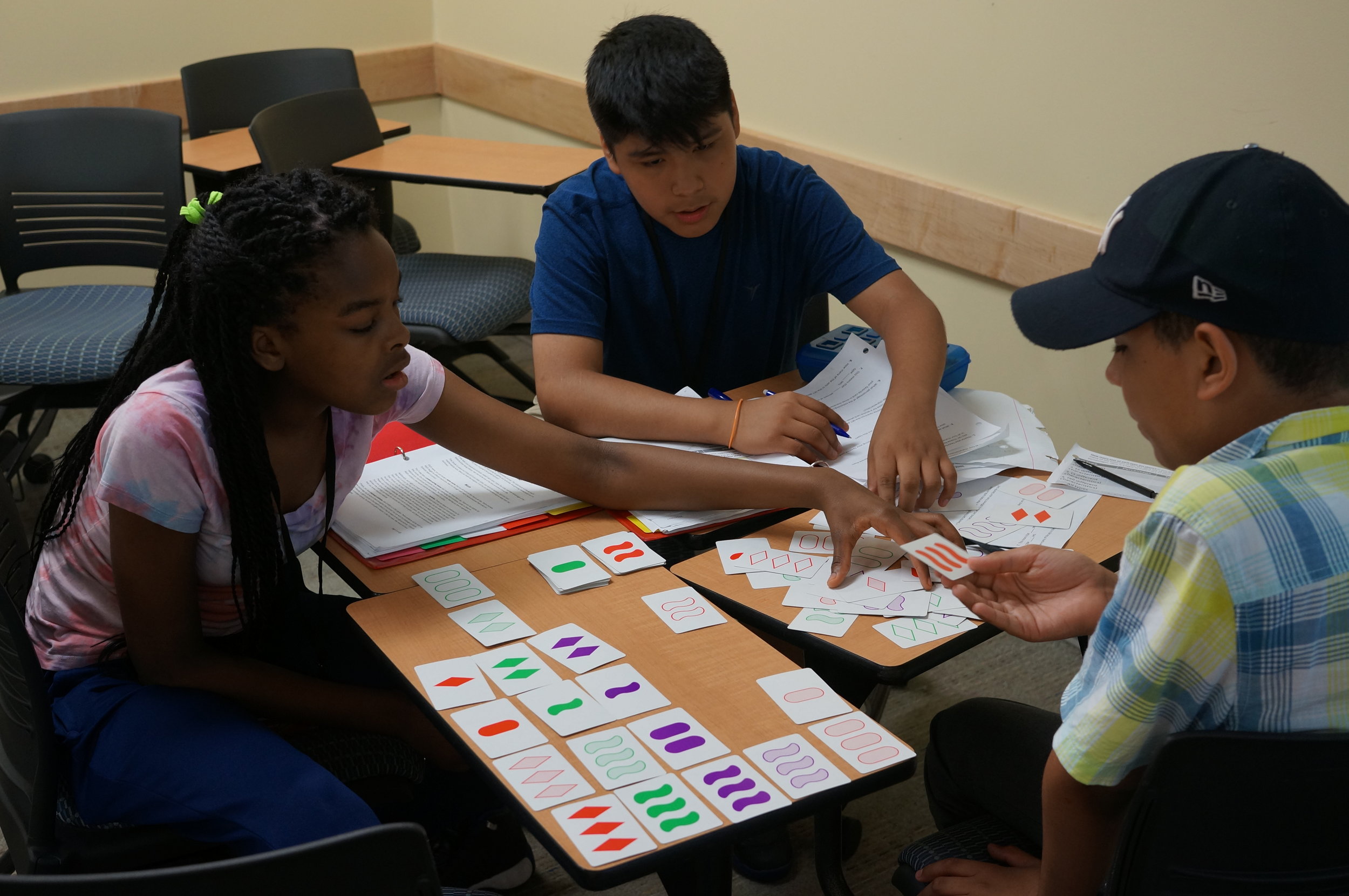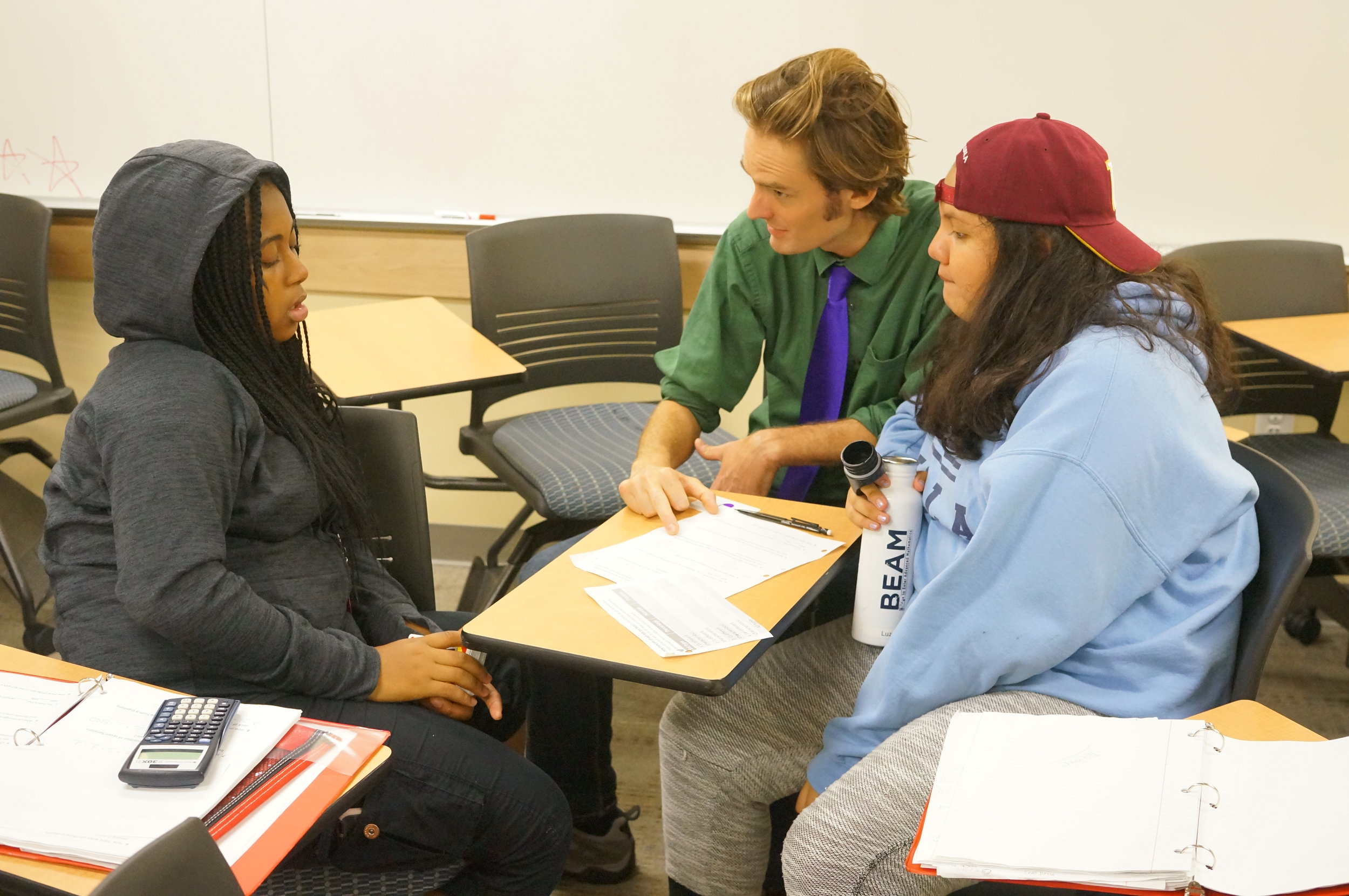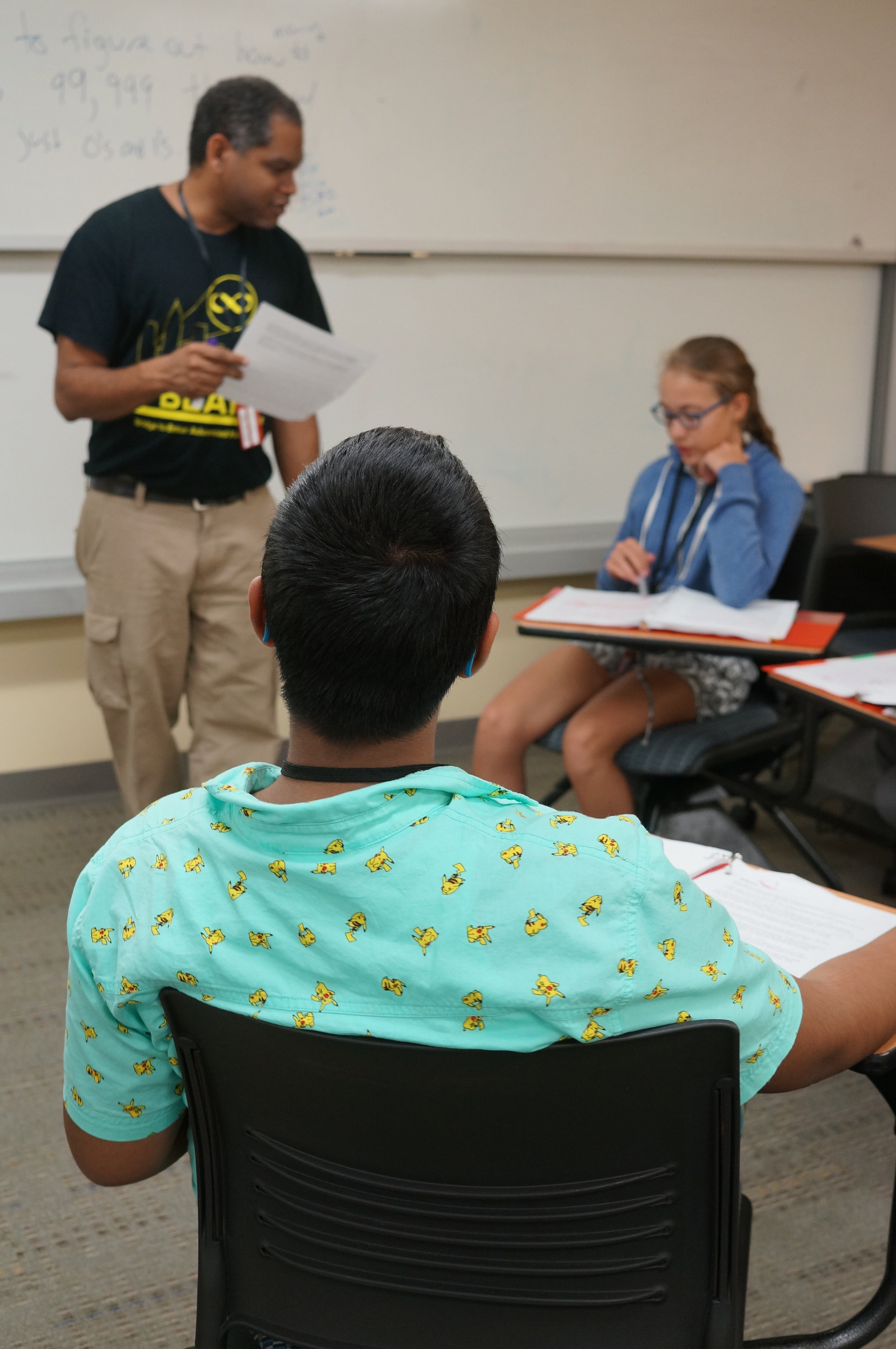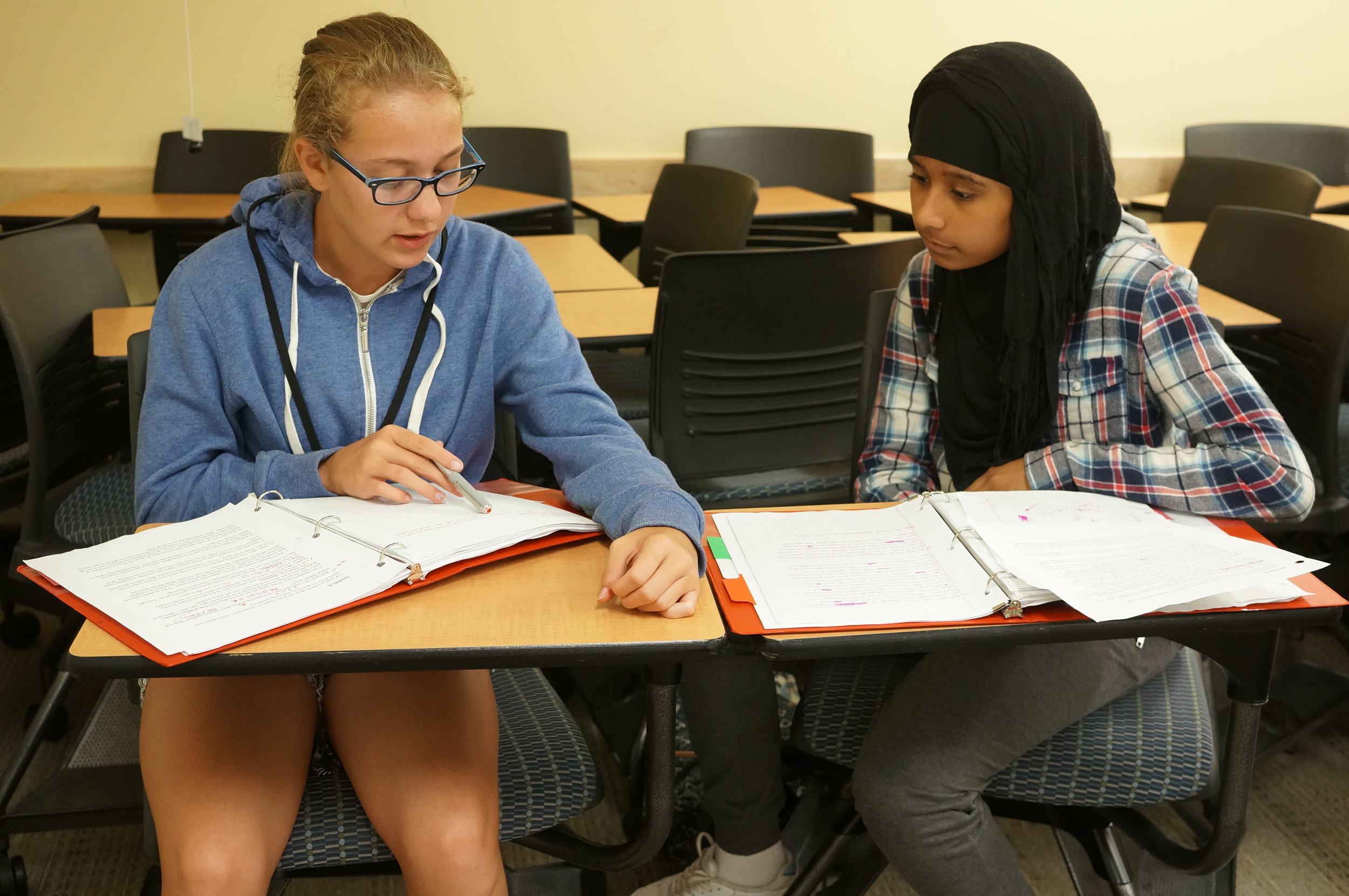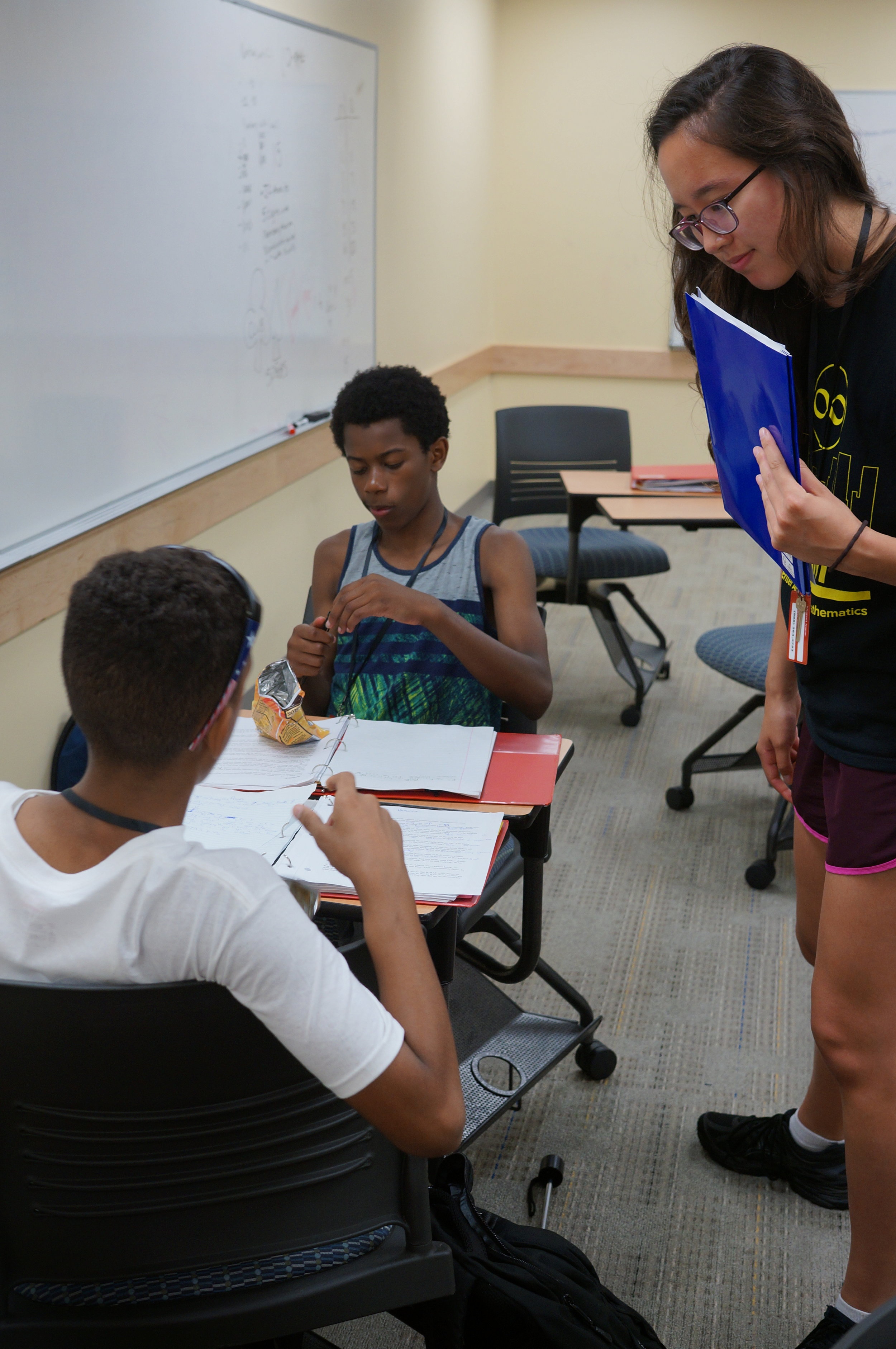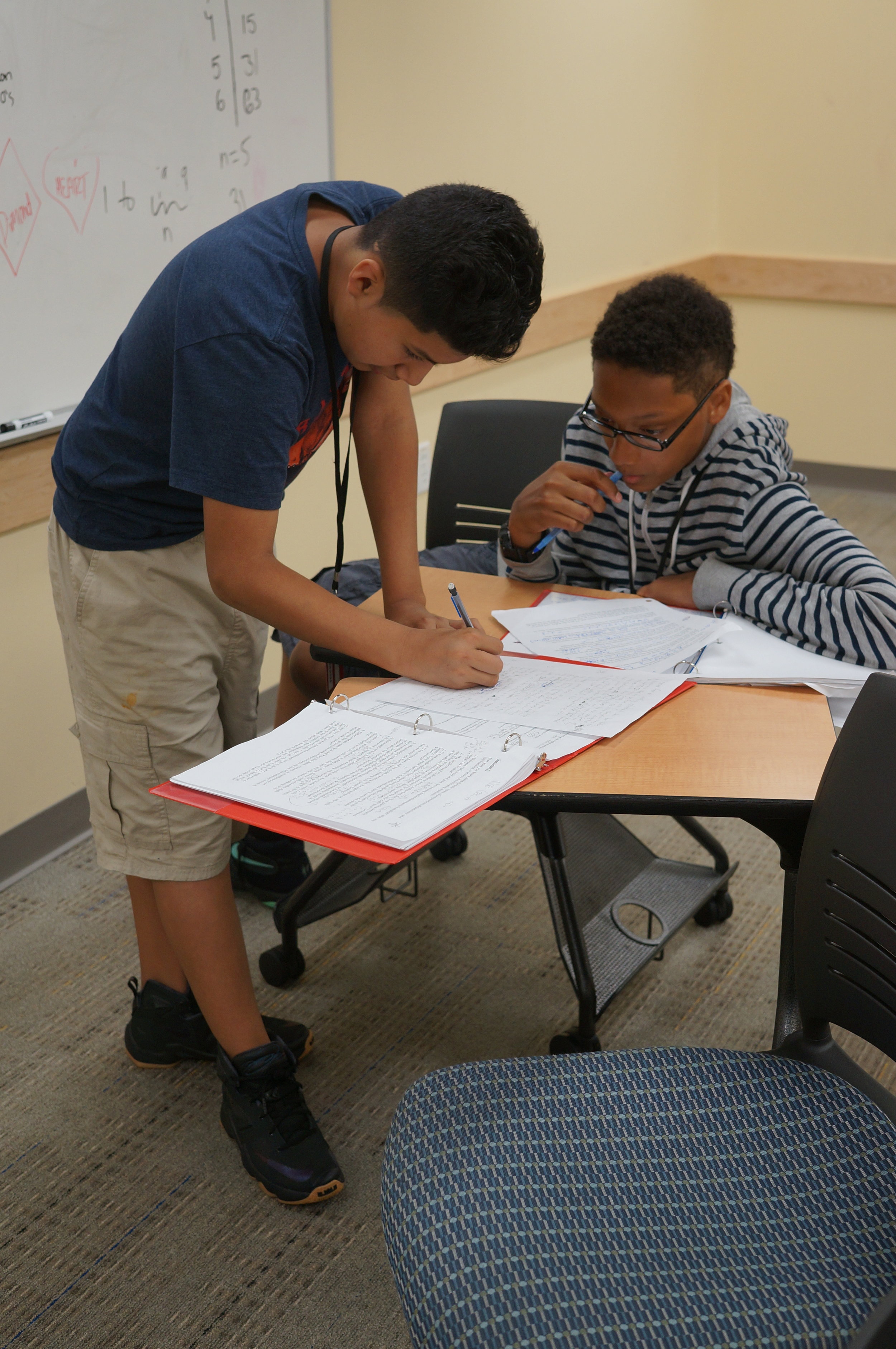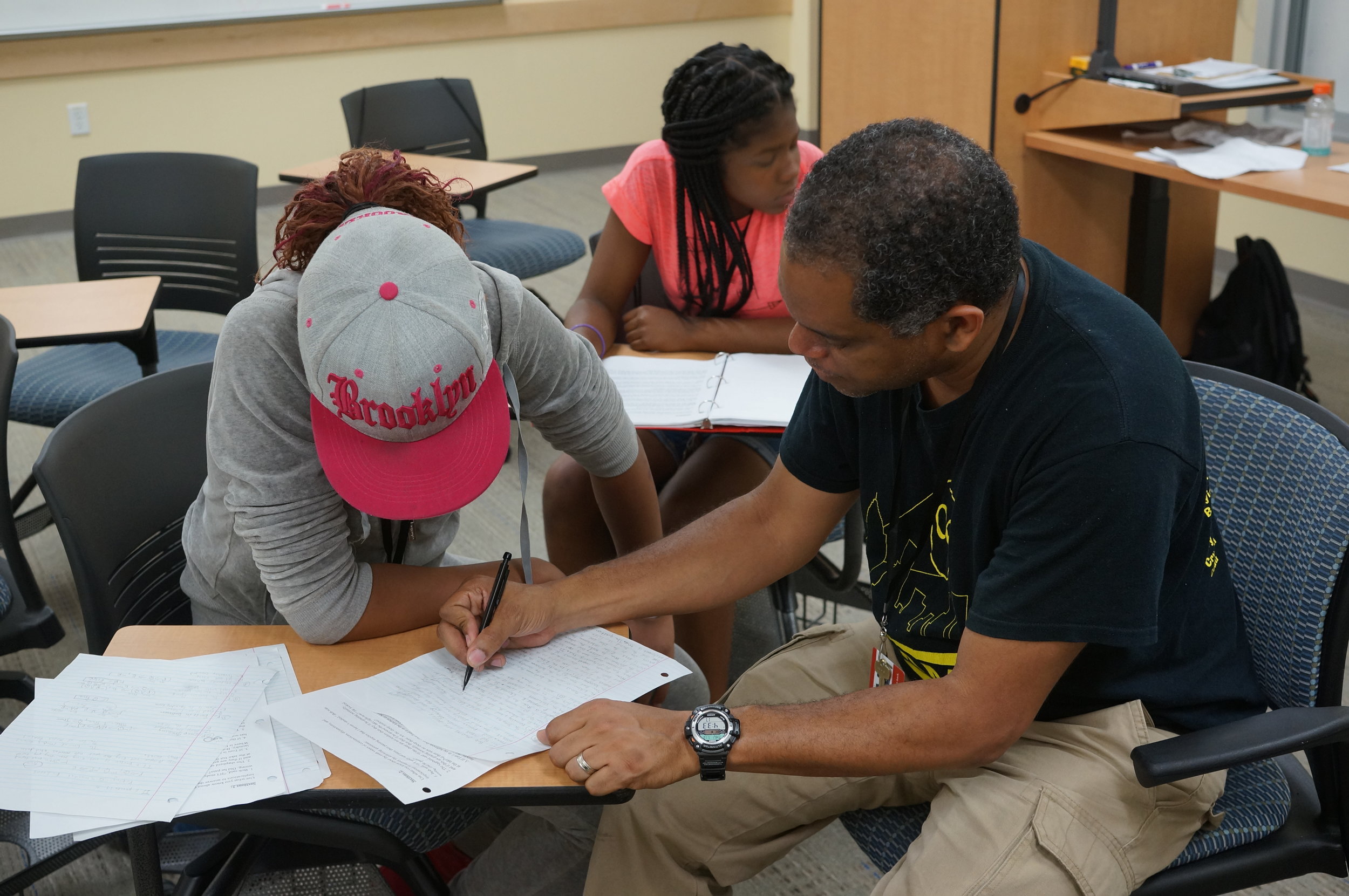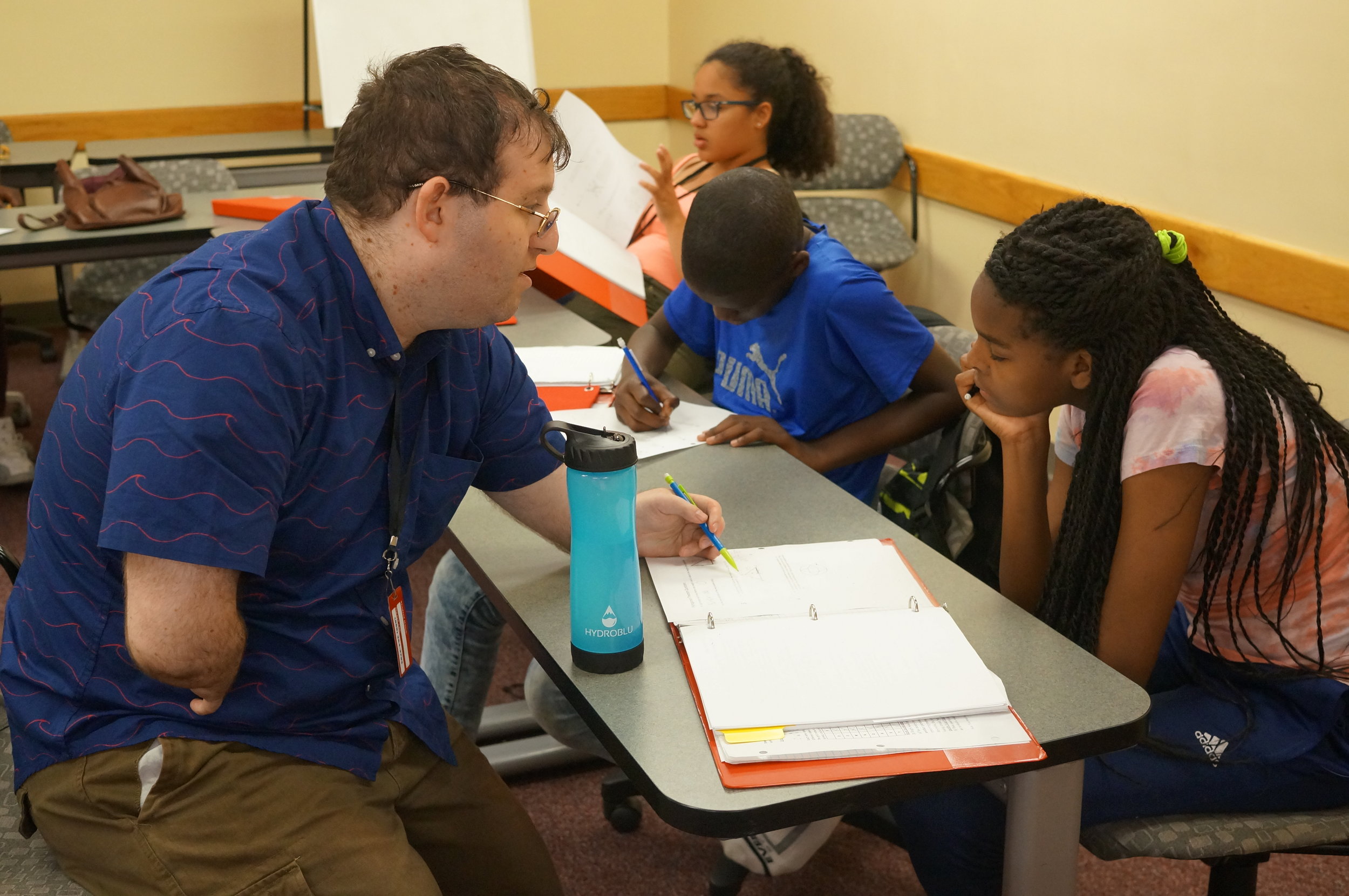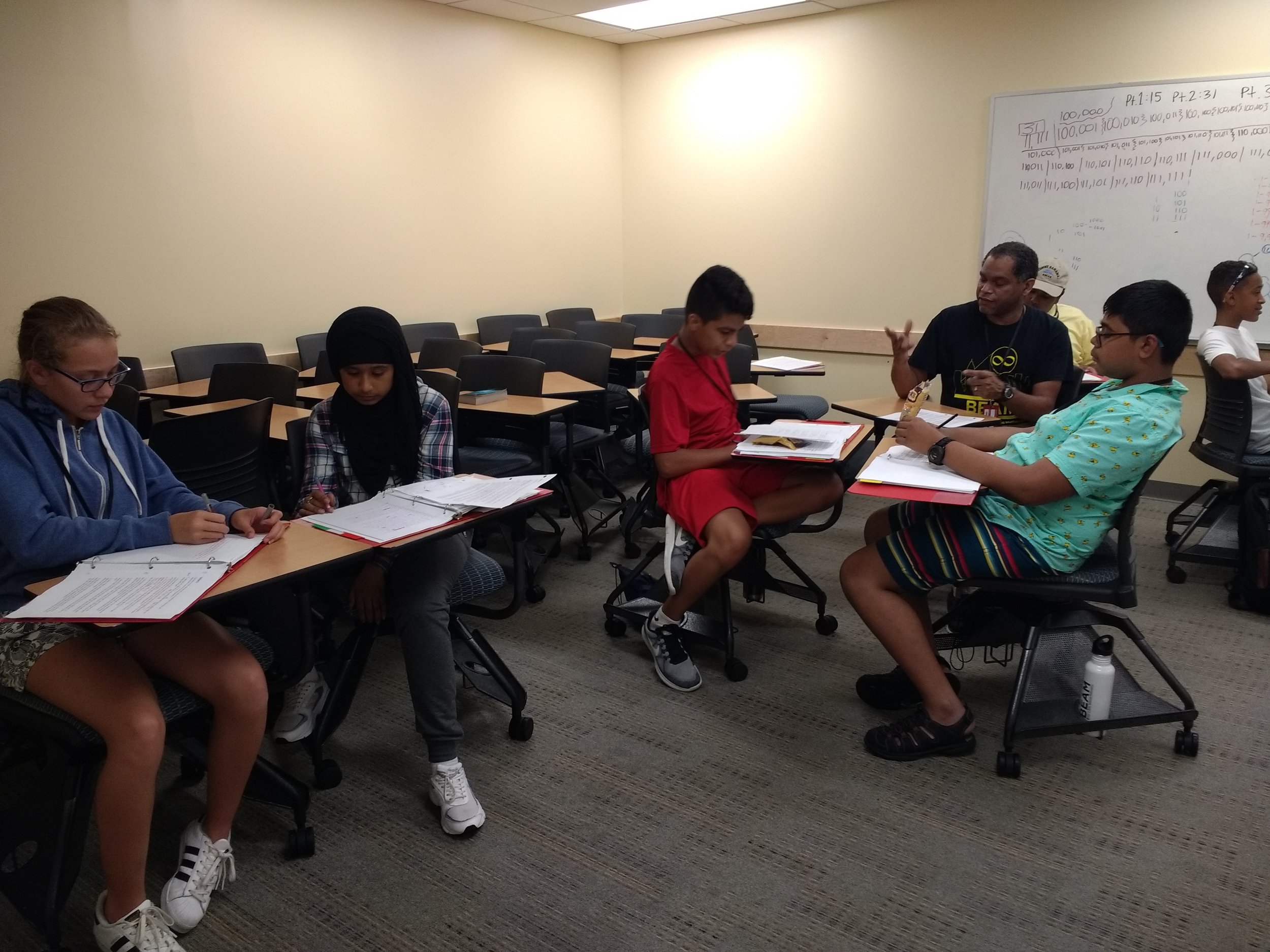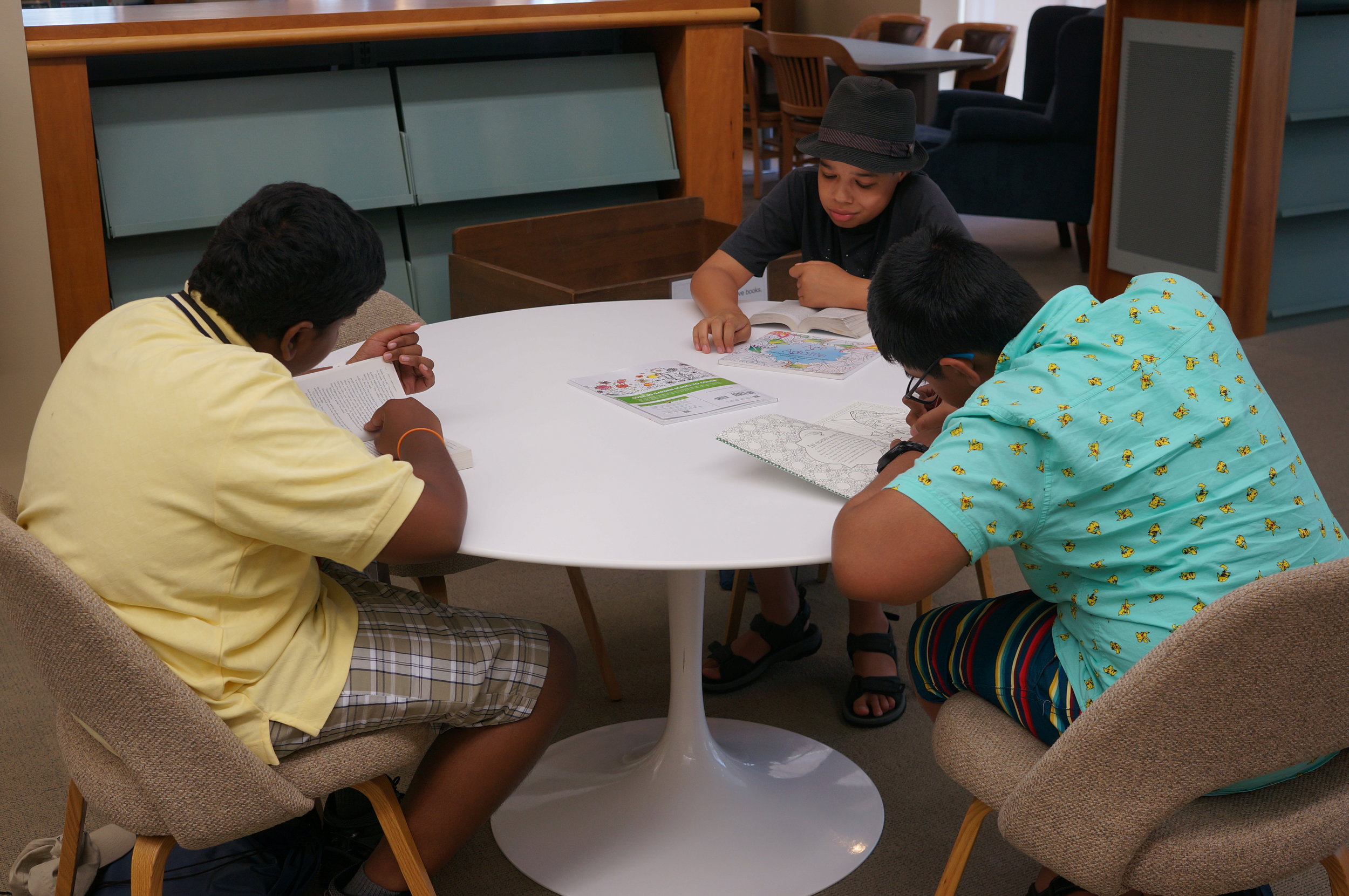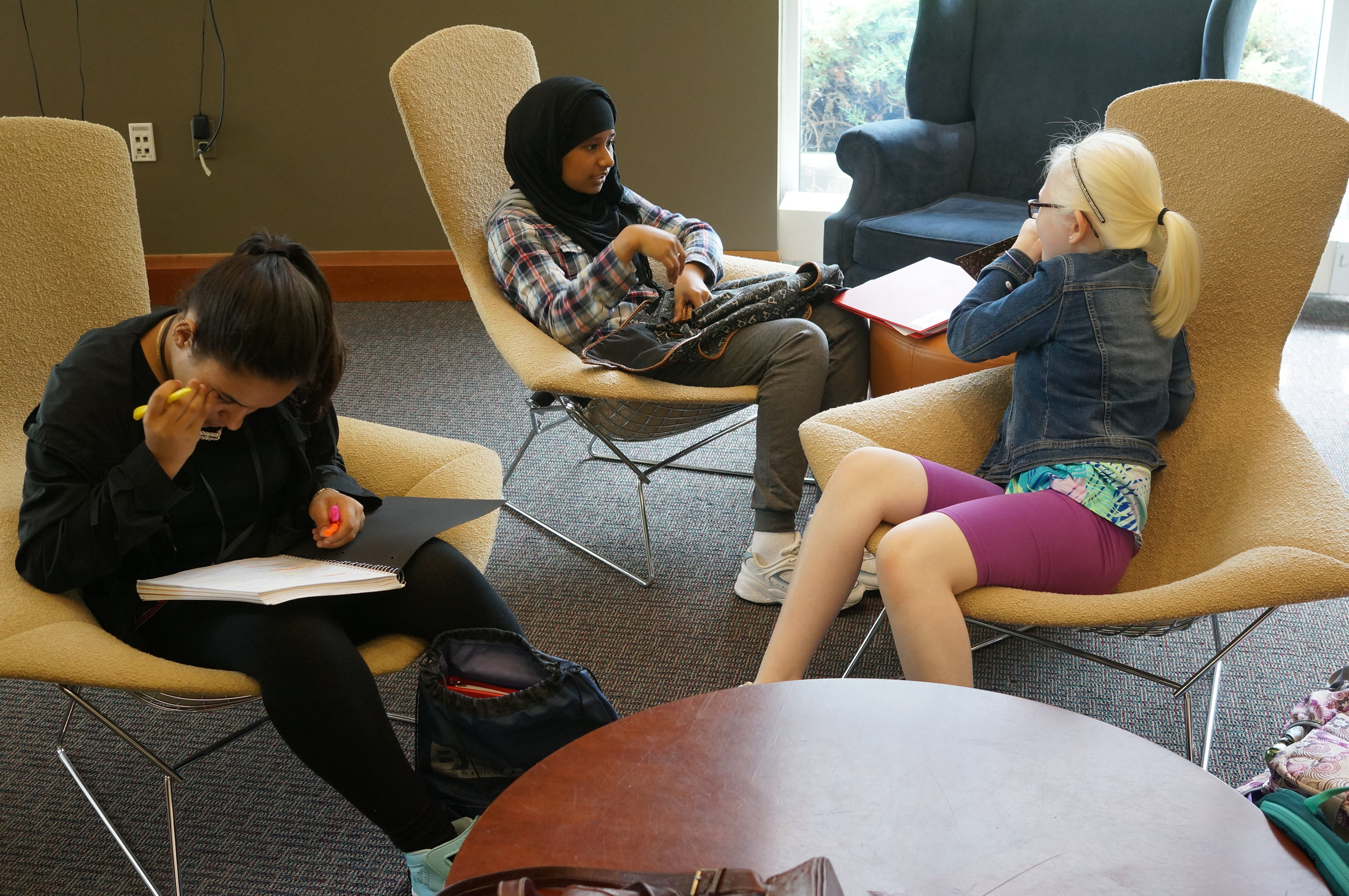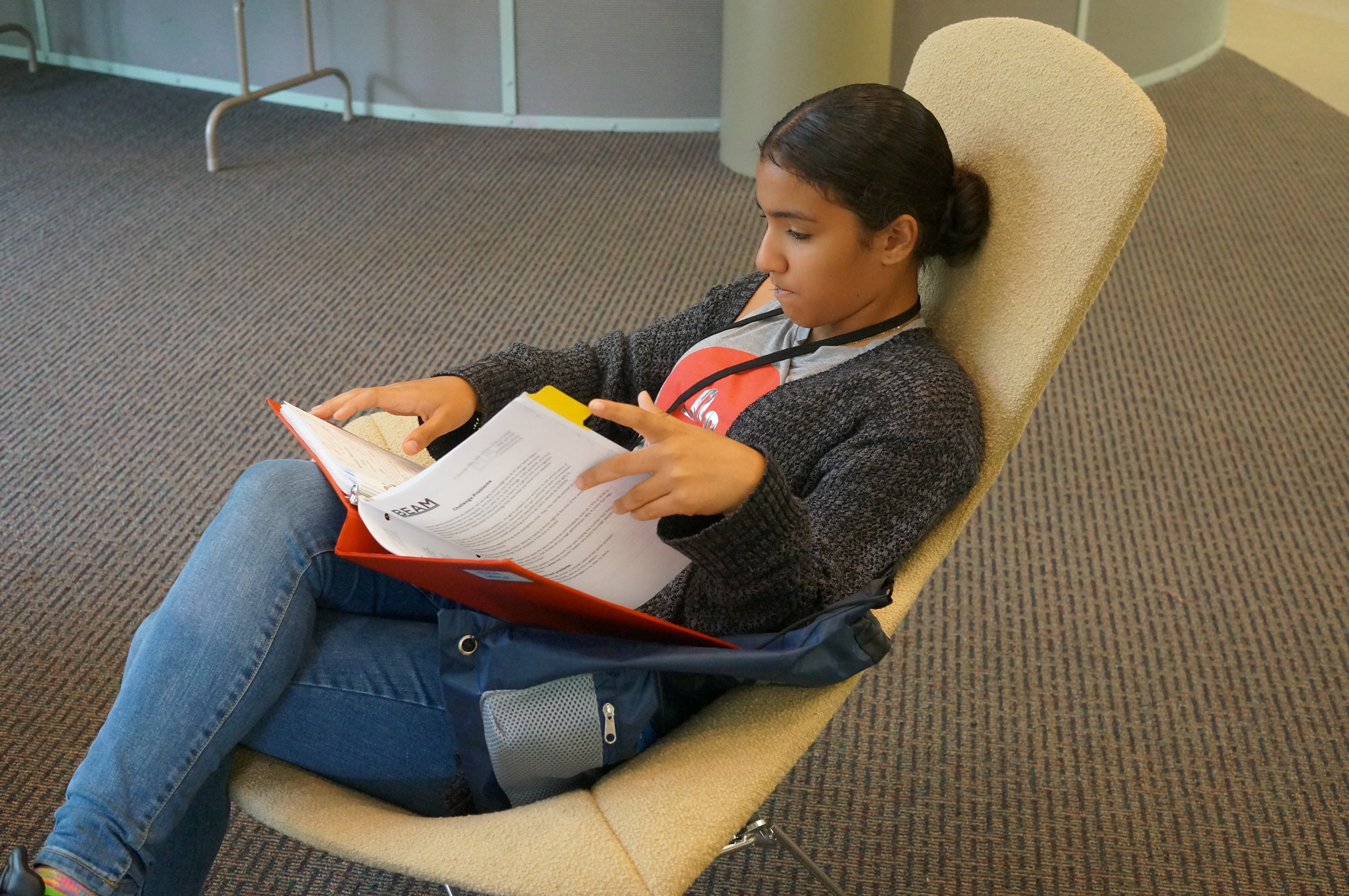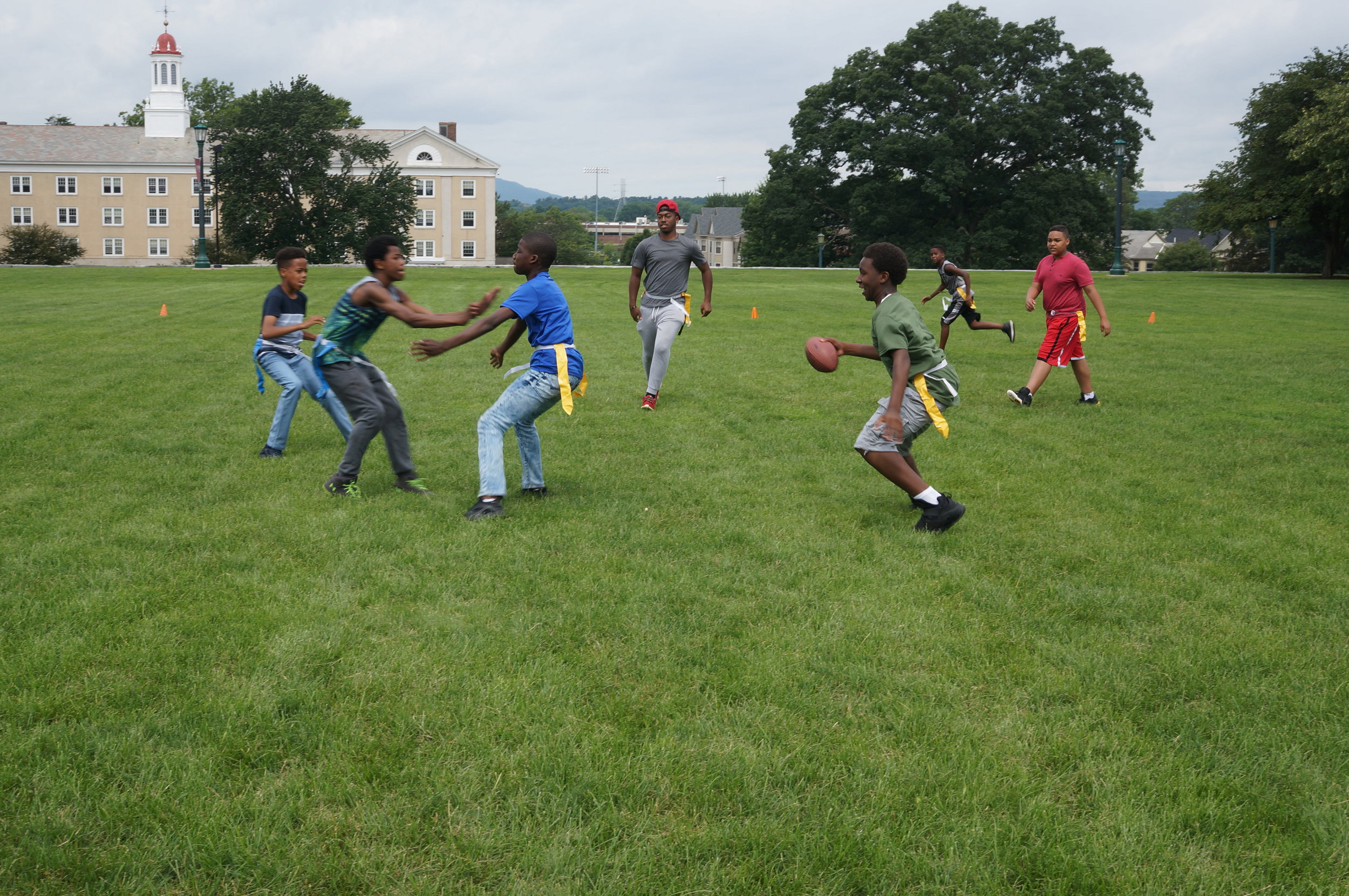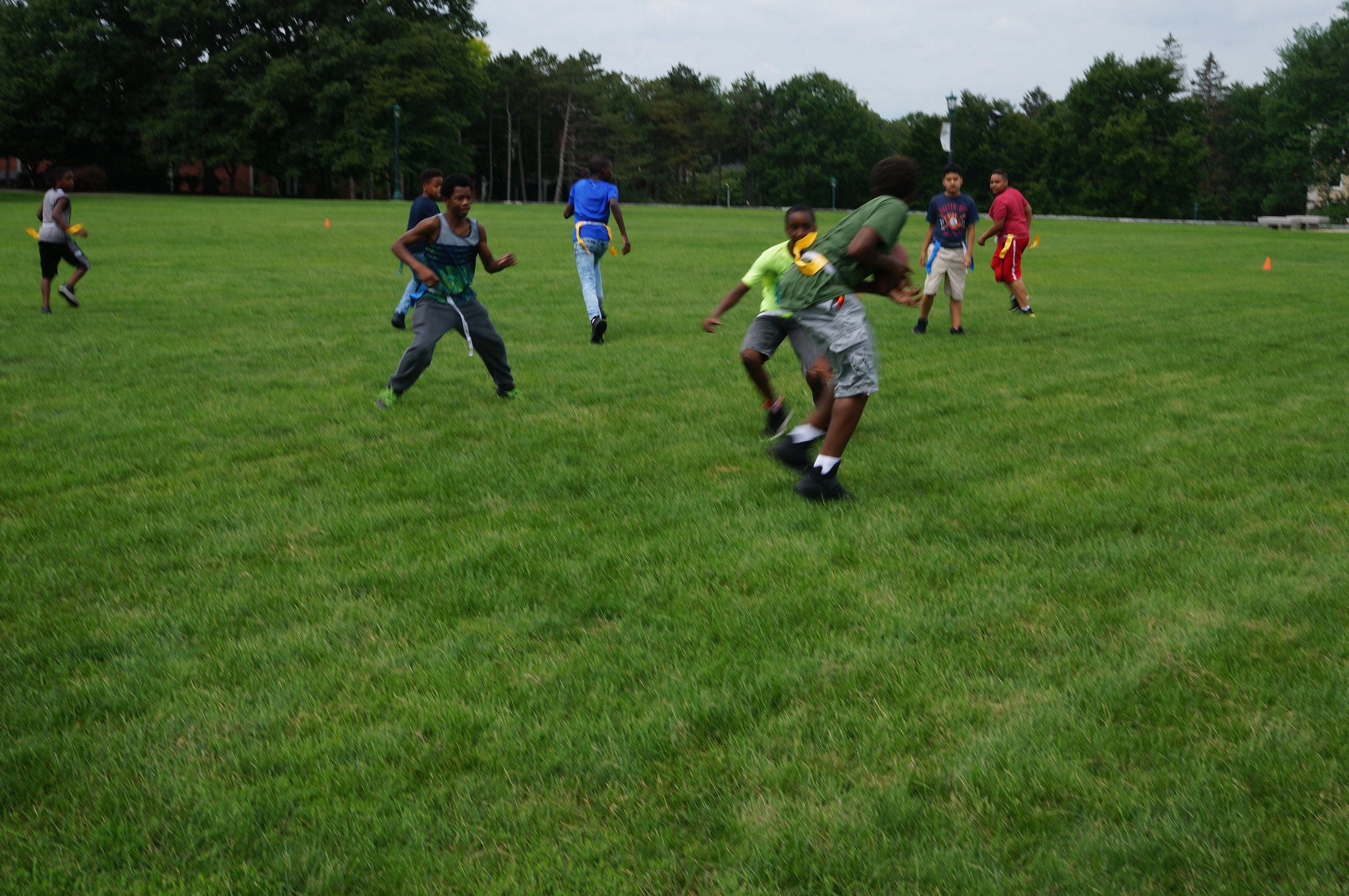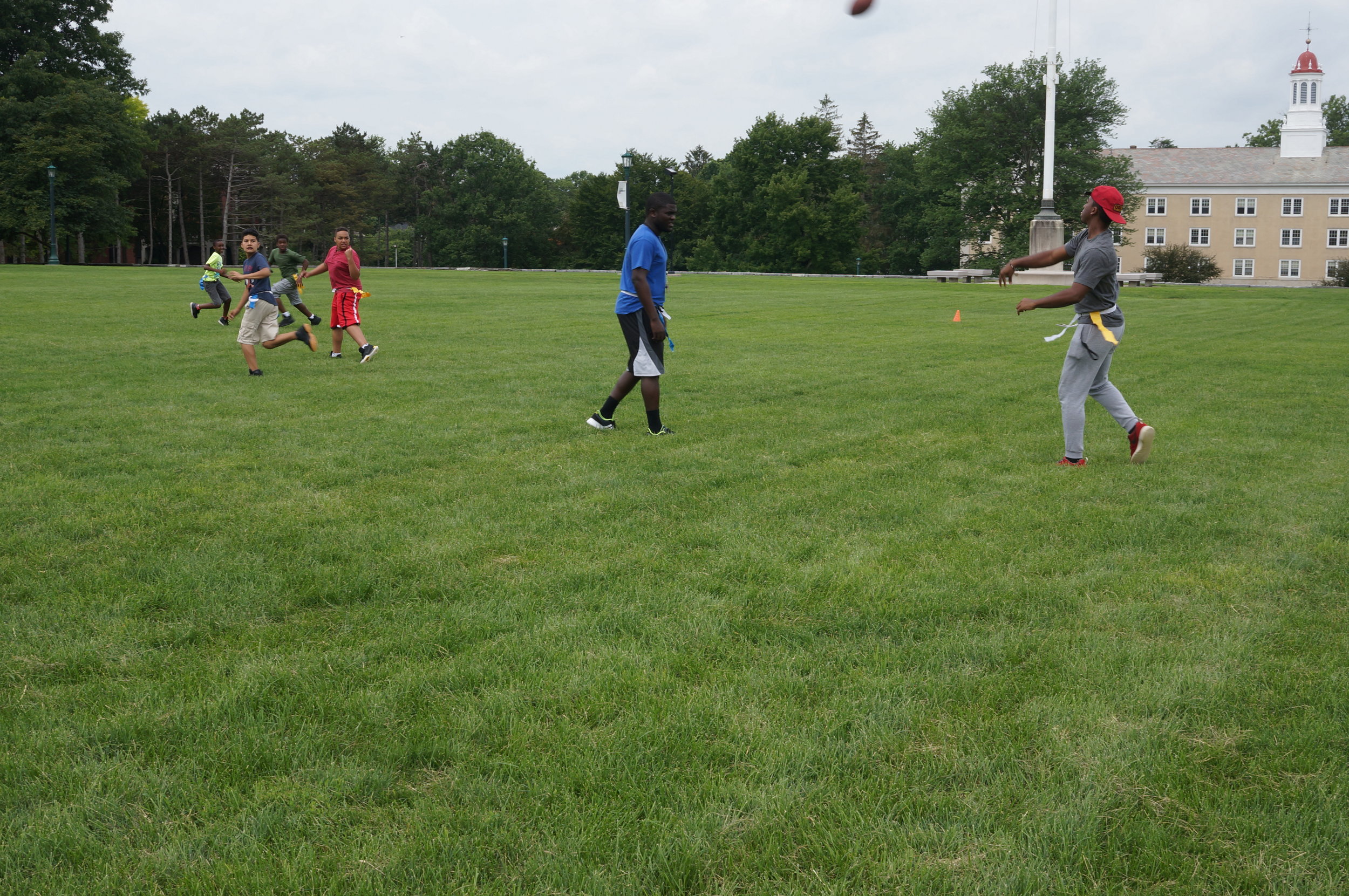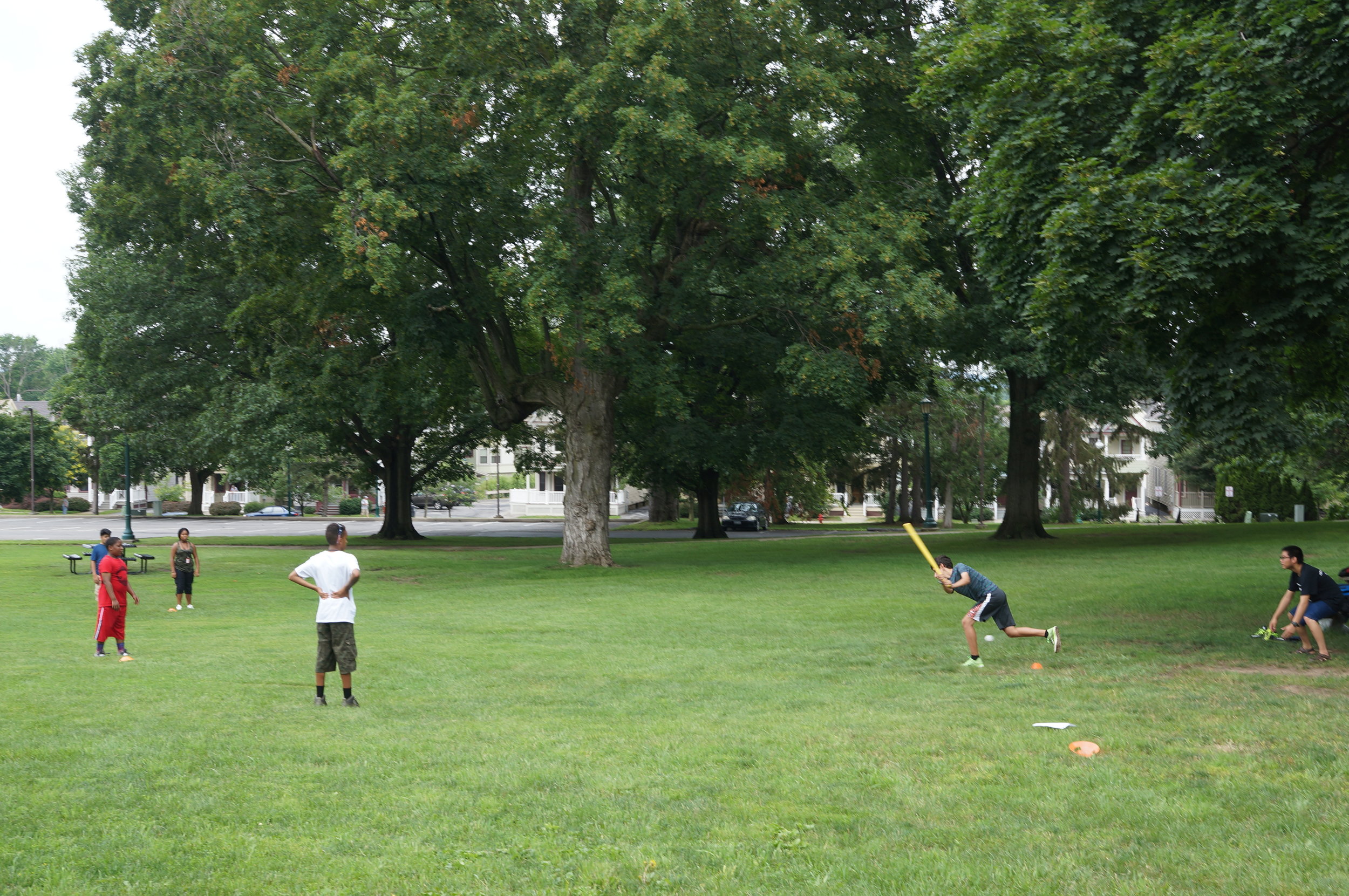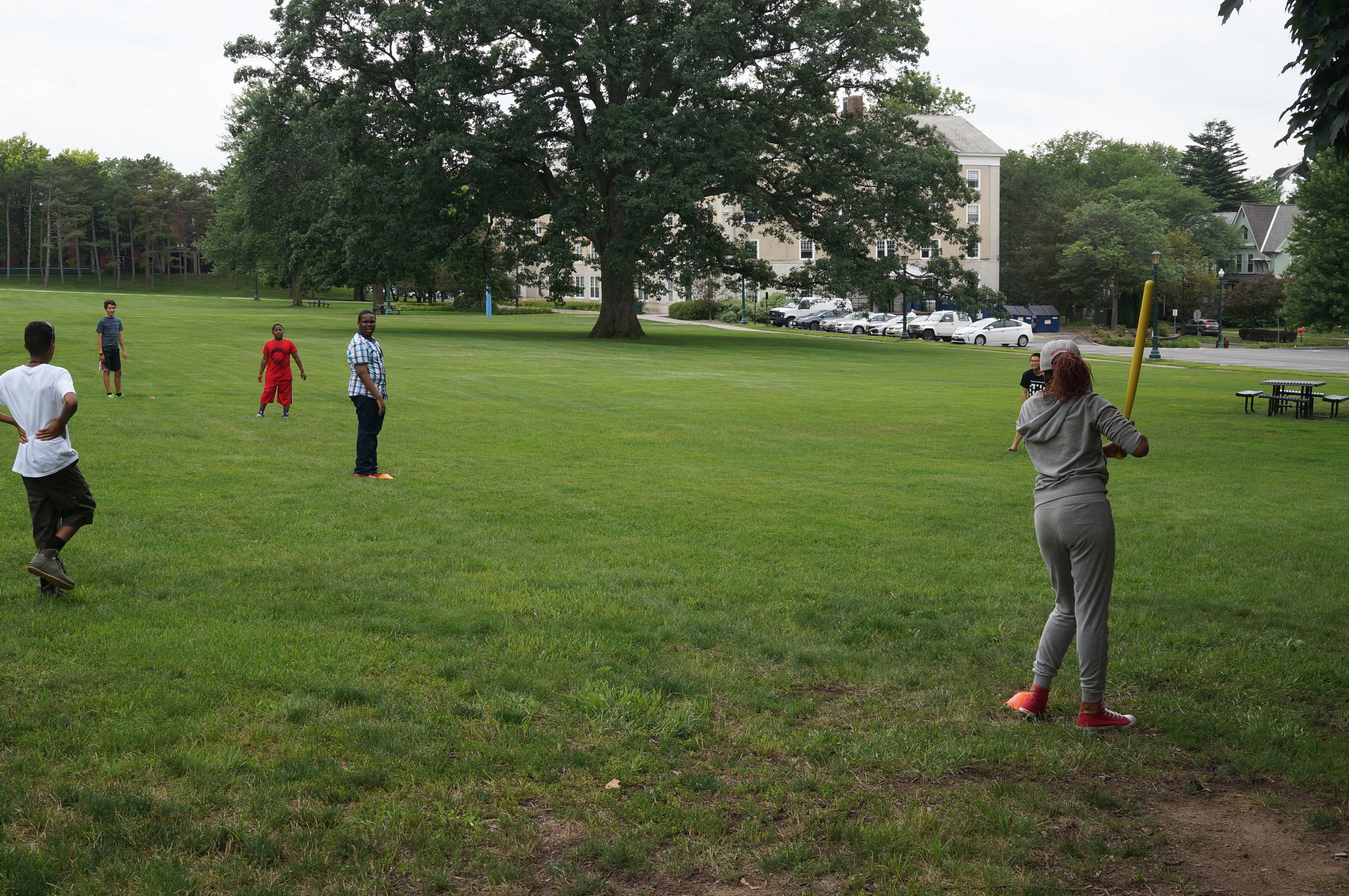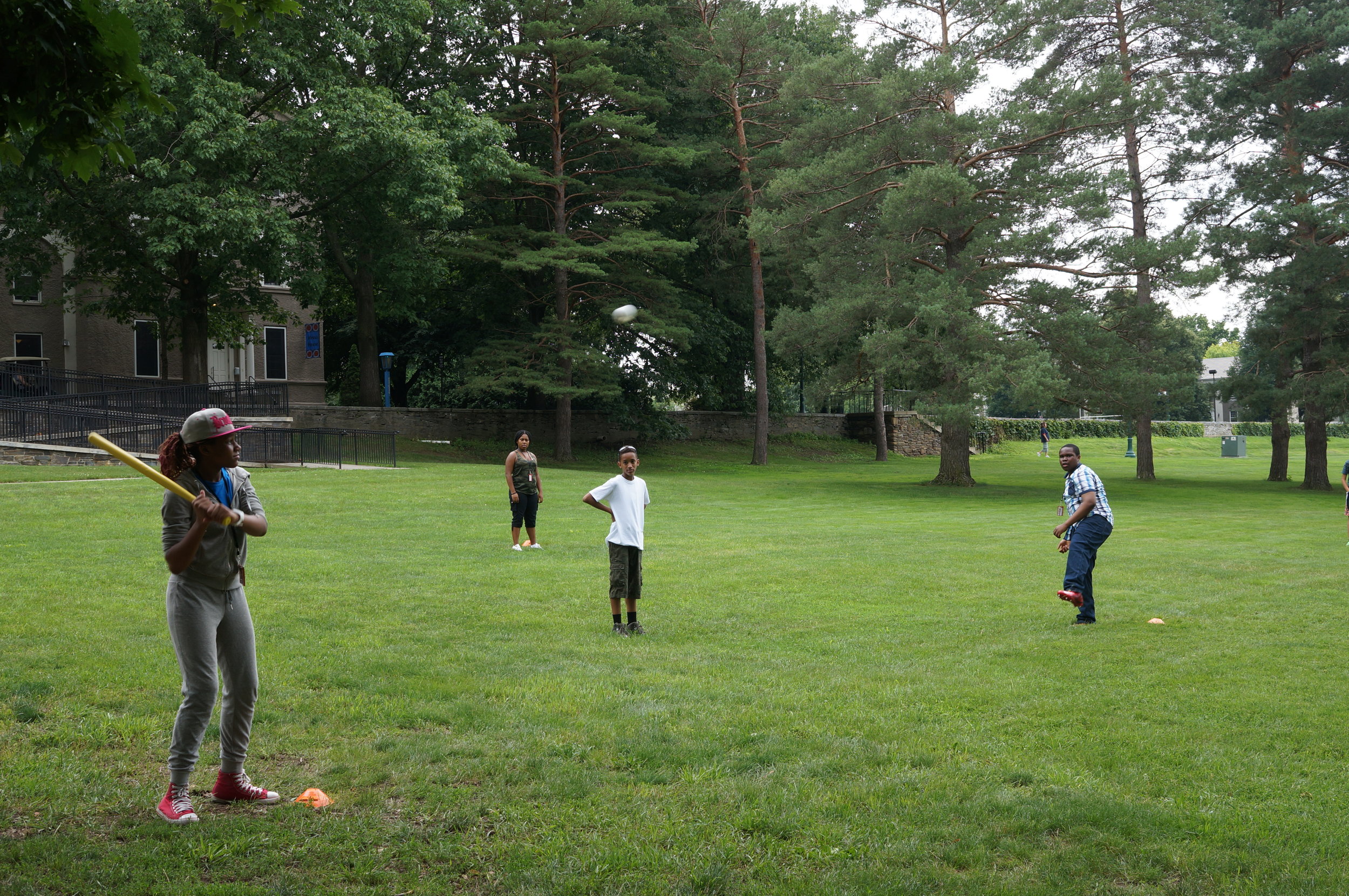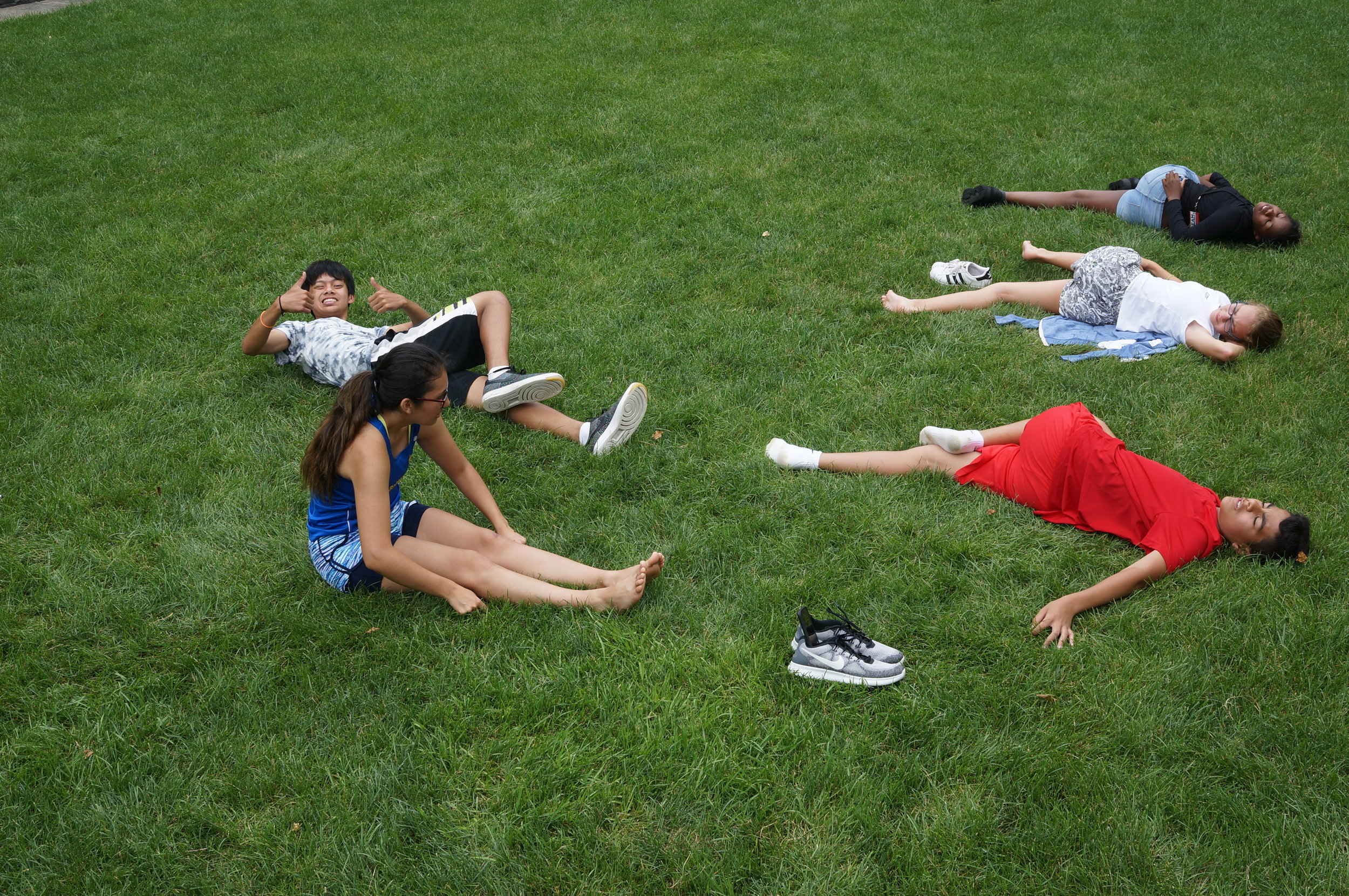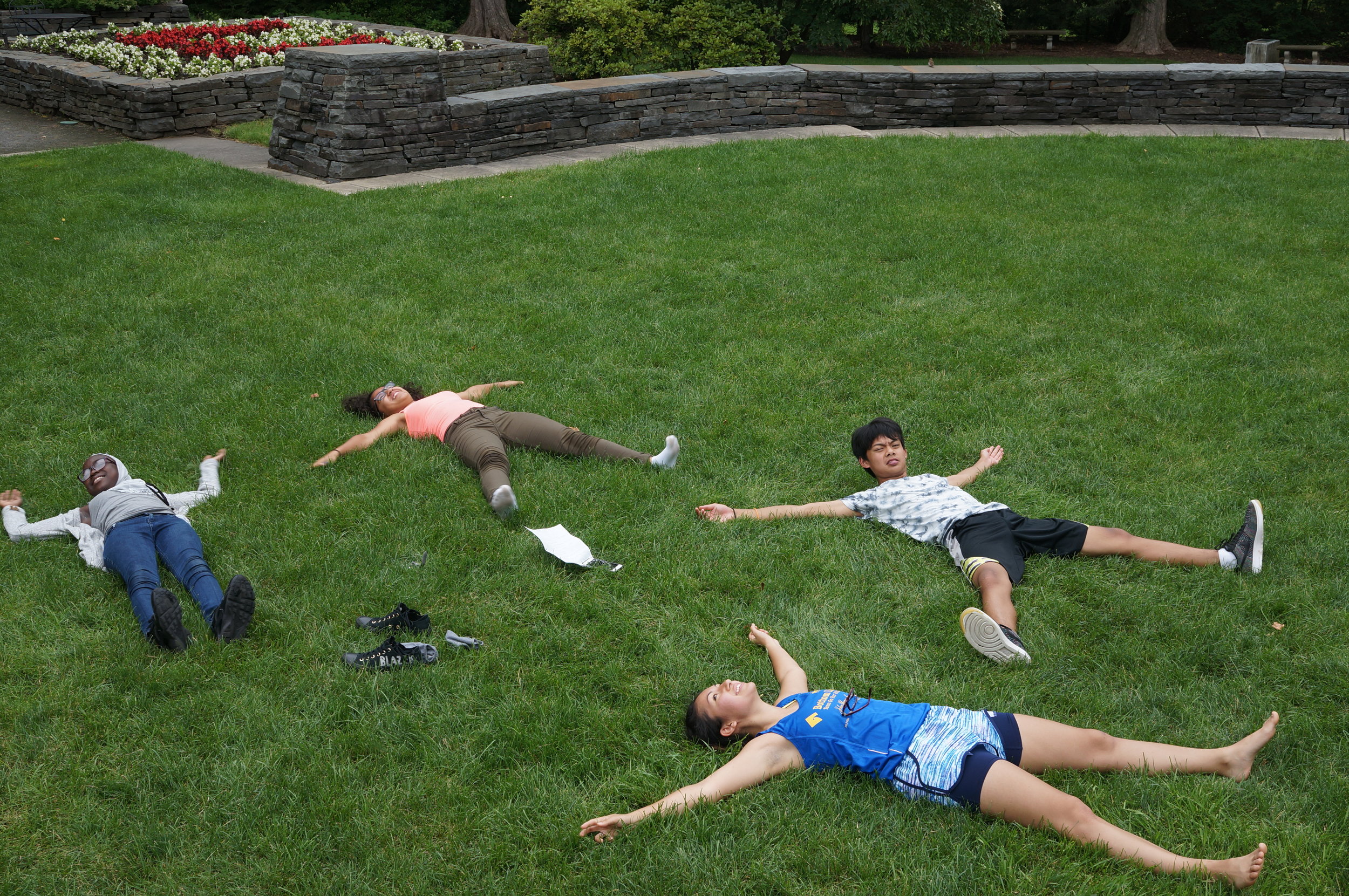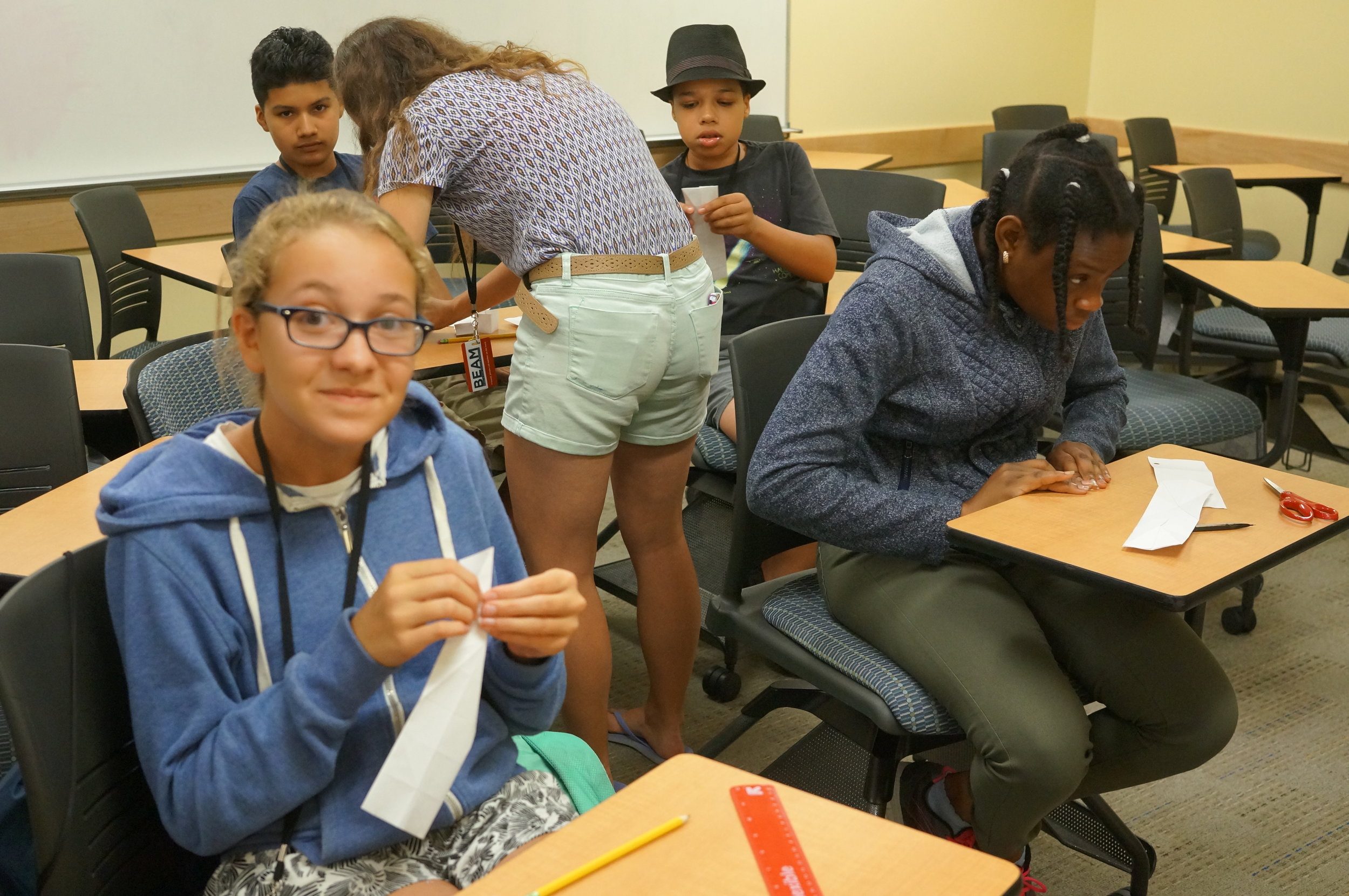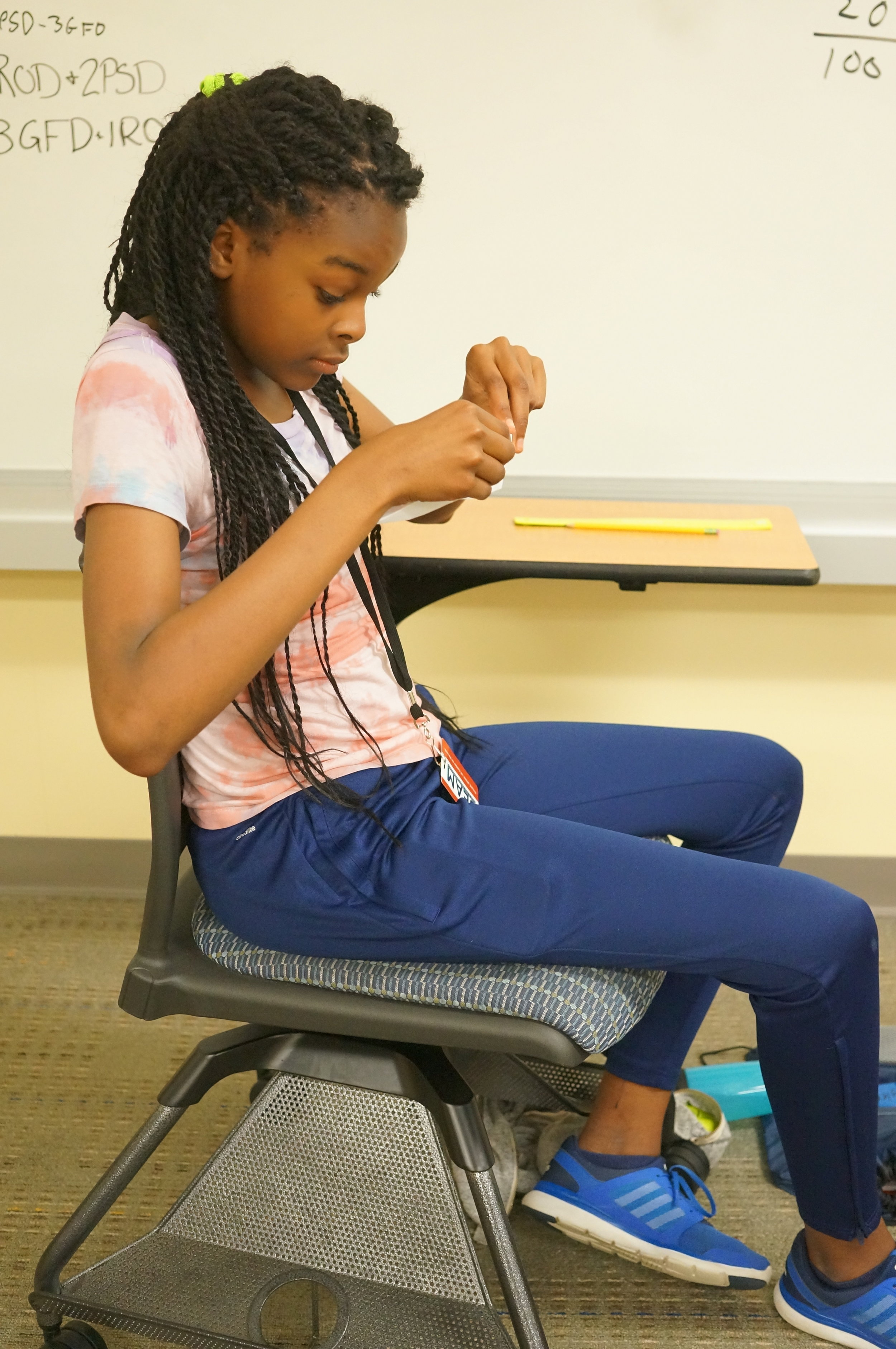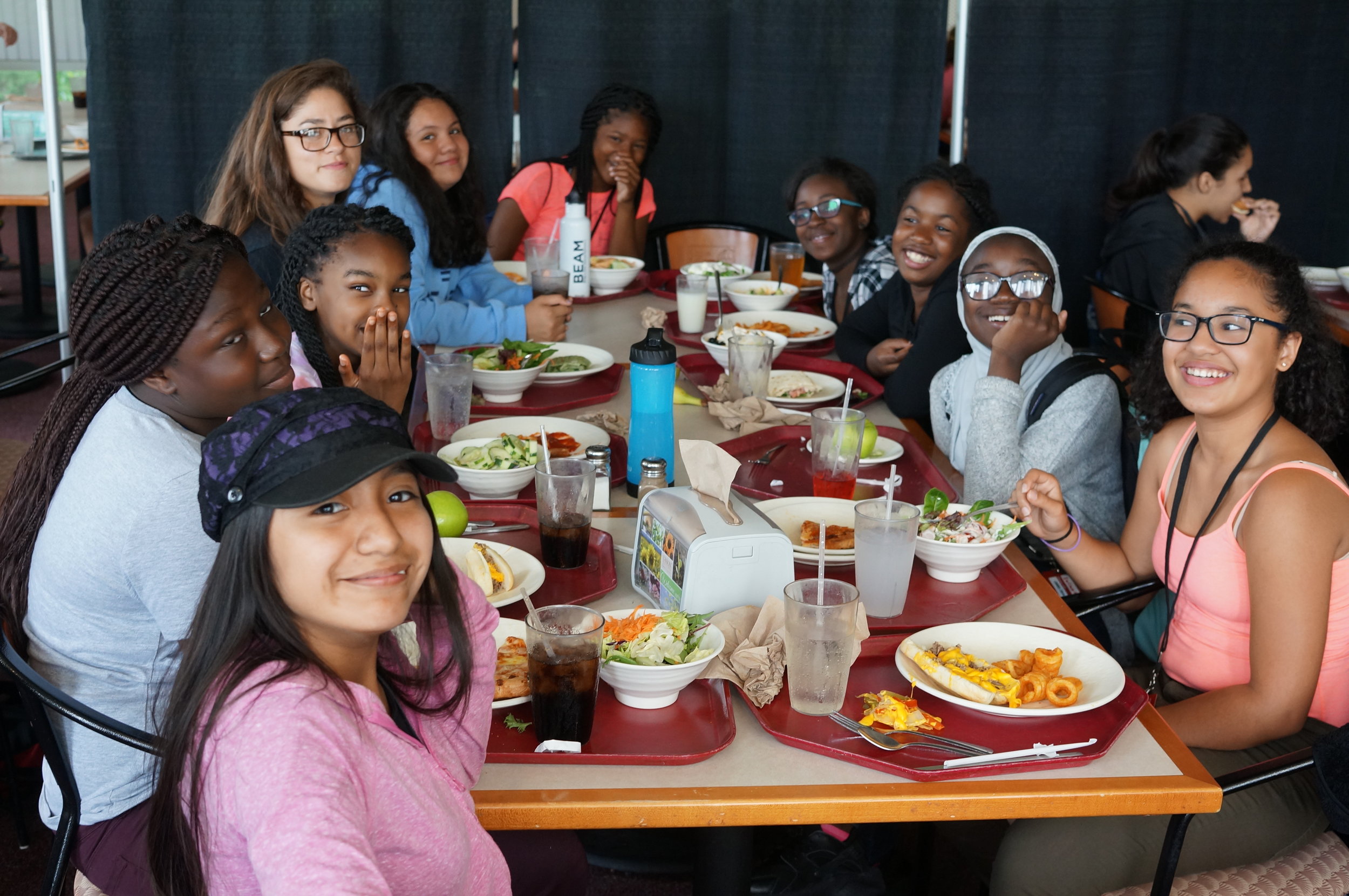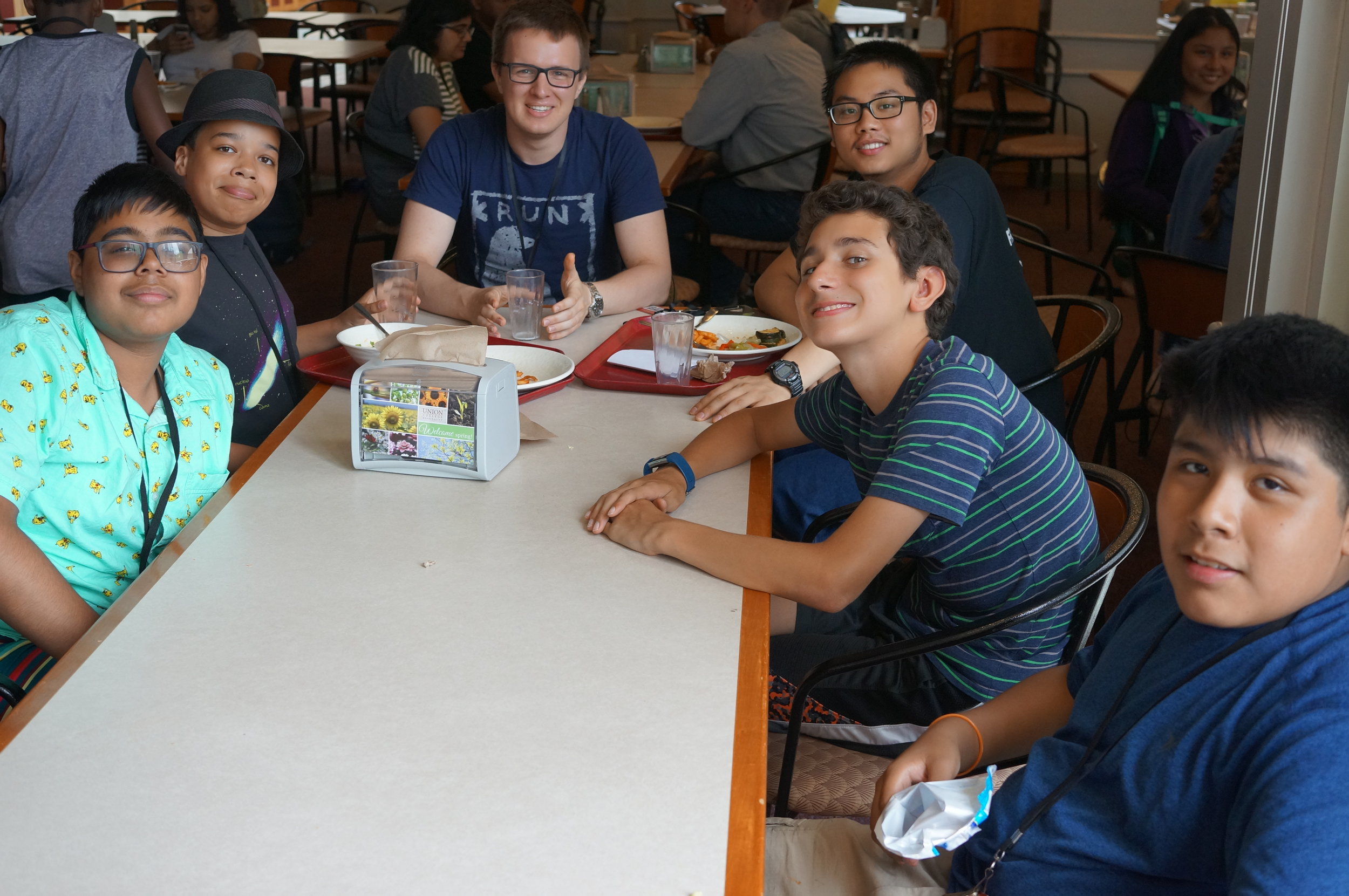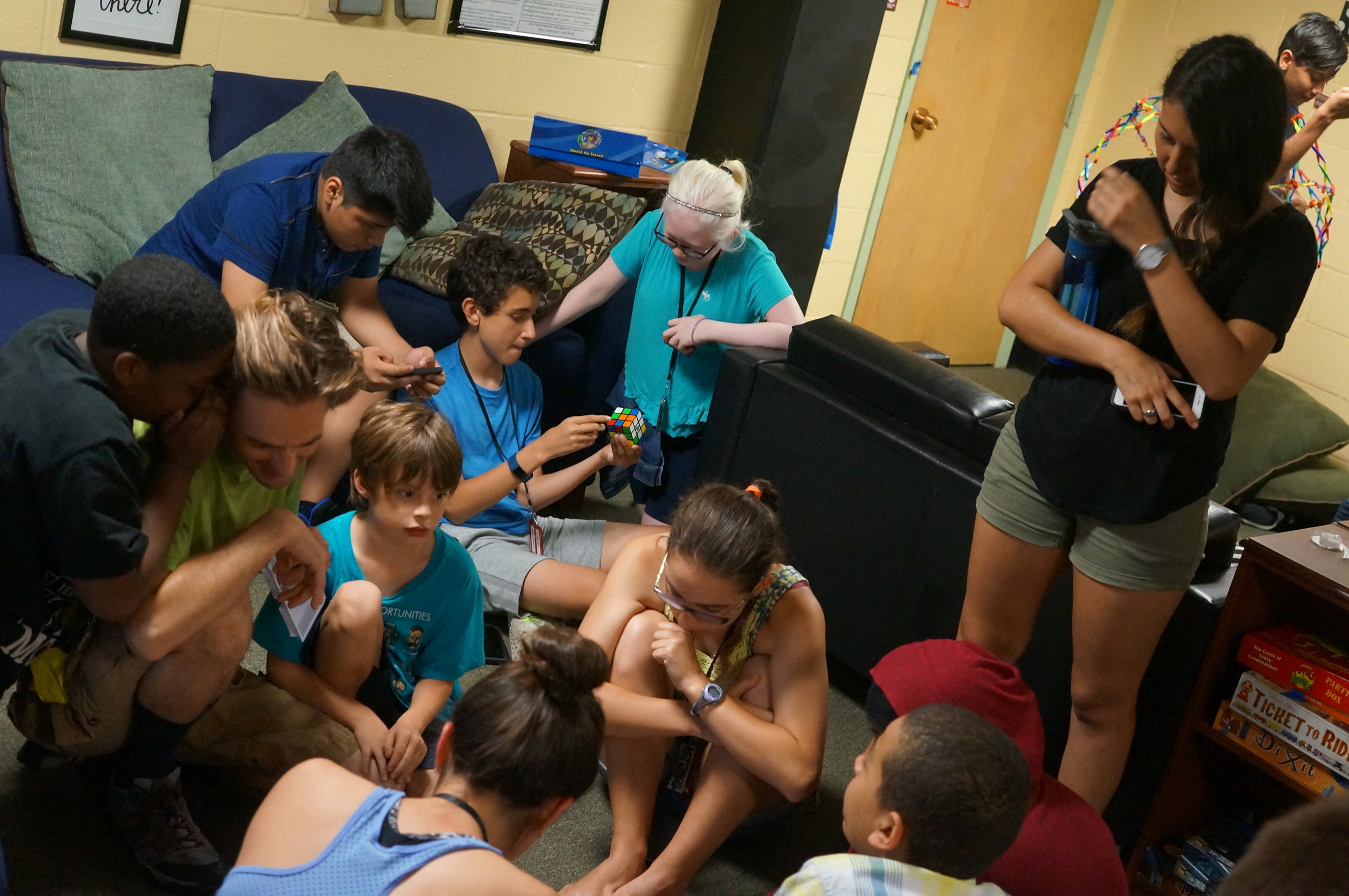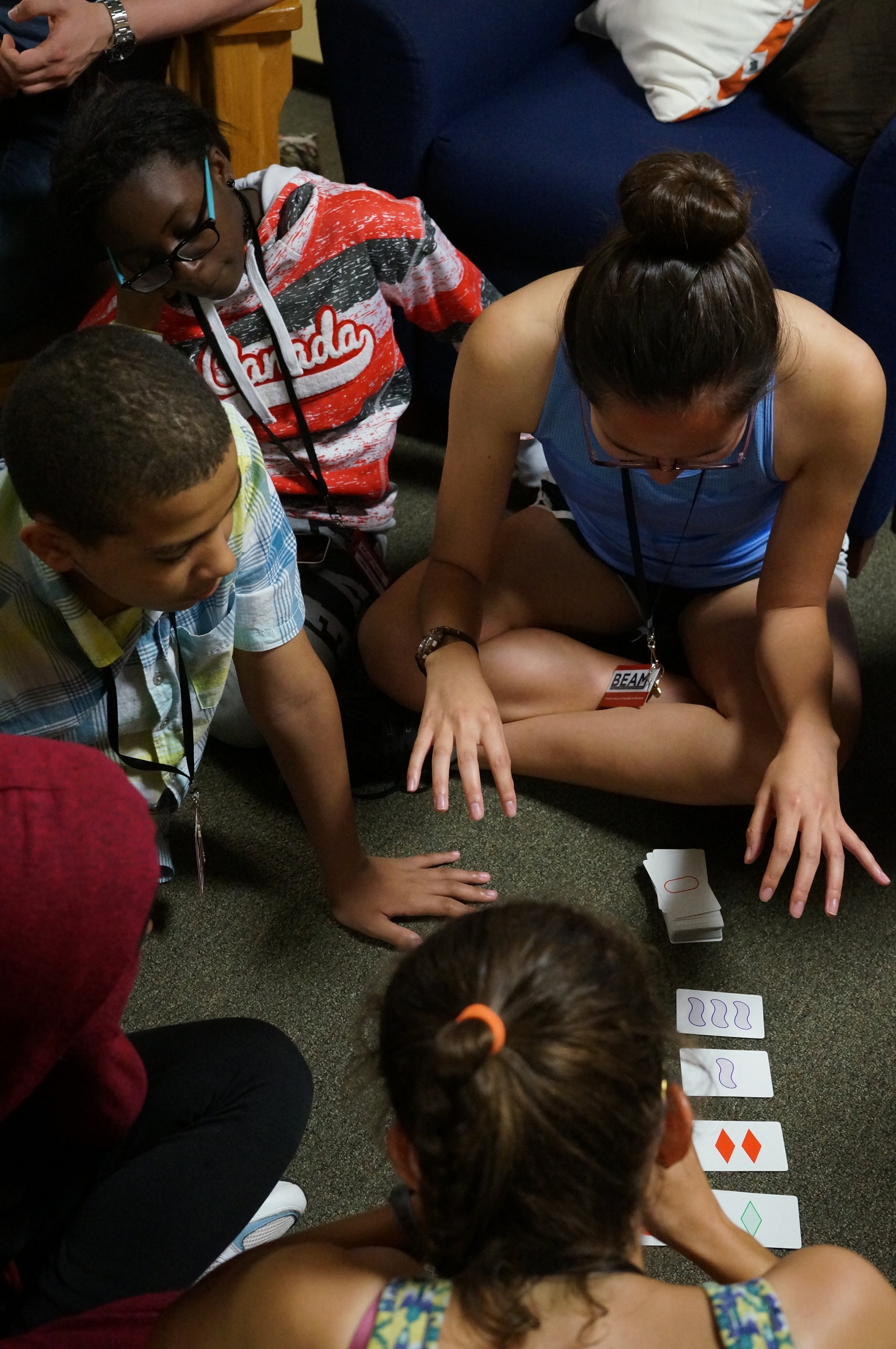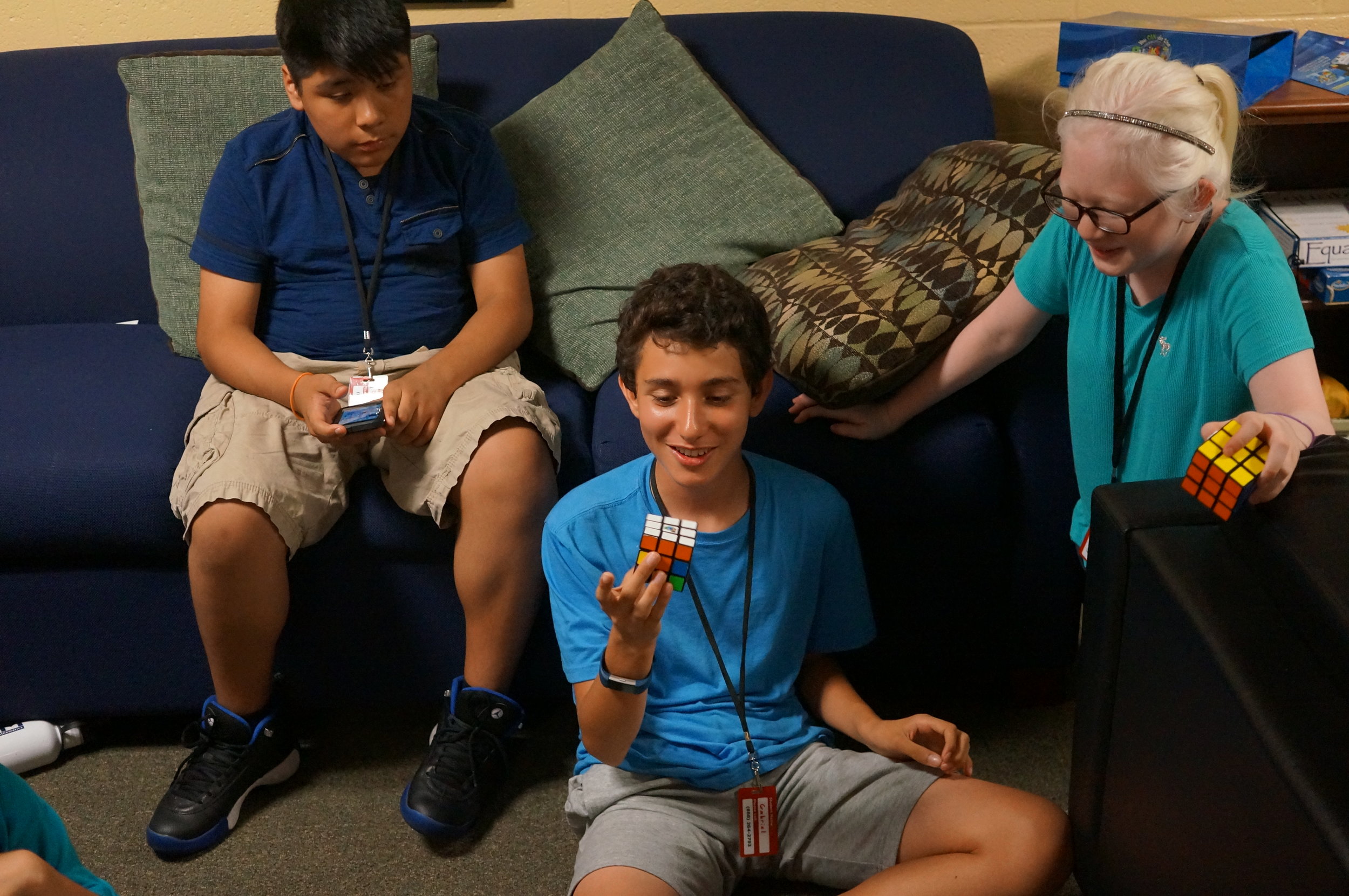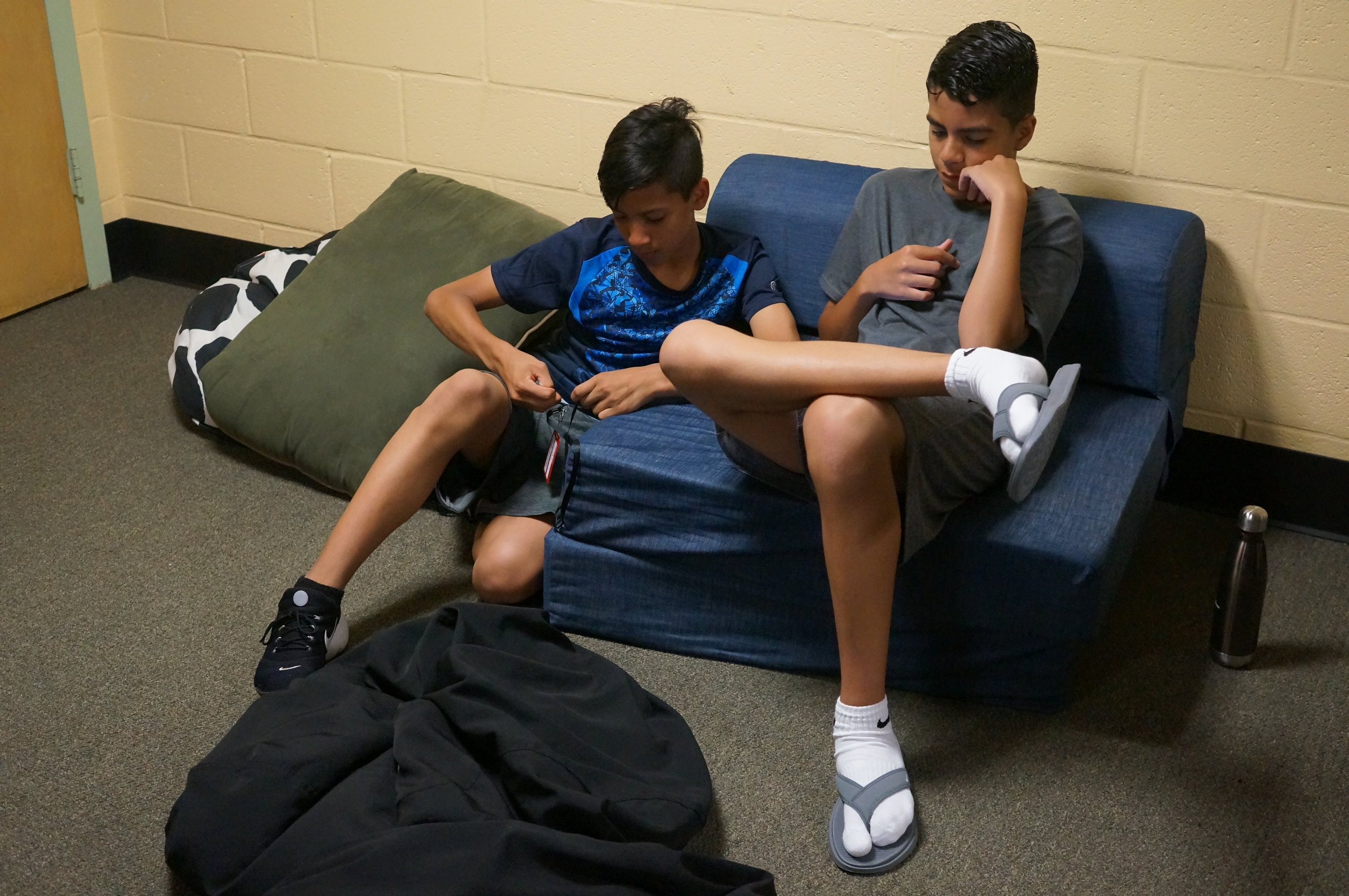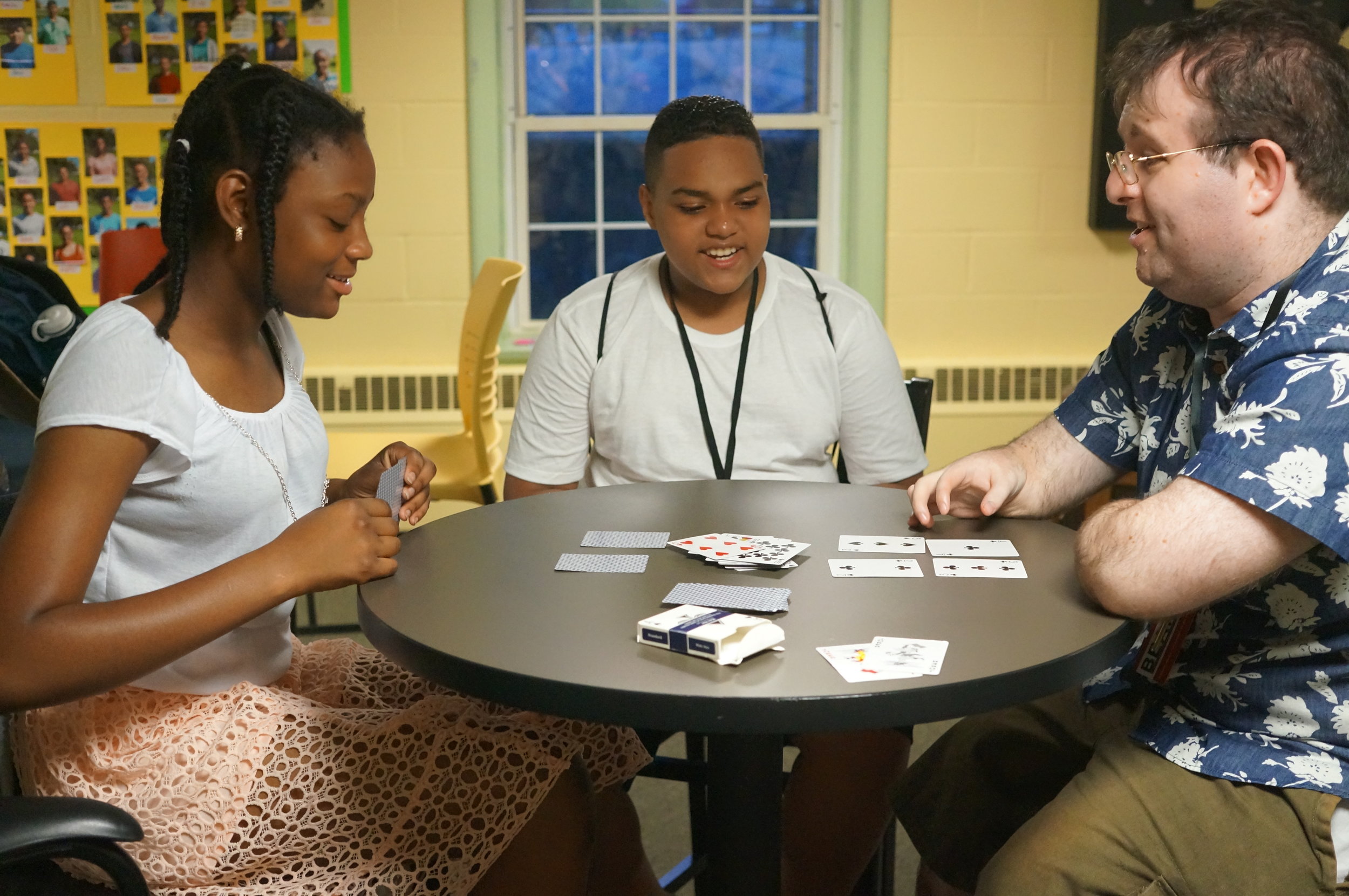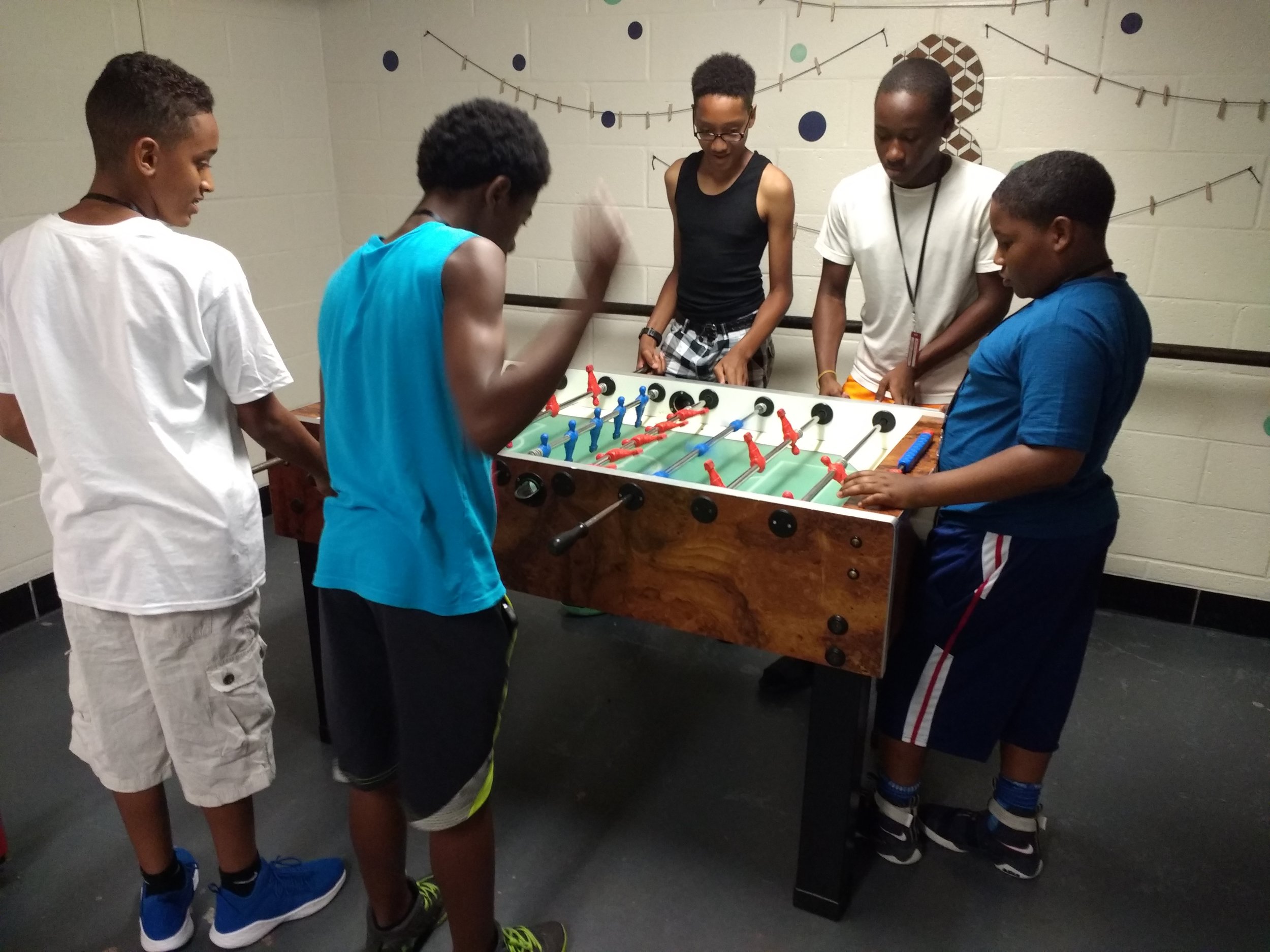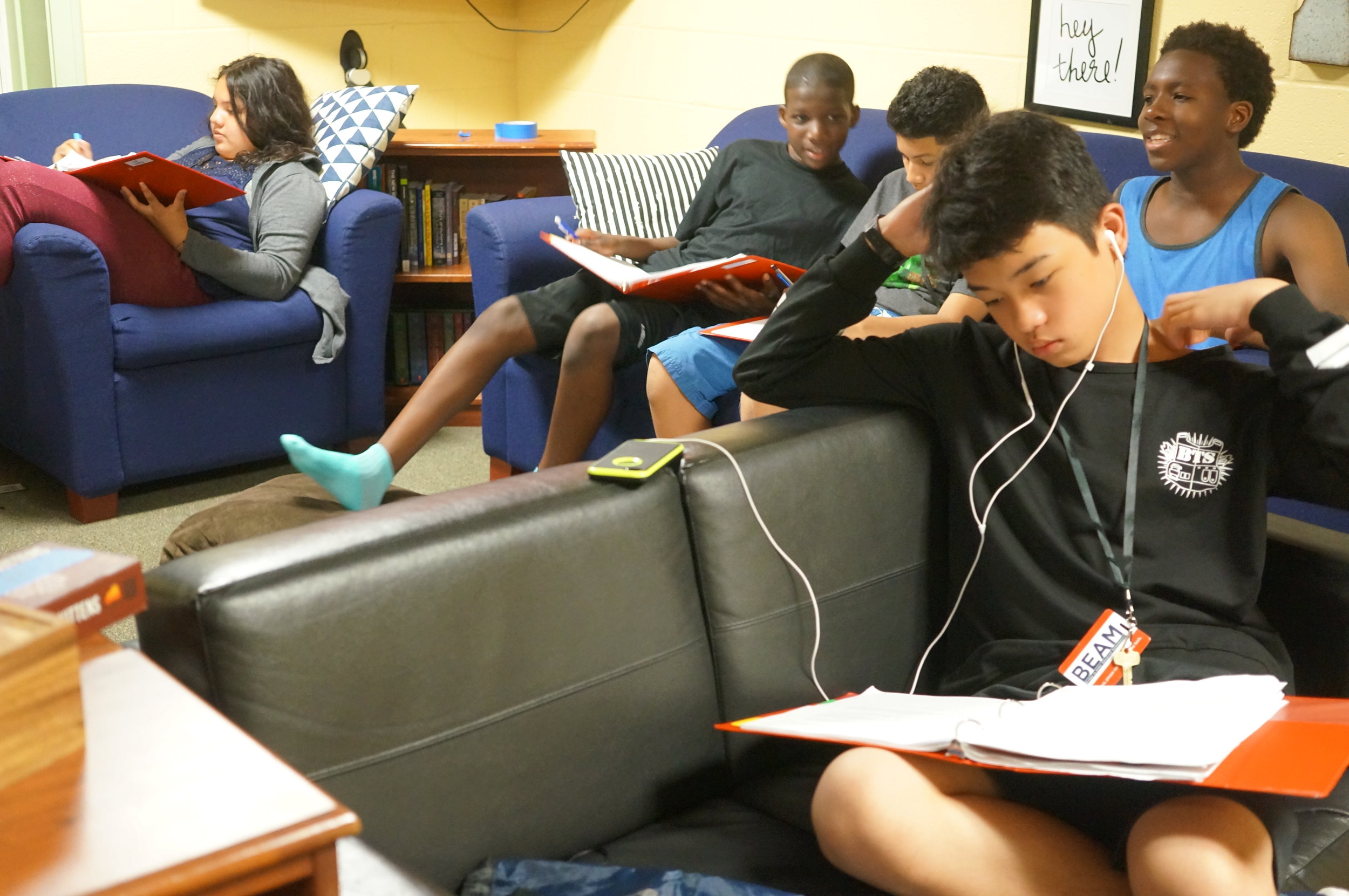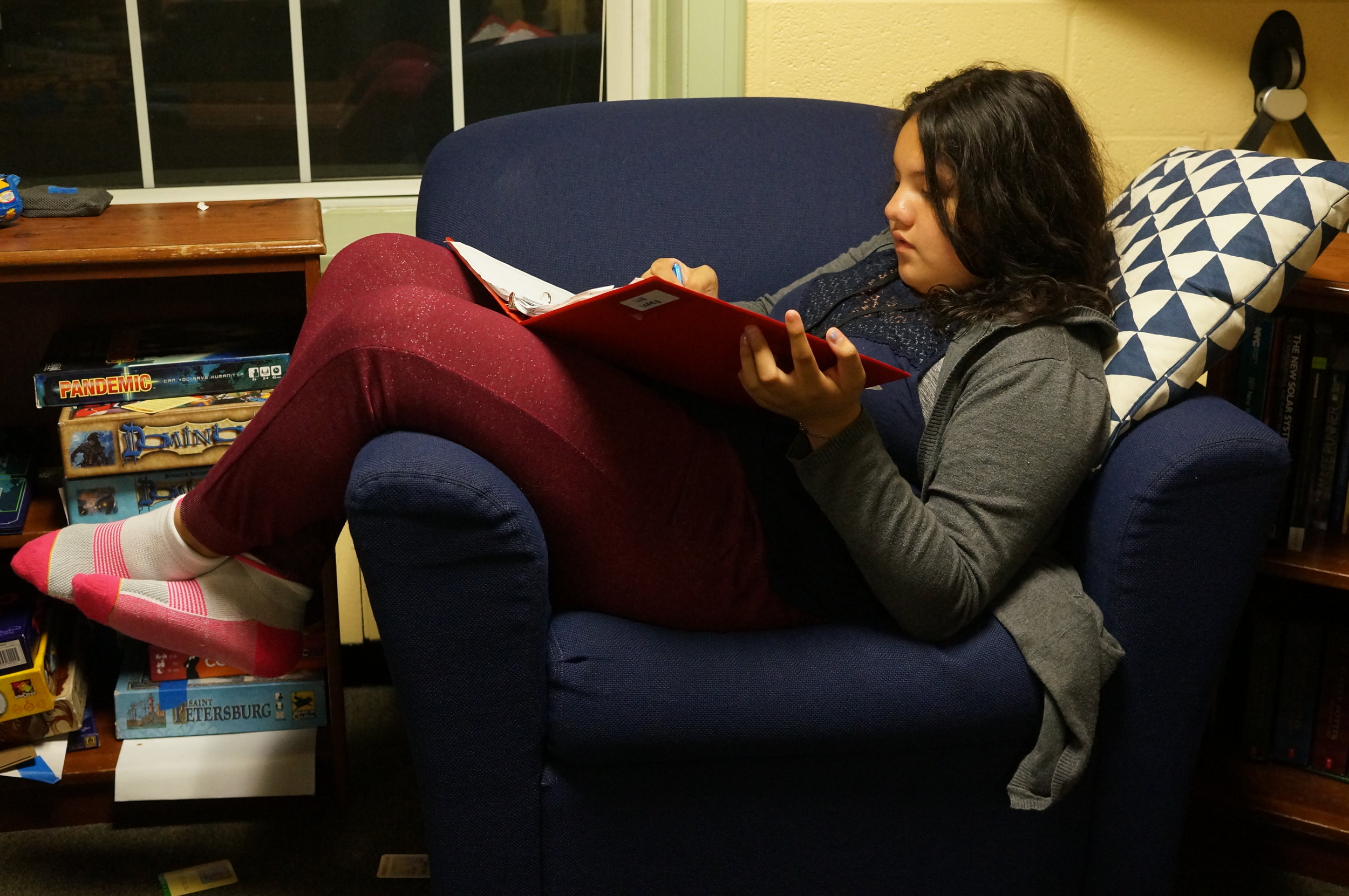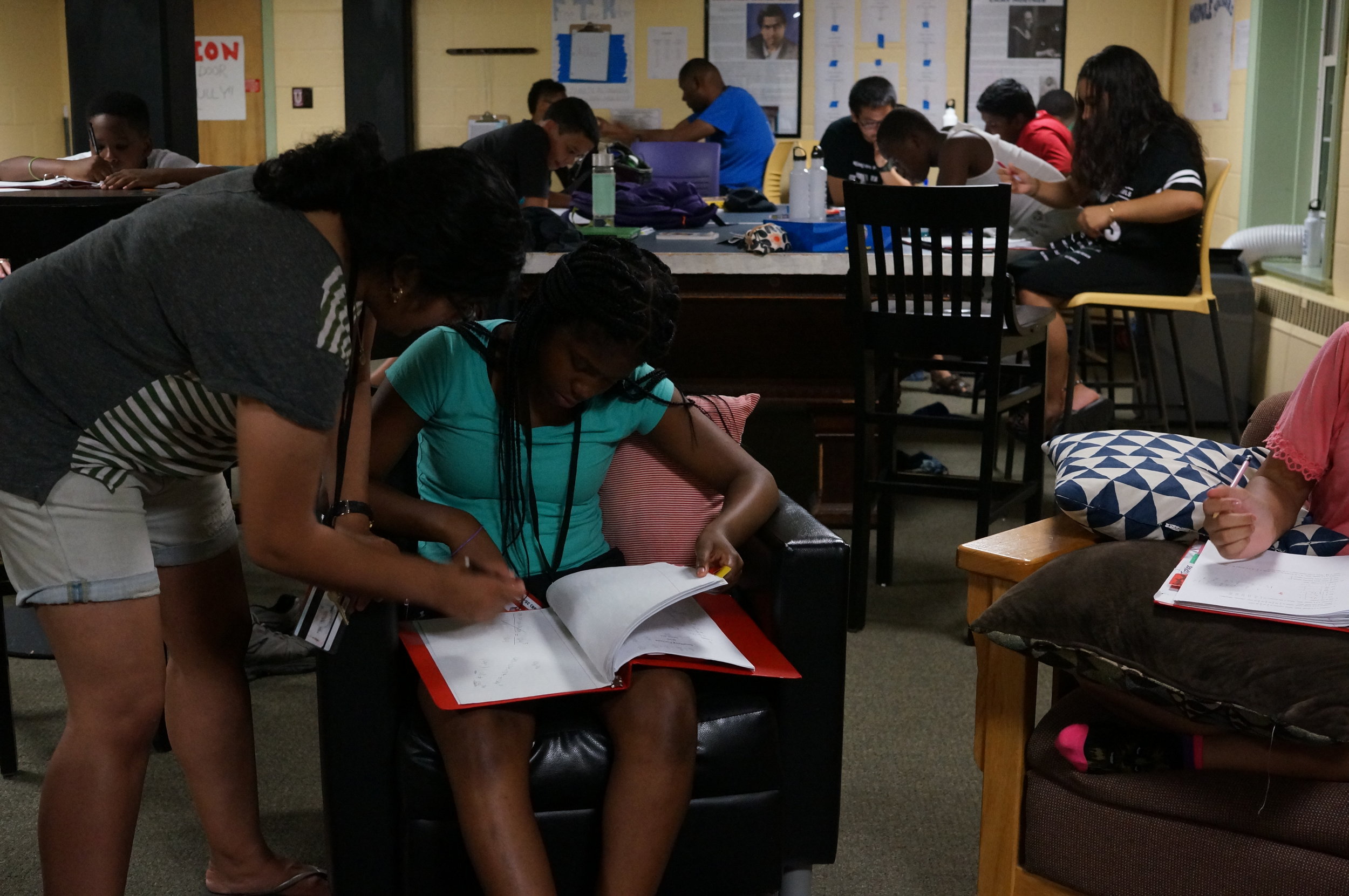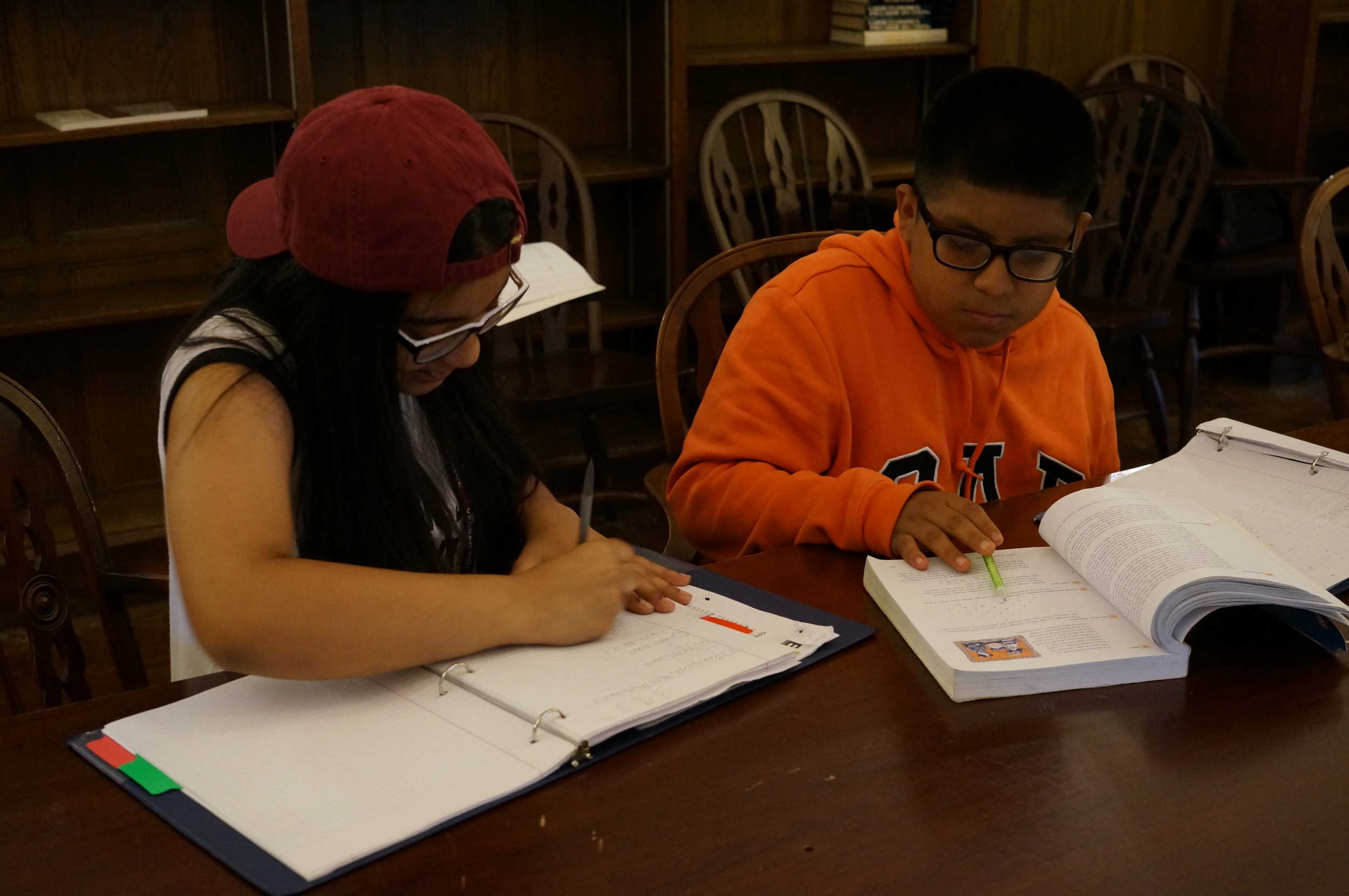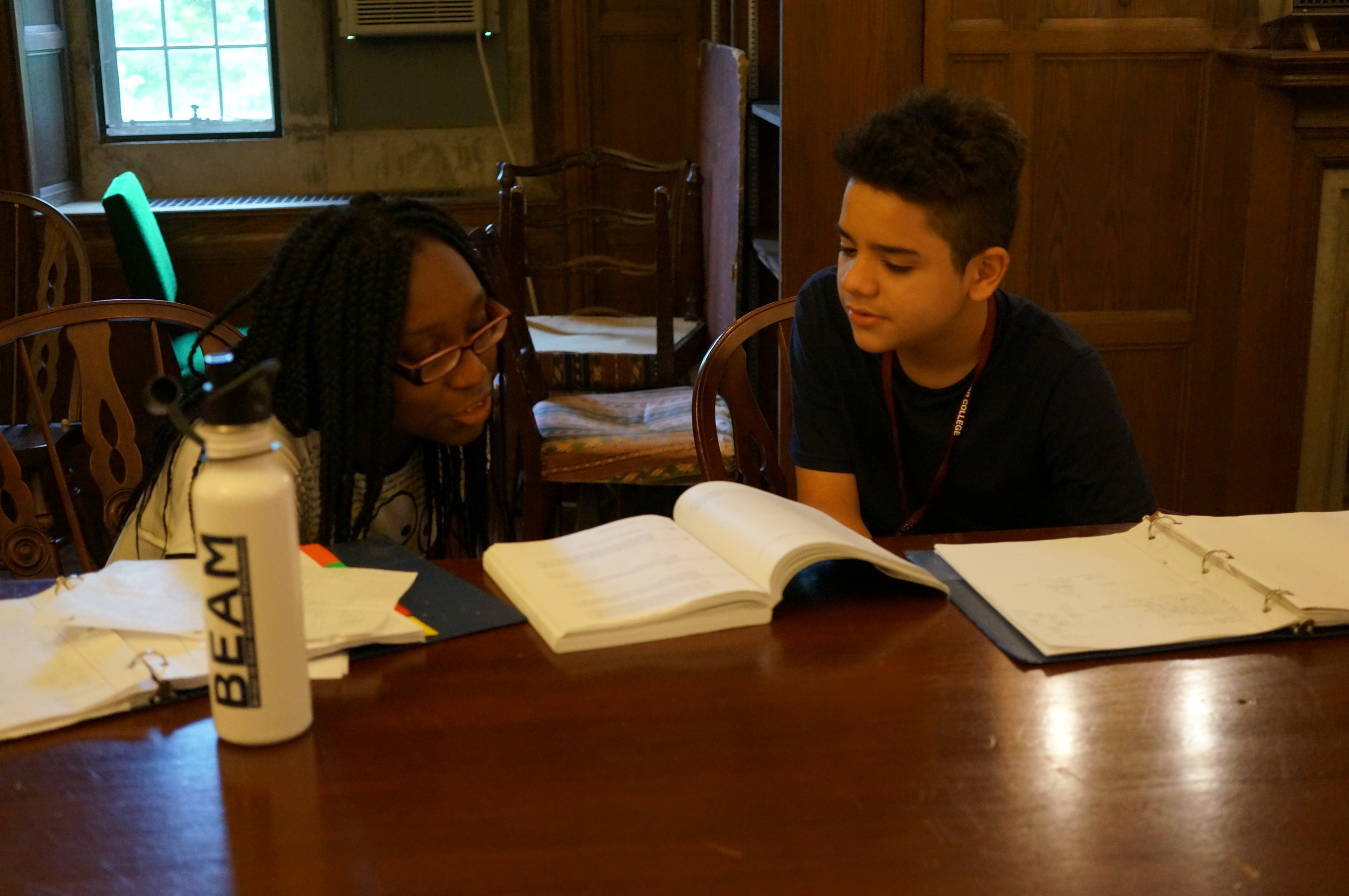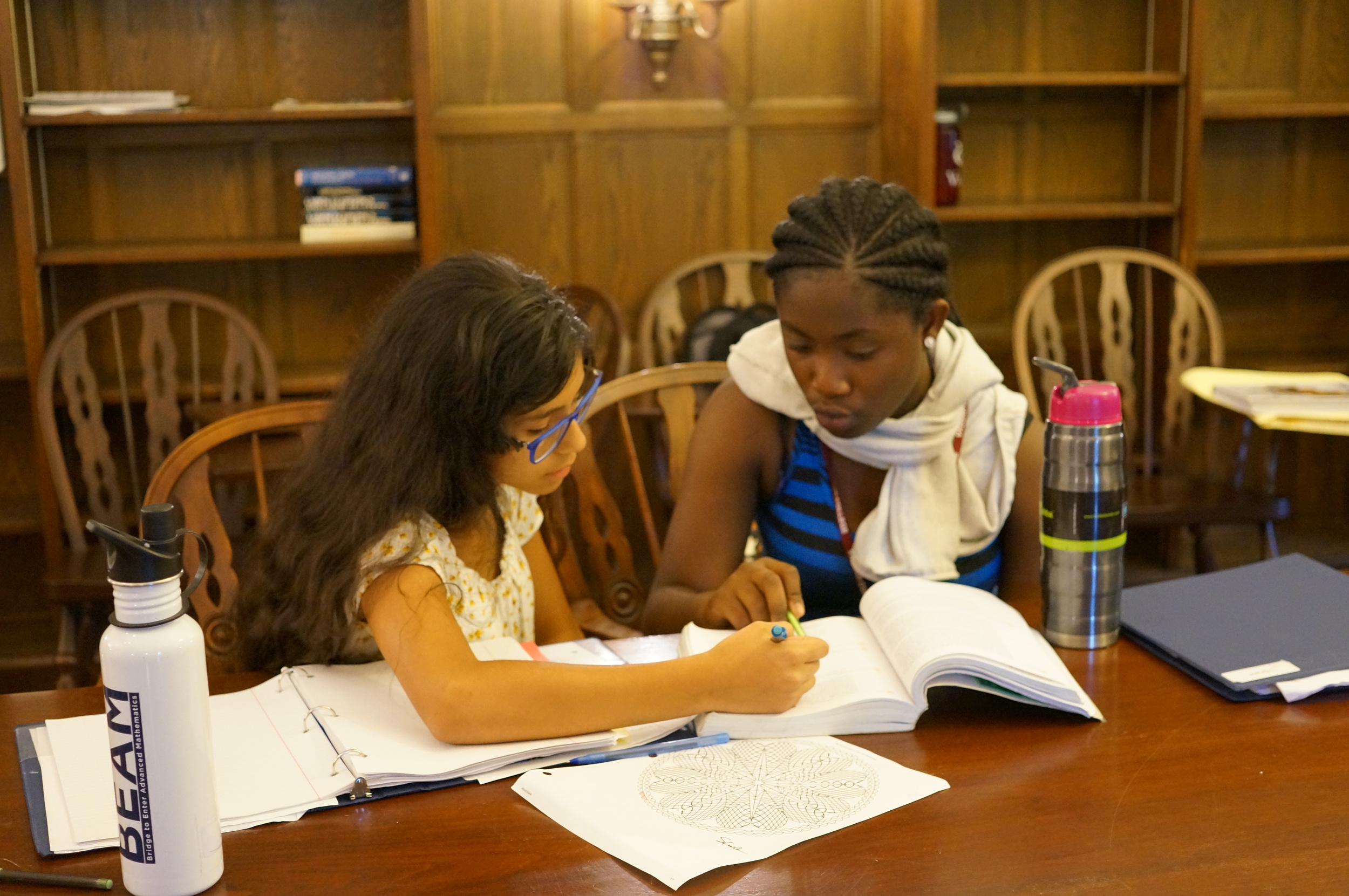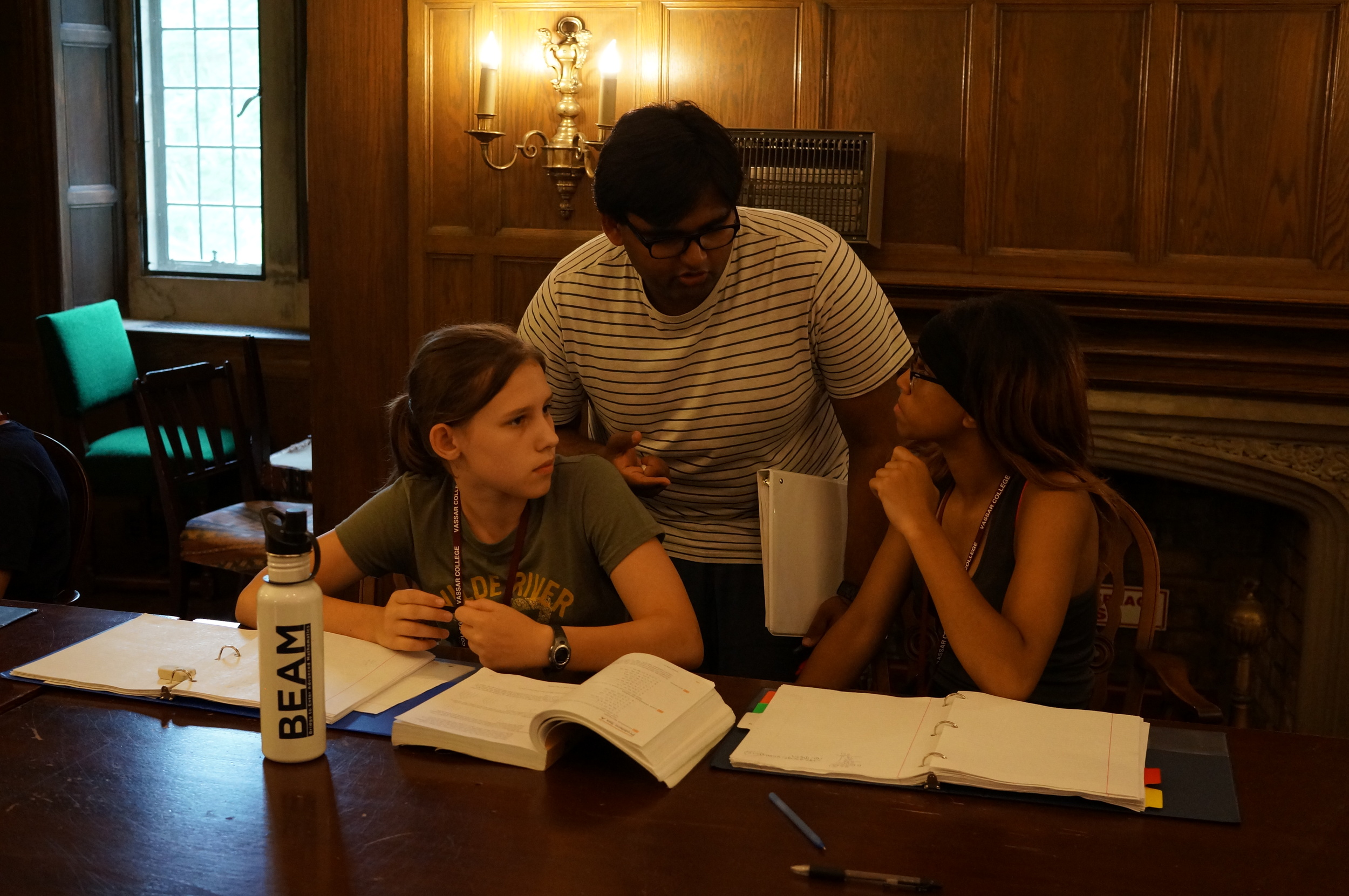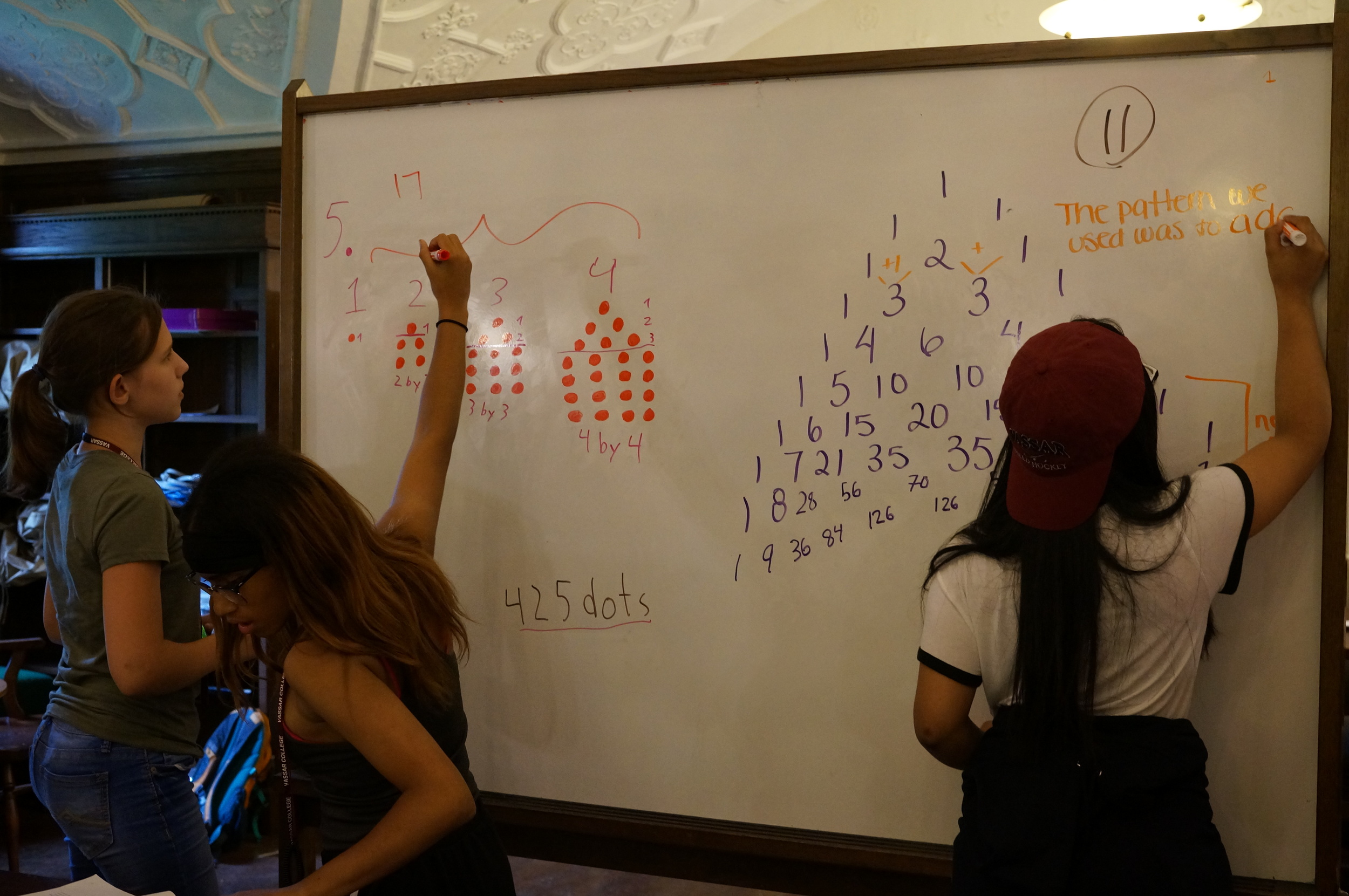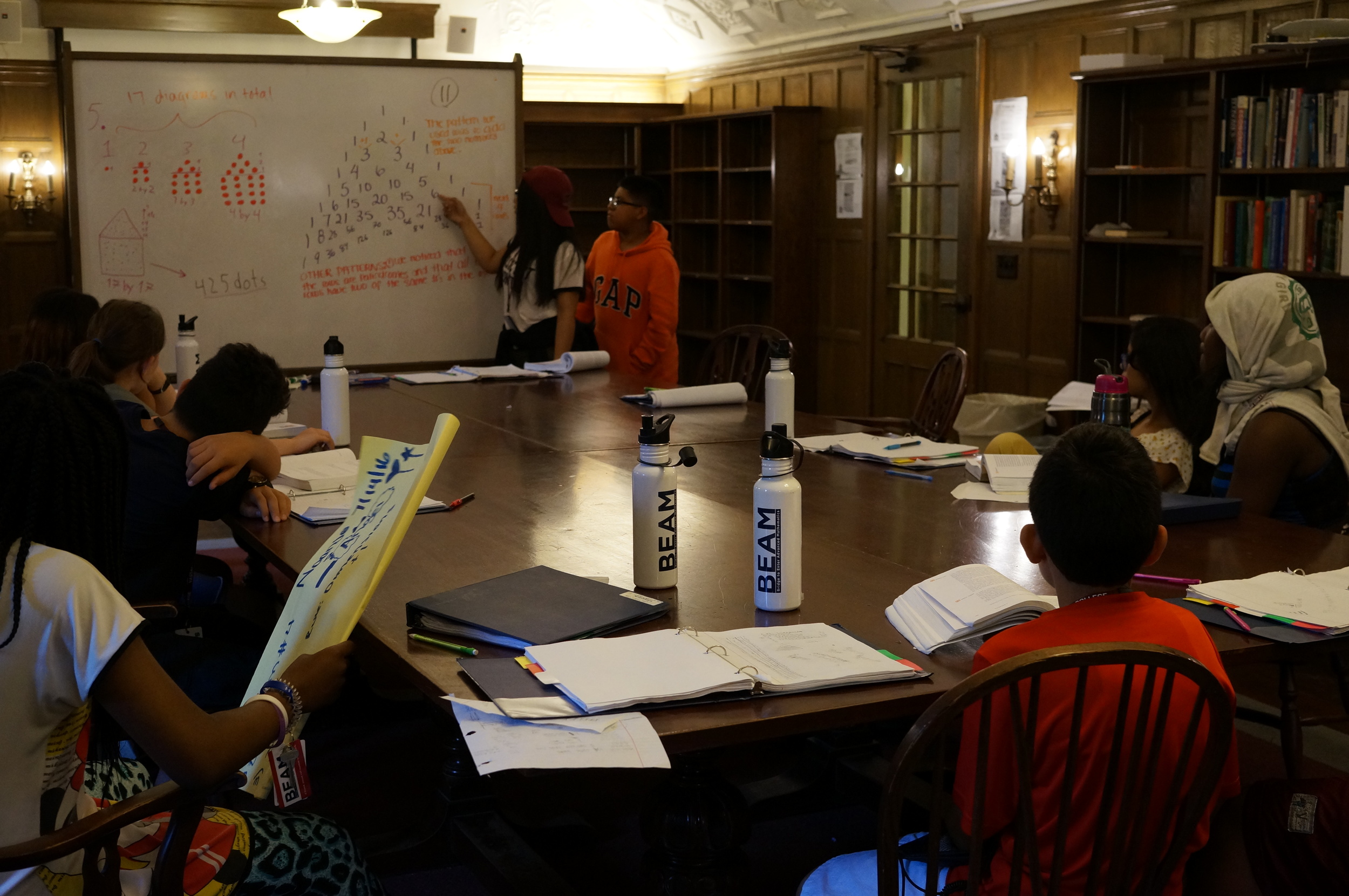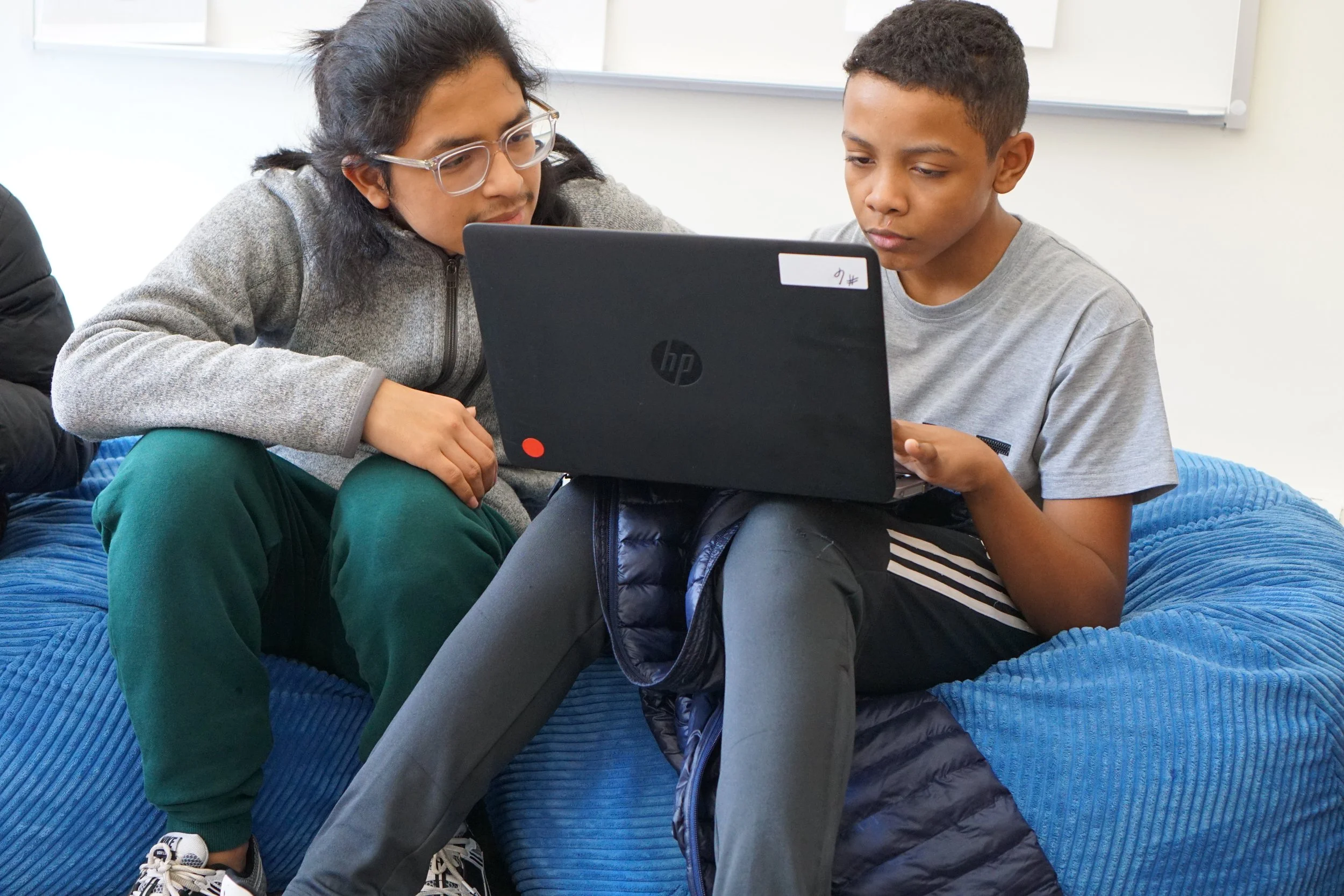
Welcome to the BEAM Blog!
BEAM 7 Students Look to the Future: Contemplating Careers in Math
When we ask BEAM 7 students what they see themselves doing as an adult at the beginning of the summer and then again at the end, their replies are always all over the map. Oftentimes answers change from one end of the summer to the other, and it can be hard to read from their response how their experiences at BEAM might have shaped the careers that they see for themselves in the future.
For example, mathematician is the only career that appears on both of Karen’s lists from before and after the summer; her responses seem to point towards a settled desire to pursue math. Meanwhile Amara only includes mathematician on his list at the end of the summer, hinting at a dramatic discovery of math. But their actual stories are more complicated, and at the same time richer: more reflective of what it really means and how it really feels to encounter advanced mathematics.
Amara doing a scavenger hunt, code-breaking activity.
Even though mathematician doesn’t appear among the careers that Amara can see himself pursuing before BEAM 7, his words on our opening survey already read like those of a budding mathematician.
I hope I become better and I want to achieve to become more of a person who likes challenge.
And when he writes about working on a math problem for days, it is clear that he is pressing towards that goal of embracing the struggle that comes with mathematics: It was so frustrating, but I never gave up.
John Urschel, former pro-football player and math PhD student at MIT, had something similar to say about his own earlier encounters with mathematics: It was so hard... And it was a struggle that I really loved.
Amara’s journey over the summer touches on a theme that is common to the study of advanced mathematics. Success in mathematics often means learning to love not just the mathematics, but also the toil that comes with it.
By the end of the summer, when we ask Amara what he likes about math, his response is a single word, one that captures the precise sentiments of many seasoned mathematicians: Challenging.
Karen folding origami.
On the other hand, Karen brought her desire to be a mathematician with her to BEAM and her goal to pursue mathematics did not waiver throughout the program. However, she did learn more about how it feels to pursue challenging mathematics, and the kind of community you want to have in your corner as you tackle difficult math problems.
This is what Karen had to say about what she learned at BEAM:
People aren’t really how you would think they are. There will always be someone with their arms wide open to pour feelings out to.
The larger mathematical community isn’t always a supportive one, especially for students of color. BEAM is out to change that, and we aren’t alone. Mathematicians of the highest caliber are beginning to recognize that humanity along with all her children, their history, their hurts and highest hopes, have a place in the midst of math. In the words of Francis Su, former president of the Mathematical Association of America and math professor at Harvey Mudd:
Math doesn’t happen in a vacuum, devoid of feeling or emotion. As Karen wrote about her experience working on a math problem for days: It was stressful, but after solving it I was satisfied.
Pursuing math is stressful! It is satisfying and rewarding and beautiful, but also (and often) stressful. The stress and the struggle are necessary aspects of pursuing math, worthy aspects of expanding the mathematical frontier. But the struggle doesn’t have to be a lonely one.
Every mathematician needs a shoulder to cry on from time to time, and that is what Karen found at BEAM, a community she can count on.
Only time will tell whether Karen and Amara choose to pursue being a mathematician as a future career, but they have already encountered currents that can carry them to the very heart of mathematics: the exhilarating joy of struggle and the strength of a supportive and understanding math community.
4 for 15: An hour of class at BEAM 6 Uptown
This month, we're welcoming three new full-time staff to BEAM! One of them, Alyssa Loving Jung, is BEAM's new Development and Communications Coordinator. She spent her first week at BEAM visiting BEAM 6 and wrote this blog post about her experience. Welcome to the team, Alyssa!
----
My goal is to sit in on four of BEAM 6 Uptownʻs math classes in a single hour. While I may have an advanced degree in mathematics (a Master's to be precise), it is an ambitious plan. I am eager to see what mathematics the BEAM 6 students will be tackling today.
----
To start off, I get to join the very beginning of a class that appears to be about exponents… or maybe number theory? I am not quite sure. On the board there is a question that immediately catches my eye.
What is the ones digit of 569,423^22?
I can't help it. I immediately start scribbling work in my notebook trying to solve the question. But as discussion swirls around me, I am pulled away from my attempts to solve the problem, curious as to what the students are coming up with. Students wonder out loud how to deal with a problem like this without doing a dizzying degree of multiplication. The instructor, Juan, offers a friendly warning that such an approach would take much more time than they have in class. Returning to my page of notes, I gather from my own work that the key to the problem lies in spotting a pattern and not getting lost in the cumbersome calculations.
Emily works during class.
Around me, I can hear students closing in on the pattern, and it is such fun that I must force myself to remember that I only have 15 minutes at most with them before I have to head to the next class.
Even before my time is up, one of the students is up at the board presenting an idea.
Collaborative mathematics, the courage to expose a budding solution, a still green idea, to an entire class of peers, is a crucial element of pursuing advanced mathematics. I am delighted that BEAM students are engaging with each other and their faculty like this. But glancing at the clock, I must tear myself away and head to the next class.
----
Here there is a very different sort of picture on the board.
There are intersecting circles drawn and numbers scattered about. A student is at the board placing a number with care. While the numbers seem haphazardly distributed at first, the thoughtfulness of the student is the first clue that something more is going on. Then I notice the labels: factors of 6, multiples of 6, primes.
They are exploring logic. The strange picture on the board I recognize as a Venn Diagram, a way to visualize the overlap and interplay between different sets.
They move on from the Venn Diagram on the board to start working on a sheet of problems. A student notices ambiguity in one of the problems. The problem asks them to explore the statement "not A or B". He wonders if the instructor, Sian, means "(not A) or B" or rather "not (A or B)".
The whole class takes time to investigate this subtlety. The process reminds me of writing math proofs during graduate school. Oftentimes the tiniest turn of phrase, the most minute missing detail, can make or break a complex mathematical argument. I am excited to see that the students are taking such care with the reading and writing of mathematics. But it is time for me to move on to my third class.
TA Amaya works with student Karen on a problem set during Open Math Time.
----
Yorlan works on an advanced geoemetry problem.
This class says Geometry and Logic in the corner of the chalkboard at the front. Apparently, it is another class on logic, but now there is geometry thrown into the mix. I am intrigued.
The instructor, Xavier, is energetic and he calls each student by name as he peppers the room with questions.
He wonders how we can figure out what c is when we know c^2=8. A student calls out that c is the square root of 8.
Xavier follows up, smiling, to see if Eduardo was just guessing, but no:
"No, I didn’t guess..." Eduardo responds, "It's 'cause taking the square root is the opposite of squaring something."
I am impressed that in one sentence Eduardo has gotten at the heart of what mathematicians mean by inverse equations. It is a concept that can confound even college students. But I can’t stay for more insights today.
----
I am off to my final class. As I slip into my seat, I am startled to see scrawled across the board: "Are there Aliens in the Milky Way?"
A massive equation containing many letters is sprawled somewhere beneath it. The students are clearly in the process of grappling with the equation and what it means. The instructor, Susan, asks them to replace L = (1/10)^8 in their previous calculation, with L = (1/10)^2. Immediately, diligent pencil-scratching begins, heads bent, eyebrows furrowed with concentration.
This is what I call the "dirty work" of mathematics. Complex computations don’t encompass what mathematicians do. Mathematicians are much more than mere human calculators after all. But such calculations do form an important aspect of the job of many mathematicians and scientists. BEAM students in this class are building the patience and the stamina to handle even very complex formulas, and learning some mind-boggling astronomy at the same time.
Taro, a TA, observes Jamal as he contemplates a large numbers.
Meanwhile, I have set a new personal record for how many classes I have attended in one hour, and better yet I have had the chance to think about some really cool math. I cannot wait for what the next hour of BEAM 6 has in store!
----
Curious about the classes that Alyssa visited? BEAM 6 students all take classes in our four topic areas: Math Fundamentals, Logic, Math Team Strategies, and Applied Math. Within each topic, students get to choose from a menu of classes, so they each take a class that inspires their curiosity. In the mornings, when Alyssa was visiting classes, students were in either their Math Fundamentals class, which explores the why of elementary math, or Logic class, which focuses on how to justify your reasoning. Juan and Susan were each teaching Math Fundamentals courses, while Sian and Xavier teach courses in the Logic track.
Here are the full course descriptions for the four classes she visited!
Exponents: The Super-Powers of Numbers! (Juan)
Using the power of multiplication, we will build some really, really big numbers and compare them to see which ones will turn out to be the biggest. We'll also explore a strange planet which only has 11 numbers in it!
Cryptarithms and Other Arithmetic Puzzles (Sian)
If A + B = AC, then what is A + B + C? Cryptarithms are math puzzles where the arithmetic is simple but the "thinking part" of the puzzle is challenging. We will start with simple problems and build up a tool chest of logic strategies for solving these problems and all math problems.
Geometry and Logic (Xavier)
Ever look at a problem and not know where to start? This class will develop your ability to solve complex problems. We will learn how seemingly incomplete information can be combined to form complete solutions.
Big numbers, Small numbers, and In between (Susan)
Imagine you have a very long number line, with every number you’ve discussed this year in school on the number line. A new number is introduced. Where does it go? Are you sure? In this class, we will use a variety of tools (brain power, rulers, logic, and more) to identify the big numbers, the small numbers, and the ones in between.
There's a lot going on at BEAM 6 NYC!
BEAM 6 NYC has been underway for three weeks, and the students and staff have a lot to show for it! Since the first Monday, binders have been decorated, balls have been spiked, mafia members have been investigated- and that’s all just in activity periods!
For staff members, the fun started a week before the program for setup where they turned New Design High School (NDHS) into the official BEAM 6 Downtown site. There they taught each other new strategies for problem-solving and how to support students throughout this five-week program.
The program officially kicked off officially on Monday morning when the students met with their travel groups (or traveled alone) and came to NDHS. Upon arrival, the students got to know each other, the staff, and an overview of the program.
Throughout the rest of the week students were able to experience four types of classes that they’ll be in for the rest of the program; Logical Reasoning, Math Fundamentals, Math Team Strategies, and Applied Math. Each of these topics have different instructors and each instructor teaches a different course, so there’s never a dull moment during lunch when the students talk about what they learned earlier that day.
All in all the students have had a great start of camp and made connections that will last them throughout the program, and hopefully throughout life!
Check back soon for another post soon: Staff profiles!
Weekend Fun and our Start of week 2!
Week one has come to end and it is time for some off-campus enjoyment!
As the well-anticipated end of the week arrived, BEAM students prepared themselves for a weekend full of activities. Upon Monday morning's arrival, as a part of their daily routine, students headed to the dining hall prepared to stack up on the nutrients which that will help them power through the busy day. After breakfast and a few turns of water bottles filling, kids made their way to the coach bus-- now fully ready to embark on their mini road trip.
After both check-ins at the water park and applying sunscreen, our young adolescent campers divided into small groups. While in their well-supervised small groups, they then made their way to water slides exploring what the park had to offer.
When lunchtime arrived at around 1 PM, we once again, gathered as a camp, ate, and then, prepared to head back to Bard College. At the end of this fulfilling day, tired bodies guided themselves to bed expecting to be well rested for days ahead of them.
At BEAM, Tuesdays mark the start of a new week. Just a day after their water park fun, BEAM students were mentally ready to go in their classes and hold class discussions on Symmetries and problem-solving theories. When completely submerging themselves into their classes either as a group or as individuals, these students have shown an immense amount of improvement.
We applaud the hard and effort applied by every student. As we approach our last week of camp, we can only encouraged that this habit continues to be practiced beyond BEAM.

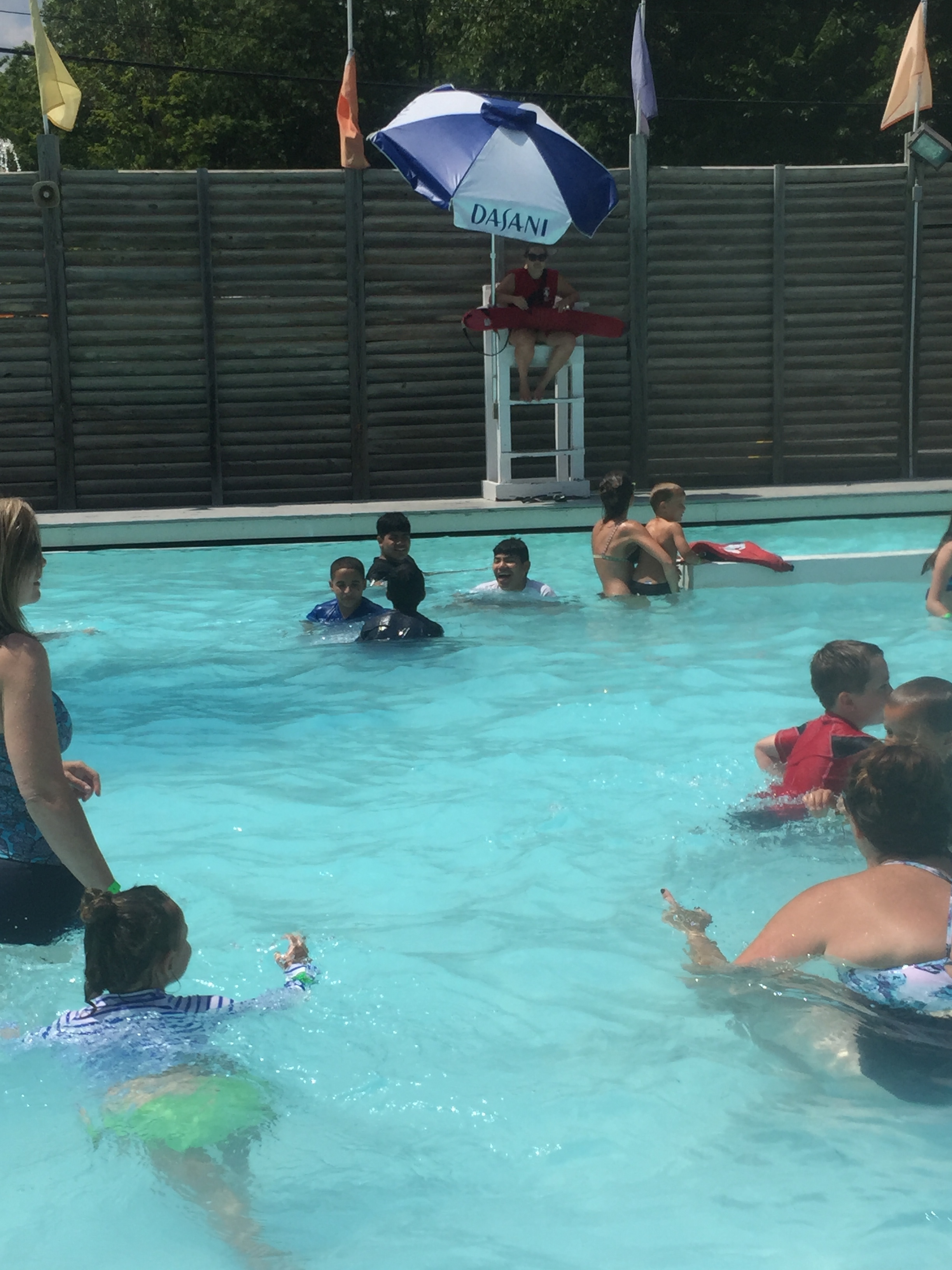



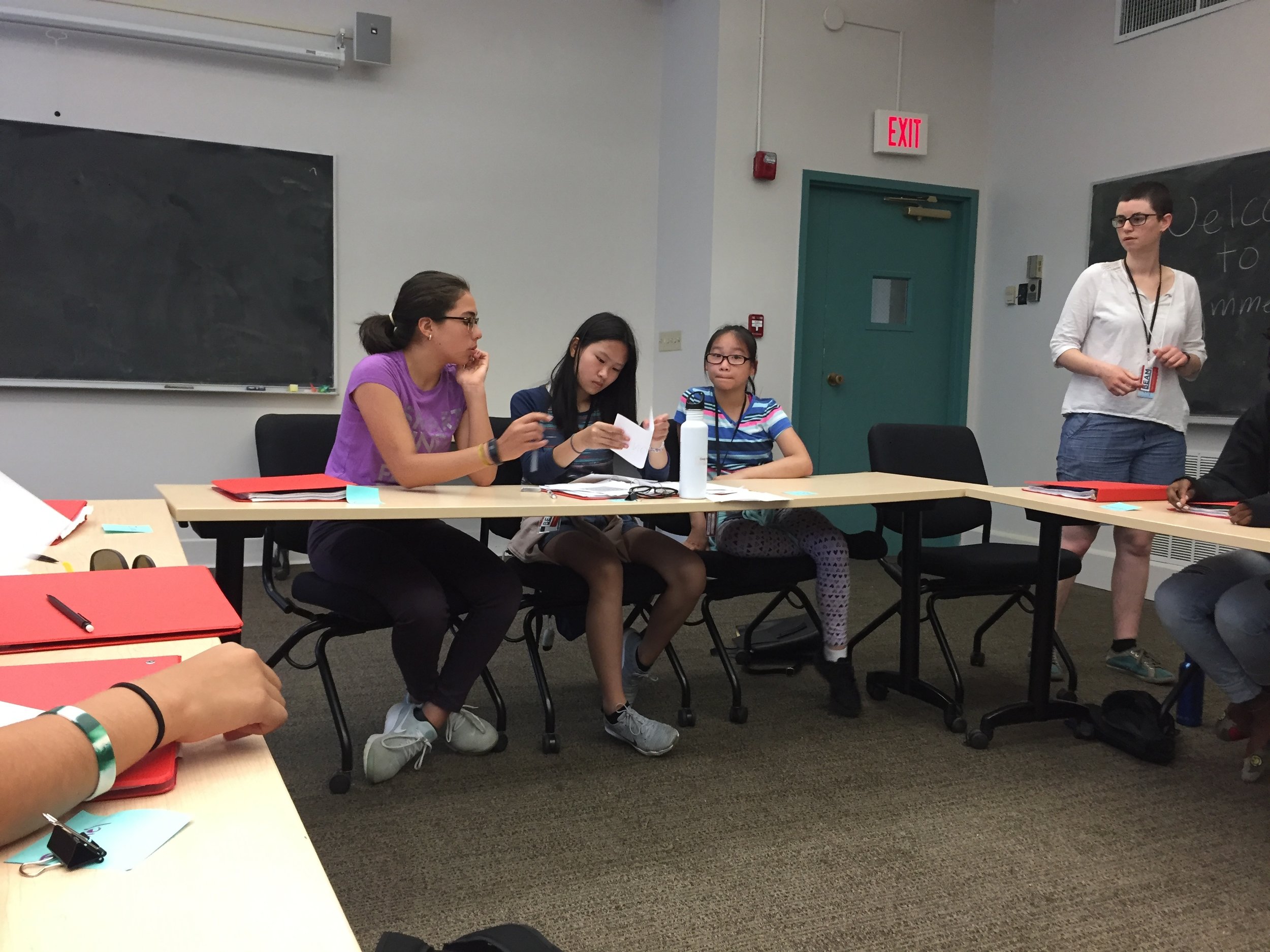

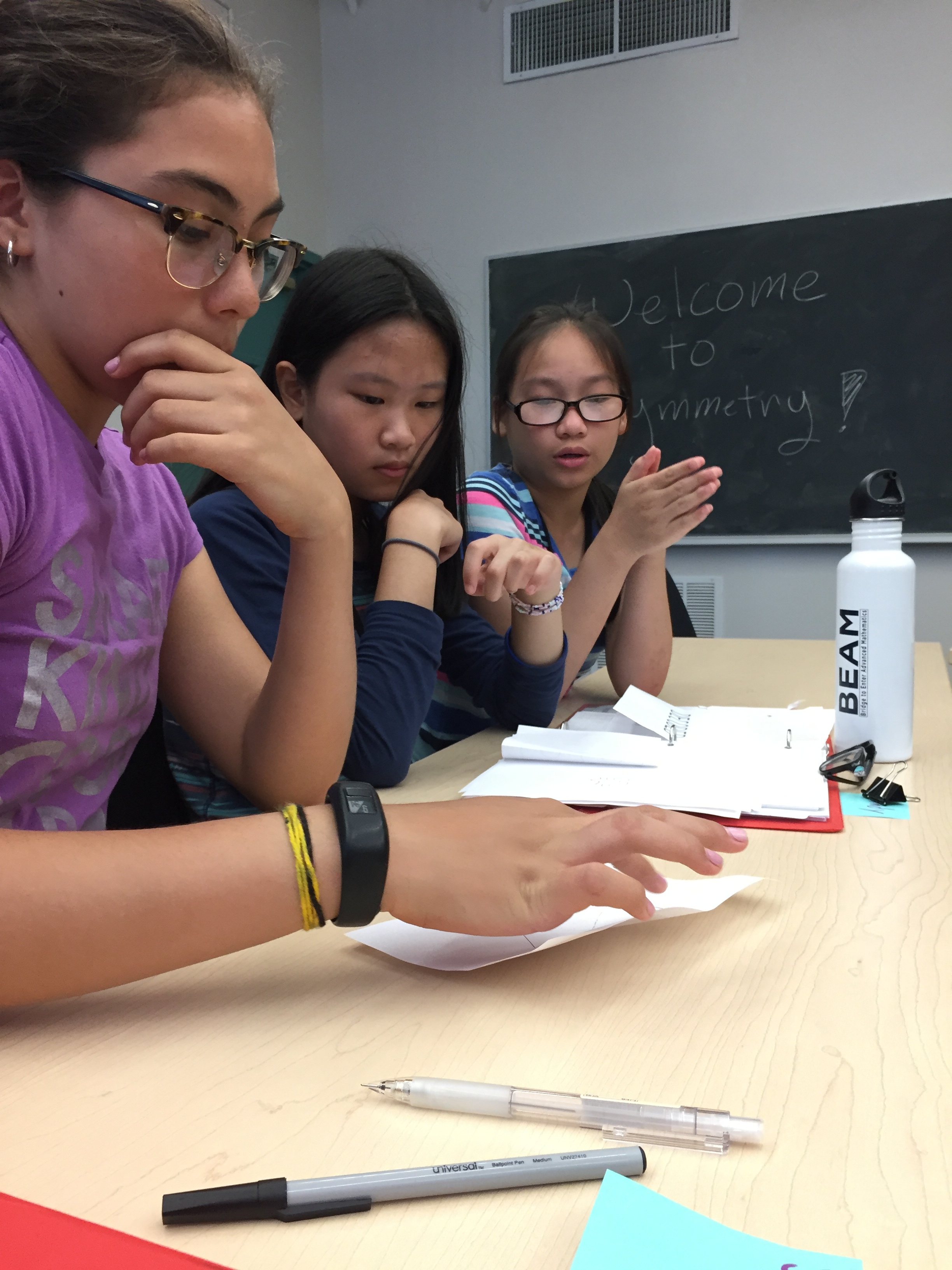

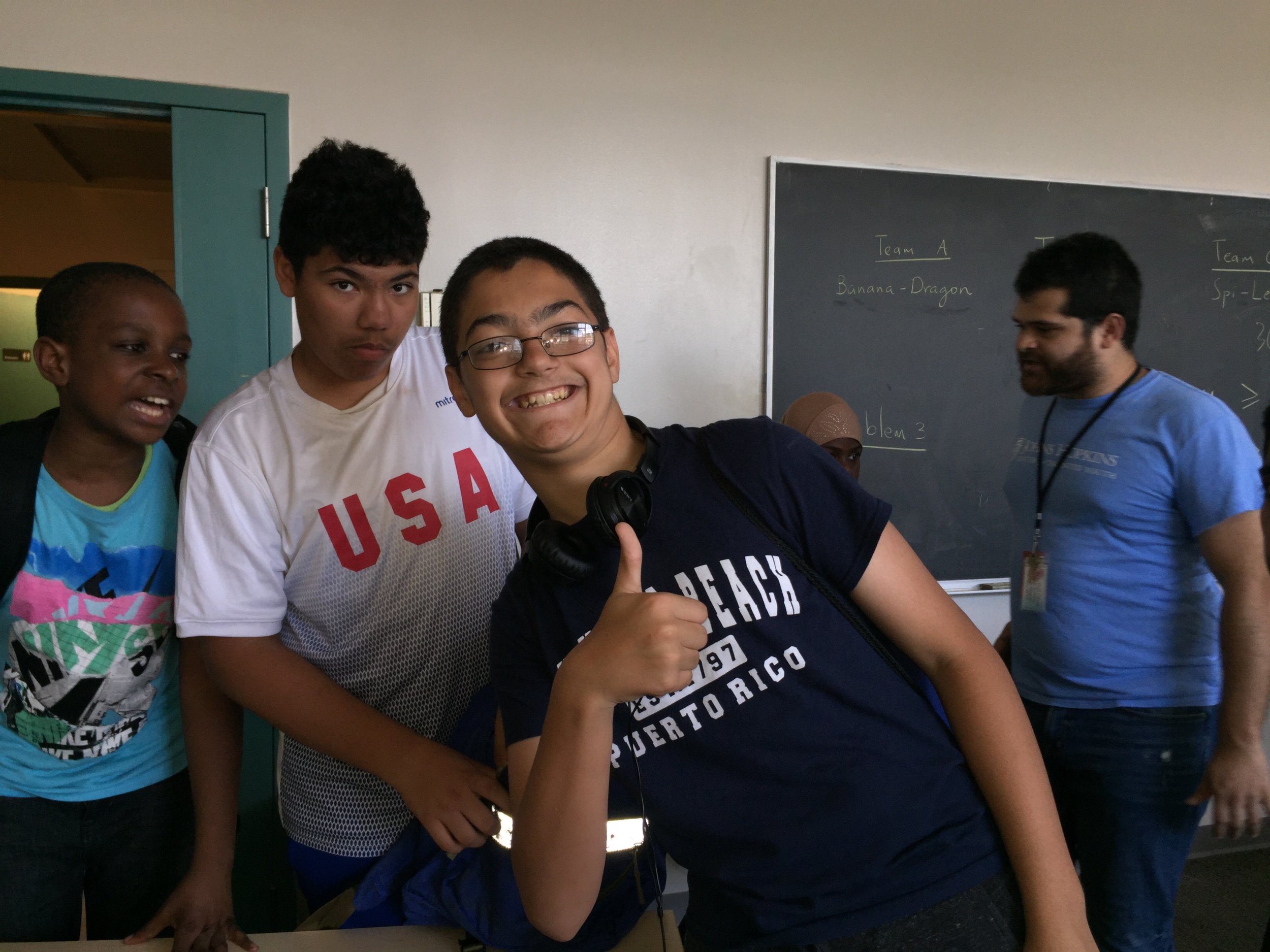

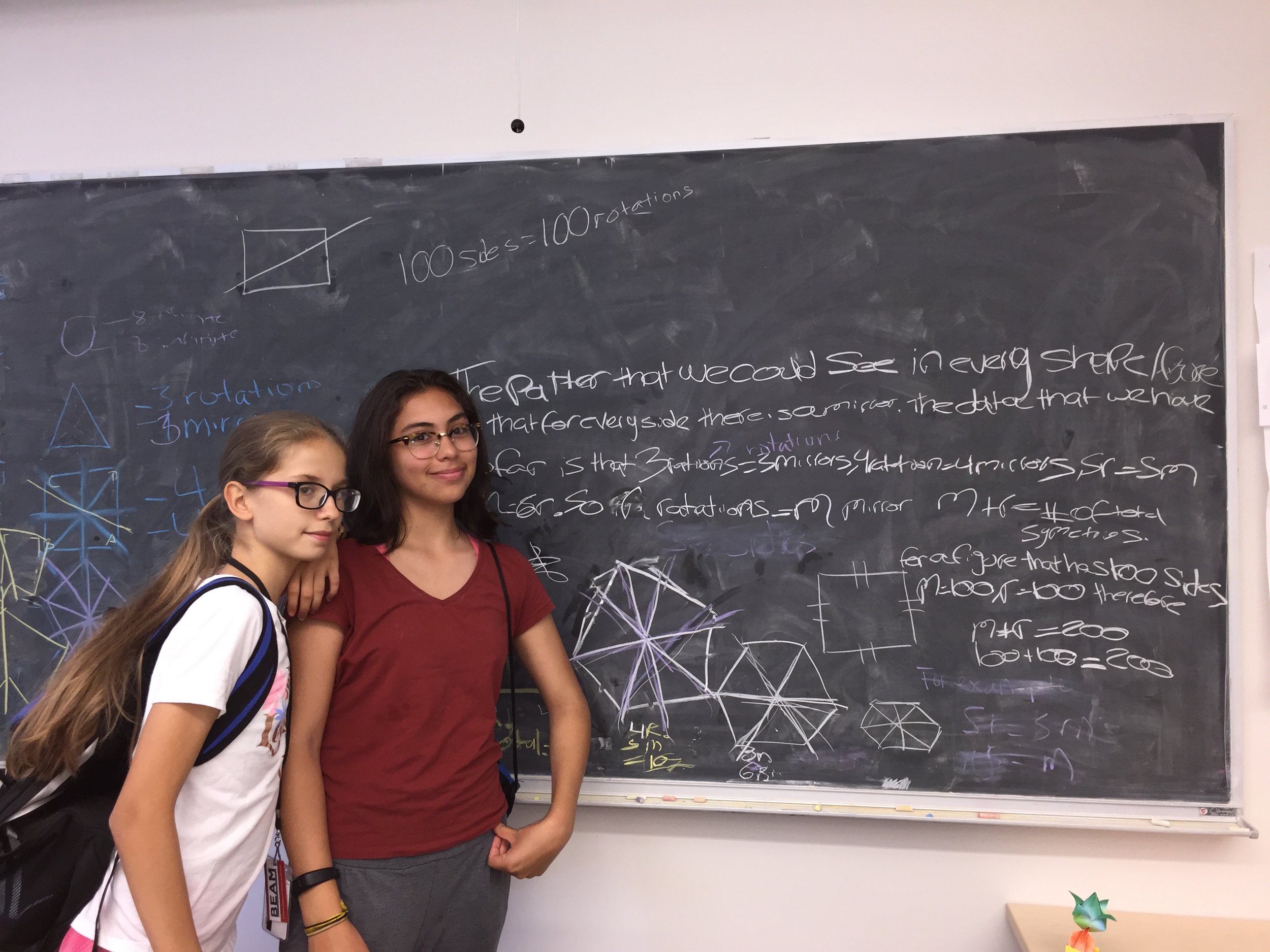

Week Two Surveys
Analytic Number Theory featuring Jack, Anais, Madjara, TA Bobae, Kathy, and Sam
It's already week three at BEAM 7 (where did the time go?!) so we're looking back on some of our survey responses from week two. Here's what students had to say about their classes and BEAM 7 in general:
What was good about Analytic Number Theory?
- I like how I came into class knowing nothing about this topic and coming out of it learning so much.
- The calculus.
Zeina and Rose code together in Arduino.
What was good about Arduino?
- That it was challenging but I was able to learn a lot.
- It taught both genders how to love to code: (girls who code) <- not many! (I might be next)
What was good about Cryptography?
Mekhi works on Cryptography with John and TA Fred in the background.
- I really liked the debates the class got into regarding mathematical concepts.
- Everything.
What was good about Infinity?
- I loved how we finally solved our theories and definitions of "infinity." Now I know what it is, and how to use it.
- Everything, for example learning what a number actually is.
Chloe and Emmanuela work with instructor Kenny during Math Team Strategies.
What was good about Math Team Strategies?
- I liked how it helped me explore many math competition problems and it helped me learn alot about interesting strategies to solve them.
- I learned a lot of ways to solve different types of problems very quickly.
What was good about Solving Big Problems?
Alisa and Angie pose with their work after Solving Big Problems.
- I like all the interesting questions thrown our way and how we learned from each one.
- It made us keep questioning everything.
- It made me think in different ways.
Do you have any other comments on BEAM 7?
- This program is awesome!
- It is an awesome program, and I hope that there's a BEAM 8!
- I like this program.
- I love it. I will miss everyone.
- Nope. Thank you. ⭐⭐⭐⭐⭐
- It's awesome; make it longer.
- It's great so far.
- Make Beam 8.
Spotlight on Classes: Analytic Number Theory
Each week, the students are able to list their preferences for which classes they would like to take. They take one course for four hours a day, and another for two hours a day. Each week, new classes are offered and the students have the opportunity to immerse themselves in different advanced mathematical topics.
While each of BEAM’s classes explores incredibly interesting and advanced ideas, we’ve put together a spotlight on just one of the six courses offered this week: Analytic Number Theory with Cory.
The class has just seven students, with a teacher and a teaching assistant—the kids get to really get to know one another and the staff members! In just three days, the class has gone from not knowing what a function is to being able to find the limit as n approaches infinity of f(n) = (-1)n/n: zero. The students are basically doing calculus without using the word “calculus” itself!
Sitting in on the class, what is most impressive to our staff, even more than the sheer speed and intensity of the class, is how engaged each student is. Cory will give short lectures, but for a majority of the class, the students work in small groups in order to work on difficult problem sets. Mostly, they are teaching themselves the topics! Today in class, we were beyond impressed to see how each of the students was able to find patterns and draw conclusions from sequences of numbers.
When Anaís and Cynthia talked about the class, they said that they couldn’t believe how much they were learning in such a short period of time!
Jack agreed, saying: “I’ve learned more math in the past three days than I did in the last two months.”
Cynthia, Jack, Anaís, and Alvin work together on the board
Week two classes are now officially over at BEAM 7 Union College. We can't wait to see how much learning takes place in week three!
A Day in the Life of BEAM 6
It's Friday which means we are nearly 20% of the way finished with BEAM 6 Los Angeles 2018. Where did the time go??
So, what is a week like at BEAM 6? Each day features:
- Breakfast
- Morning class
- Open Math Time
- Activities
- Lunch
- Afternoon class
- Open Math Time
- Activities
Let's dig deep on each of those blocks!
The day begins with a balanced breakfast, served a la carte in the cafeteria.
Academics
Then, it's off to class! Students at BEAM take four classes, one each in the following tracks: Logical Reasoning, Math Fundamentals, Math Team Strategies, and Applied Math. At the beginning of the summer, students selected which version of each class they wanted to take. Their options were:
- Logical Reasoning:
- KenKen Puzzles and More
- Ultimate Brain Puzzles!
- Elementary, My Dear!
- Liars, Truthtellers, and More
- Math Fundamentals:
- Fractions and Food
- Exponents: the Super-Powers of Numbers
- Patterns, Lines, and Number Rules
- Applied Math:
- Introduction to Cryptography
- Voting: How to Run a Country
- Computer Programming
- Math Team Strategies:
- Using Patterns to Solve Problems
- Counting Without Counting and Fantastic (Number) Beasts
- Words, Meet Numbers: An Algebra Story
Don't those sound fun? How did students choose?? Each instructor gave a course description and a sample problem! Here's one set to consider!
Elementary, My Dear!
Course Description:
Ever wonder how detectives like Sherlock Holmes solve complicated mysteries? It's all in the details. In this class we'll explore the different techniques used to solve complicated riddles and how to apply them in tough mathematical problems.
Sample problem:
Mr. Red, Mr. Blue, and Mr. White meet at a restaurant for lunch. Under their coats they are wearing either a red, blue, or white shirt. Mr. Blue says, “Hey, did you notice we are all wearing different colored shirts from our names?” The man wearing the white shirt says, “Wow, Mr. Blue, that’s right.” Can you tell who is wearing what color shirt?
Open Math Time
One of the big goals of BEAM is that students spend time doing math they enjoy! So, during Open Math Time, students get a menu of options they can pursue. We encourage students to keep going back to this menu of options during 7th grade, whenever they're looking for a challenge! During Open Math Time, students might:
- Reinforce learning from their classes with Problem Sets
- Try out the weekly challenge problem
- Work on the 100 Problem Challenge (more on that later!)
- Explore the Art of Problem Solving, probably by checking out Alcumus
Students can work independently, or in groups! It's really up to what makes each student the most productive.
Activities
Morning activities last for the whole week! They're a time to learn new skills or spend a whole week on a passion. This week's options are:
- Board Games: Old classics and new!
- Decorate Your Binder
- Watch the World Cup: Watch live and old soccer games!
- Learn to Solve A Rubik’s Cube
- Rooftop FUN: Steal The Bacon and Sharky Sharky
- Learn to Play Settlers: A trading and building board game set in the mythical world of Catan!
- Learn Dominion: A strategy card game where each time you play it’s different!
Afternoon
Then, it's on to lunch (buffet catering from local restaurants), the next class, the next block of Open Math Time, and afternoon activities, which change every day.
All in all, it's a busy, exciting day, and we'll have much more to share over the upcoming weeks!
A Day in the Life of BEAM!
What are students up to at BEAM 7? Follow us through a day at Union College!
First, classes! This week, students are taking the following classes:
- Exploring Infinity
- Numbers, Patterns, and Proof
- SET and Combinatorics
- Logic and Proofs
- Solving Big Problems
- Math Team Strategies
Here are some photos from classes!
In the morning and the afternoon, students take activities: we offer sports, arts & crafts, library time, yoga, and so much more! Check it out:
We're loving the meals at Union! Check out all these smiling faces at lunch:
In the afternoon, students have class, activities, class, then dinner.
After dinner, we return to the dorm for evening free time:
We cap out the day with Modules -- independent study designed to build stronger foundations in elementary and middle school math so students are even more ready for advanced math in the future.
Then, it's off to hall meetings and then bed, so we're ready for another day of BEAM!
Week 3 Class: Aerodynamics
This is a guest post by Matt Weber, our Math Team Strategies instructor.
I walk into Cory Colbert’s Aerodynamics class and find the students working on vector addition and subtraction, a topic not normally taught till 11th grade Pre-Calculus. A discussion among one group of three strikes me as highly representative of the BEAM attitude: a problem has asked them to “verify” a particular property of vectors, but one student, a veteran of the Proofs class from the first week, is not satisfied with the single numerical example they have used. We get into a discussion of the difference between verifying with a numerical example and truly proving something: since this class is geared more towards pragmatic applications, verification is enough—for now, anyway.
Cory is having the students work through several examples using both a geometric representation of the vector combinations on a graph, and a purely numerical approach. The point is to show that they have the same result, so that the students can feel comfortable using the “shortcut” of just adding or subtracting the vector components—even without a formal proof, it’s a robust way of making sure that at BEAM, no one is ever asked to accept something solely on the teacher’s say-so. This program gives teachers and students alike enough space and time not to rush, to become comfortable enough with one set of tools to be able to use them fluently in new situations.
Speaking of which: why is Cory teaching this particular topic? After the students reassemble from a short break, he reveals the reason, with a presentation on the relationship between vectors and forces. (“What’s a force?” Cory asks. “...I will accept at most one Star Wars reference.” A student quickly obliges by quipping that the answer is “Yoda.”) The class settles on the idea that forces cause objects to move.
There are two pairs of opposing forces acting on a plane in flight: lift versus gravity, thrust versus drag. He starts with a discussion of gravity, neatly dodging a potential derailment about whether or not the “theory of gravity” has actually been “proven.” And this is why they need to understand vectors, to represent these four forces. A student question gets at the heart of the matter: “How does it generate lift if the propellers are on the side?”
A brief discussion ensues, covering space travel, escape velocity, aerodynamics, and related matters. One student mentions that it takes much less fuel to get from orbit around the Earth to the Moon, than it did simply to leave Earth and get into orbit around it. Cory says that by the end of the class, they will be able to explain why. But the immediate next topic is to understand why a box resting on a table doesn’t move, if the force of gravity is the only force acting on it. This is a surprisingly subtle question, since we don’t normally think of tables as exerting an upward force—but they do! Meanwhile, Cory’s provocative questions lead the students to, in essence, figure out Newton’s Laws of Motion for themselves, at least in a qualitative sense. After vectors, these Laws are the crucial next waypoint in their flight of discovery.
Week 1/2 Class: Math Team Strategies
How do strong mathematicians think? How do they work? That's the goal of our problem solving classes at BEAM!
At the beginning of the program, students got to choose between Solving Big Problems and Math Team Strategies. In Math Team Strategies, the goal is to prepare for math competitions, like MATHCOUNTS, the AMC 8, or Purple Comet. Math competitions and math teams praise clever, efficient thinking, finding solutions and shortcuts that save time and still make mathematical sense!
In class, students were working on problems like the following one, combining their knowledge of geometry and number theory:
And here are the students hard at work, trying to break the problem down and explain their solution.




